
Welcome, and thanks for coming along!
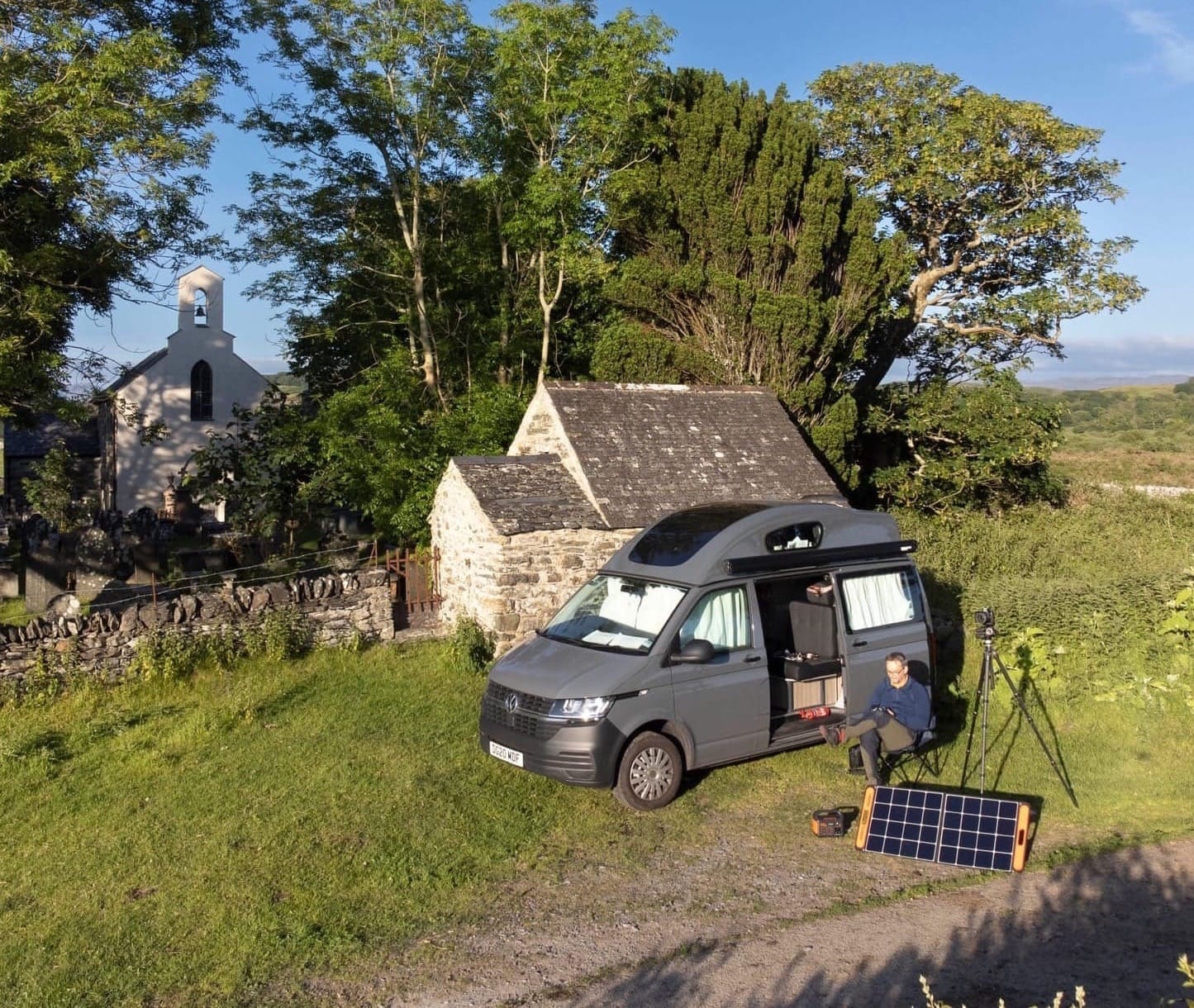
I'm an architectural photographer. I travel around Britain interacting with special places. I work from my camper van called Woody and I share my experiences via this digest.
⚡️ View the latest digest and the full archive here.
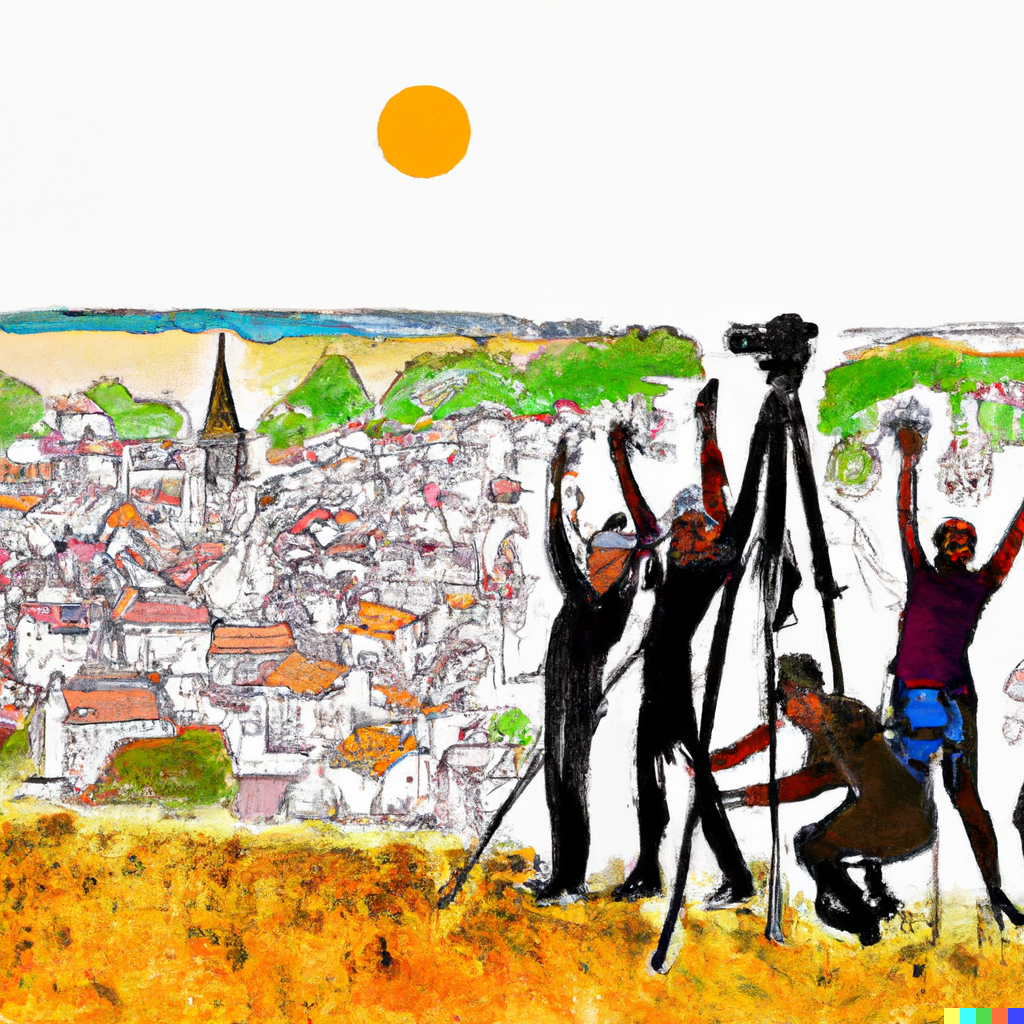
This Digest is free to subscribers and is powered by 100 Members
Member Powered Photography...and I asked the door what was its fave pop song and the door sang: 'YMCA'
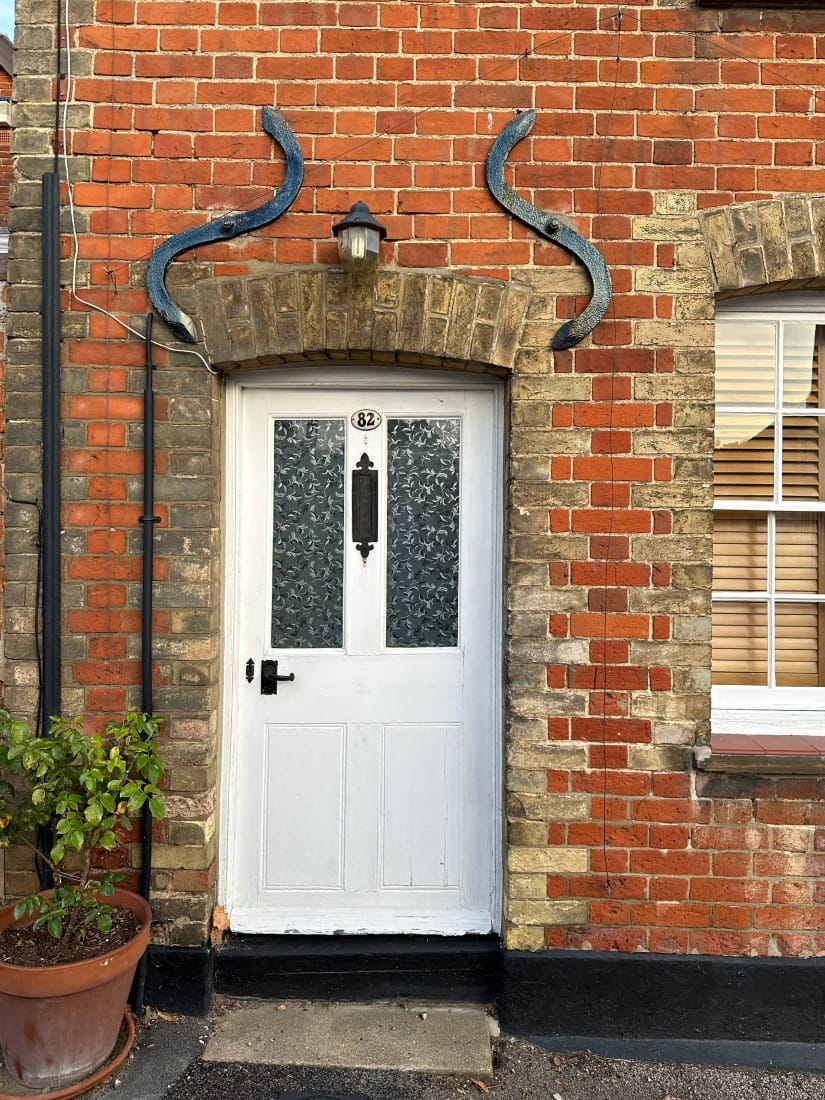
“We..love a good story to such an extent that we can appreciate one silently in the sequential flow of a building plan or garden design and conversely, get upset by a place that seems without one. “
Ann Susan and Justin B. Hollander: Cognitive Architecture.
The Keyholder
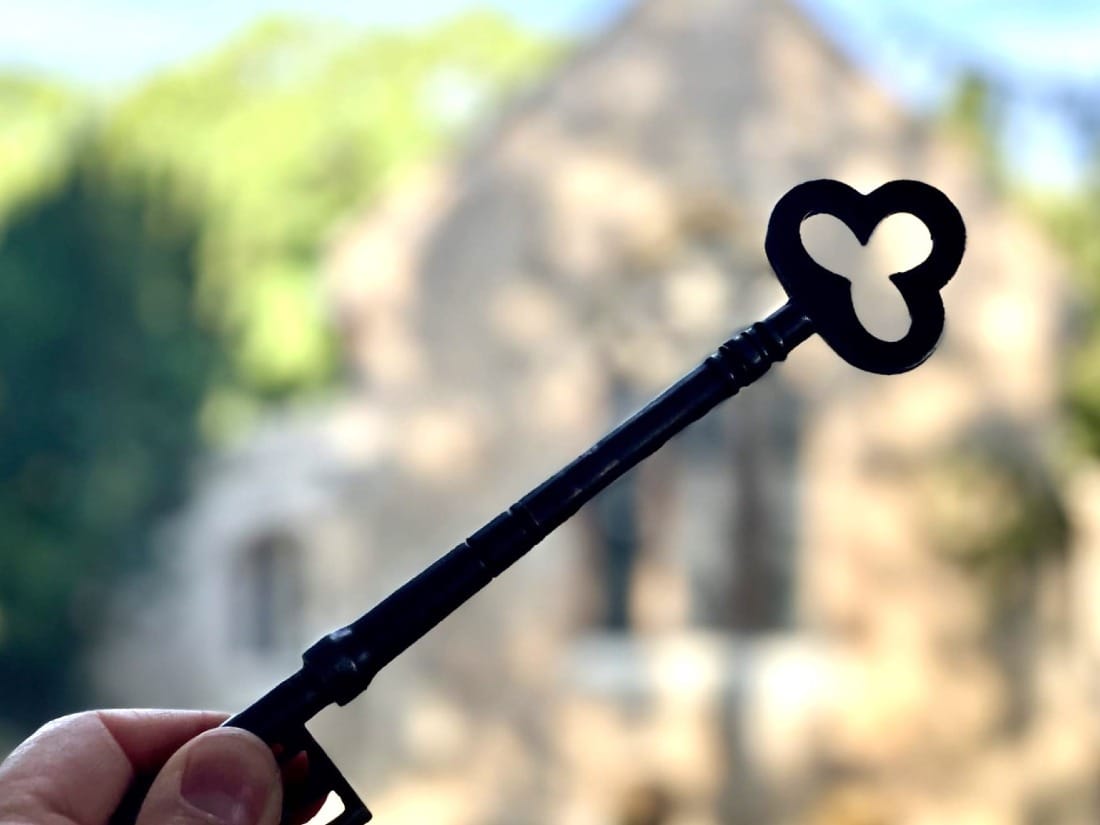
Before I head back to Ludlow, I have two churches to photograph. Both are a few miles from the other but on opposite sides of the Welsh/English border.
Prior to visiting the second church I contact the keyholder. My correspondent is warm and helpful. I find myself caught between the practicalities of organising the logistics and listening to the honeyed rhythm of his accent. I ask him if it’s possible to collect the key from his house and he answers:
‘This is how it is, you see. My neighbour from over the Callow turns up the other day out of the blue and says: ’ Do you fancy coming to market today? Farmer’s market is on today.’ And I says, ‘yes!’ So I gets my stuff together and takes a jacket just in case it rains. And there we are in the truck on the way to Abergavenny without a nod or a call. I’m gone like that, with the door bolted behind me. That’s how it is you see.’
Instead of saying ‘No. I probably won’t be in.’ he informs me by wrapping his message in a story.
To be honest I was expecting the clipped response, but when he started talking my mind lit up. I felt as though a fuse had been replaced in my brain.
His words told me of people and place and the environment they lived in. They gave a sense of time through the rhythm of the market and of the seasons. In spite of the underlying reason for him telling his story [I might not be in] he also conveyed a myriad of messages with words that were full of associations, correlations, interrelationships: a vibrant humus of humanity.
I don’t know if the keyholder is Welsh, but I sense that his English is rooted in the Welsh/ Celtic syntax which is rich in mnemonic flora and fauna.
It is a language that originated in an indigenous correspondence with place, one that helped connect people with the landscape. It’s such a powerful way of deeming significance to people and places and subsequently an amulet towards protecting and connecting place through memory and association.
I’m reminded of Pamela Petro’s words in The Long Field: ‘Peer into the grammar of Welsh, and you begin to suspect that it is steeped in ancient knowledge of the human heart.’

What happens to relationships with people and place when our language is pared down into a sparsity of syntax -one that is shaped and economised by the limitations of our devices, or negated by 6 second videos, or culled by website SEO farms - worded for clicks to a search engines demands? Or on a more sinister bent: when the computer says ‘no’.
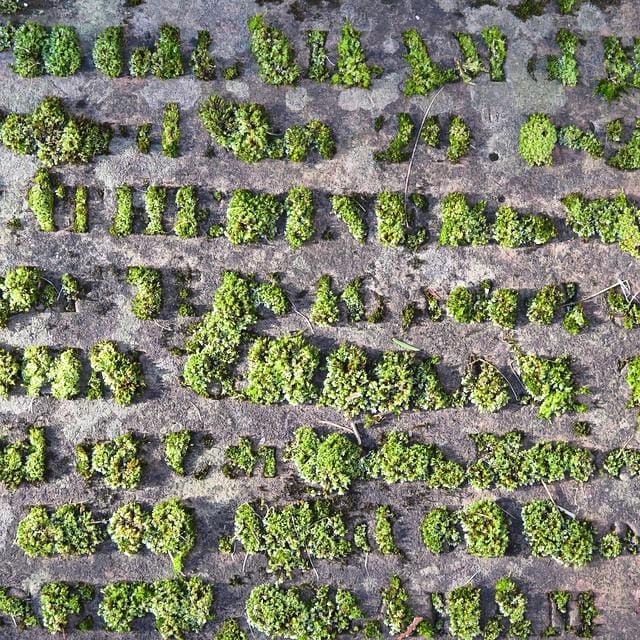
Brazilian anthropologist Eduardo Viveiros de Castro says that ‘All that is required for sticks and stones to leap into life is our own presence.’ He praises the power of our imagination, but our imagination is rooted in our language and when we shutter and clip it we reduce our capacity to make connections that initiate empathy for others.
There are times that I have to remind myself of Viveiros de Castro’s thoughts, and subsequently, of the powerful agency of our imagination. My ‘note to self’ says: ‘Andy, take your time, work through your words and respond with grace, dare to articulate them with a long sentence, a paragraph indeed.’
Language is more powerful than we think. We need it to gloss the world and all those in it. A vibrant, imaginative and descriptive language is the glue that holds us together. It helps form attachments and subsequently build relationships: relationships with the landscape and environment but, more significantly, relationships between people.
Who’d have thought a humble phone call might be so significant? That literacy, language and poetry might be key to underpinning our common humanity? Every English teacher and lecturer should shout it from the rooftops.
Power to the storytellers, the photographers and the artists, for they hold more influence than we give them credit for: the skill to teach others how to see; the potency to save buildings and places that might inform our future; the capacity to give salve to collective identity and personal wellbeing. Credence to those that shine a light, point their lens or ink their pen about the small, seemingly insignificant things, that give our lives a meaning beyond measure.
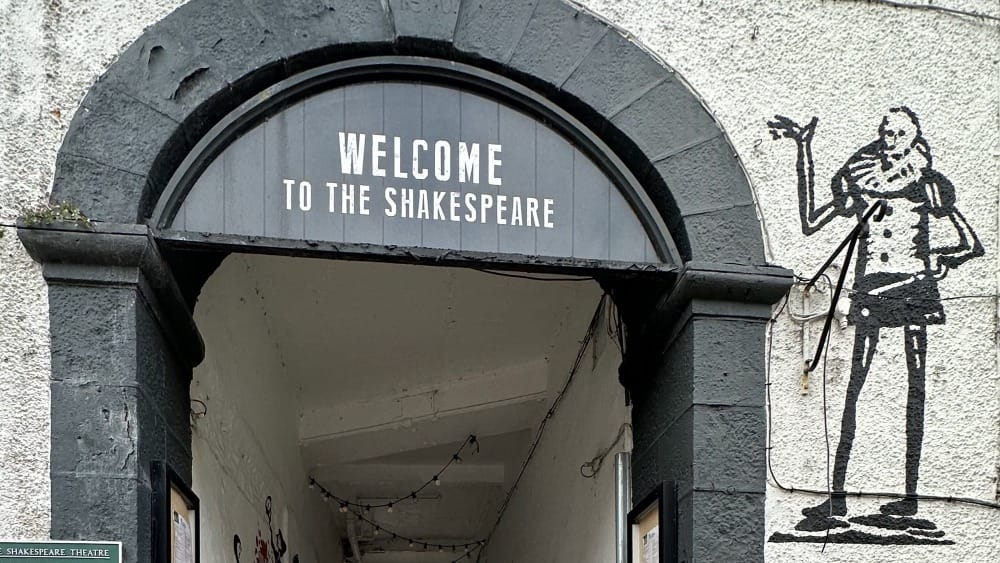
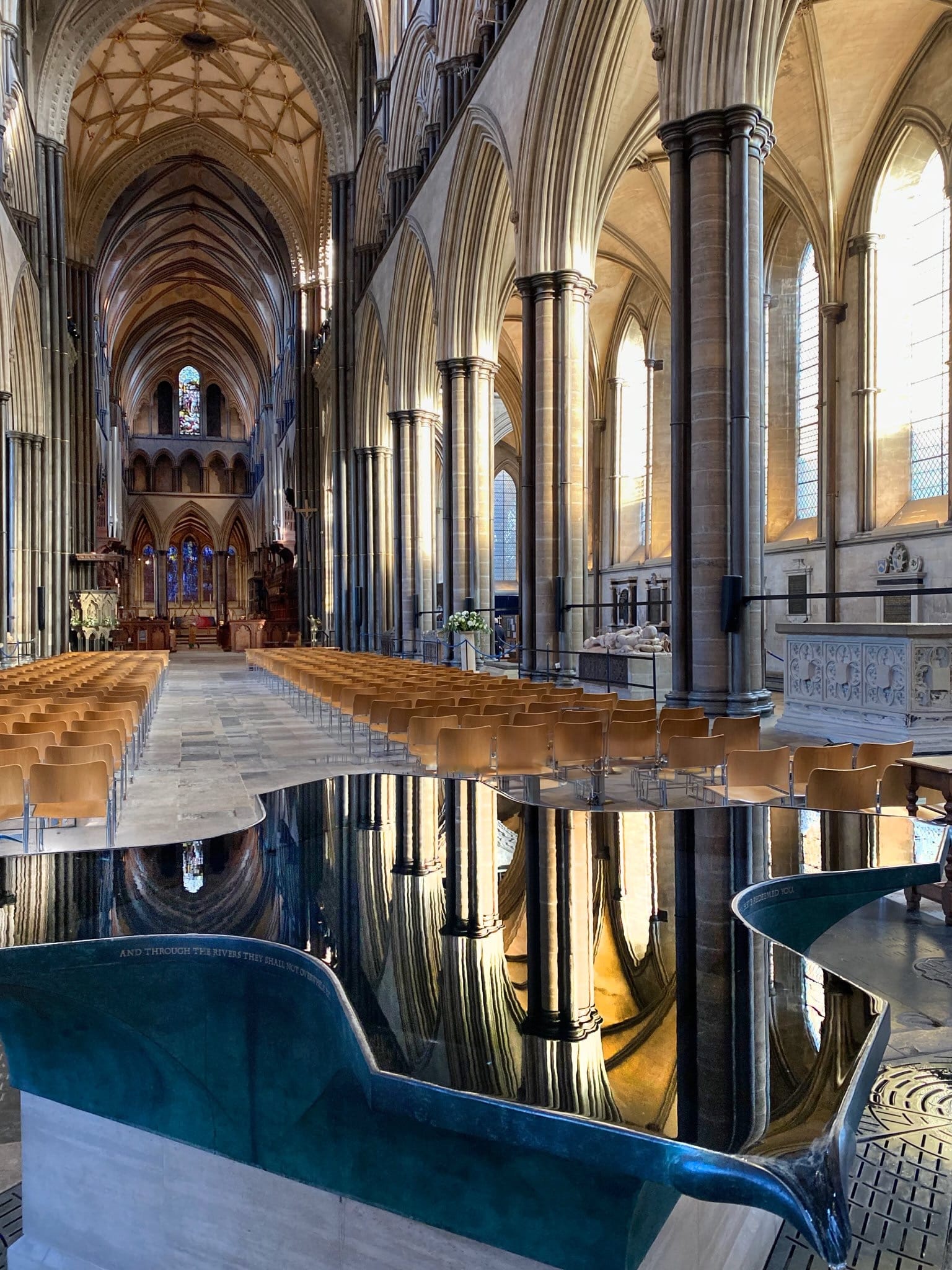
Can you help support this Digest and keep Woody on the road in 2024?
There's a postcard sized print of 'Salisbury Cathedral Reflection' in the post for everybody that signs up between now and the end of January
Check out the benefits hereFrankwell
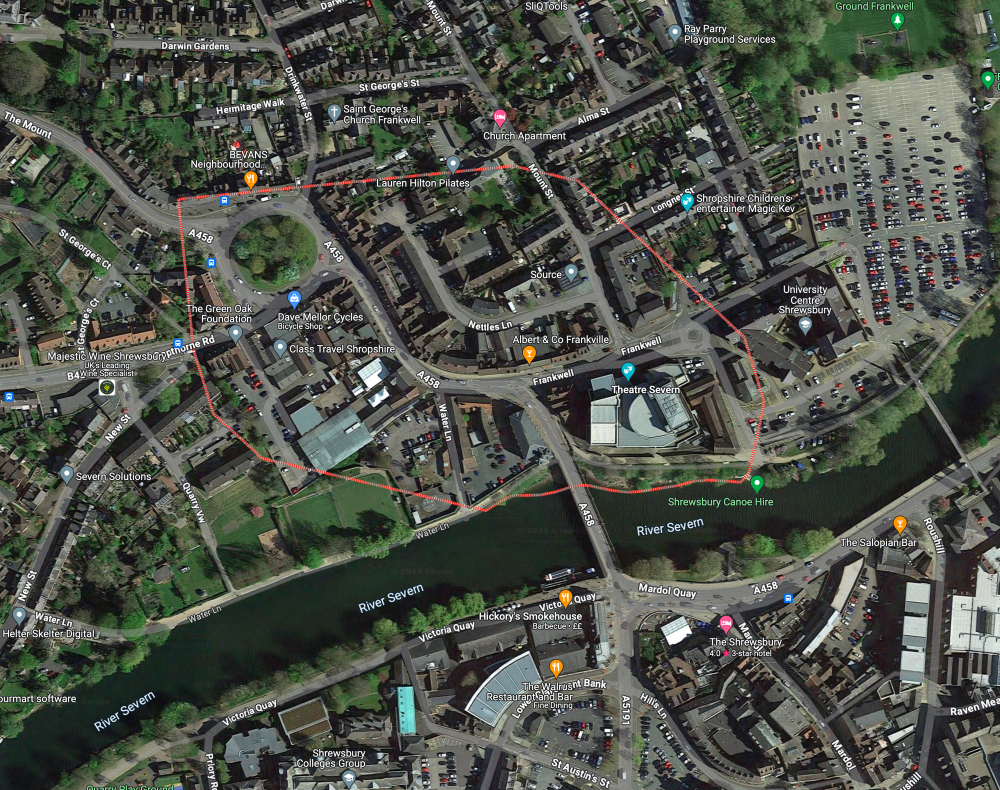
Frankwell is one of those seemingly in-between places. If you're heading into Shrewsbury from the north - you'll drop into Frankwell on the way.
If you're like me, whilst driving, you'll likely get snagged by the imprint of a ghost gable on the side of a building. The crucks are the large bent beams either side of the gable - cut from the same tree. Notice the cut-outs near the top where the original purlins would have been.
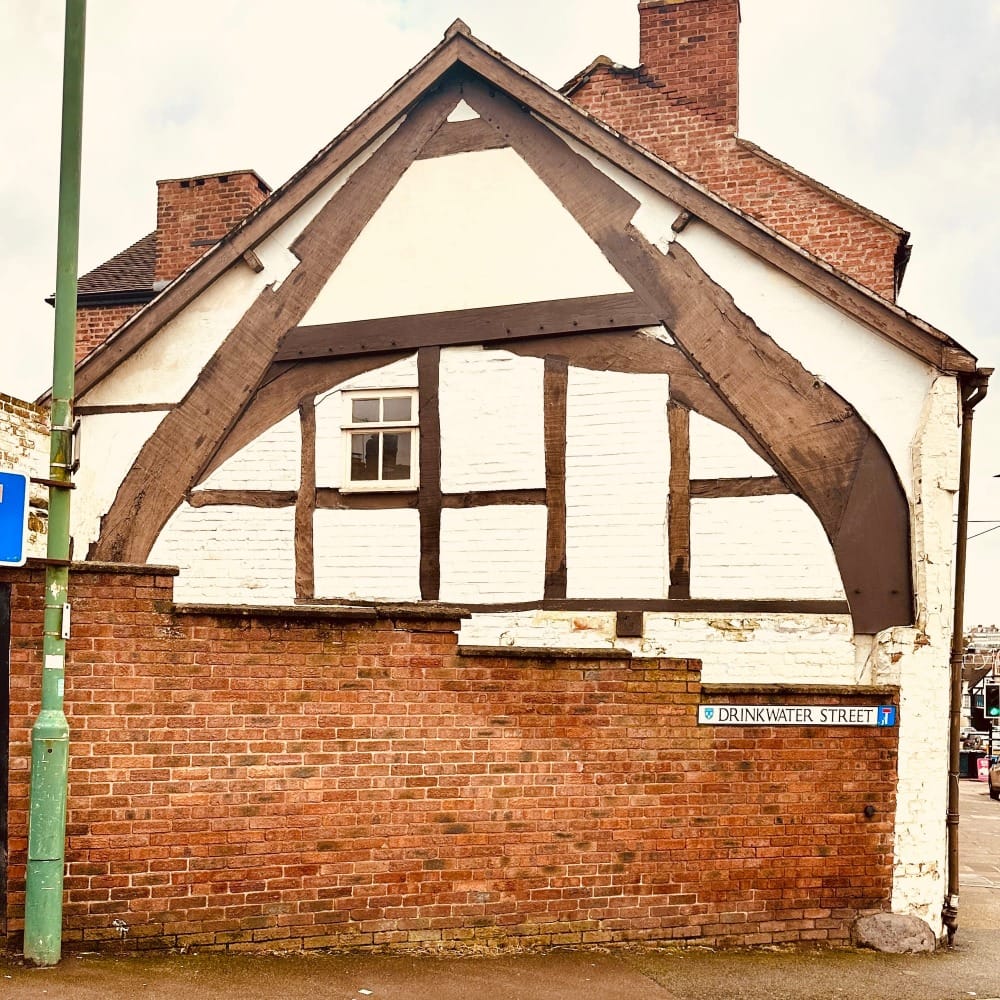
Frankwell is a 'little Lavenham'.
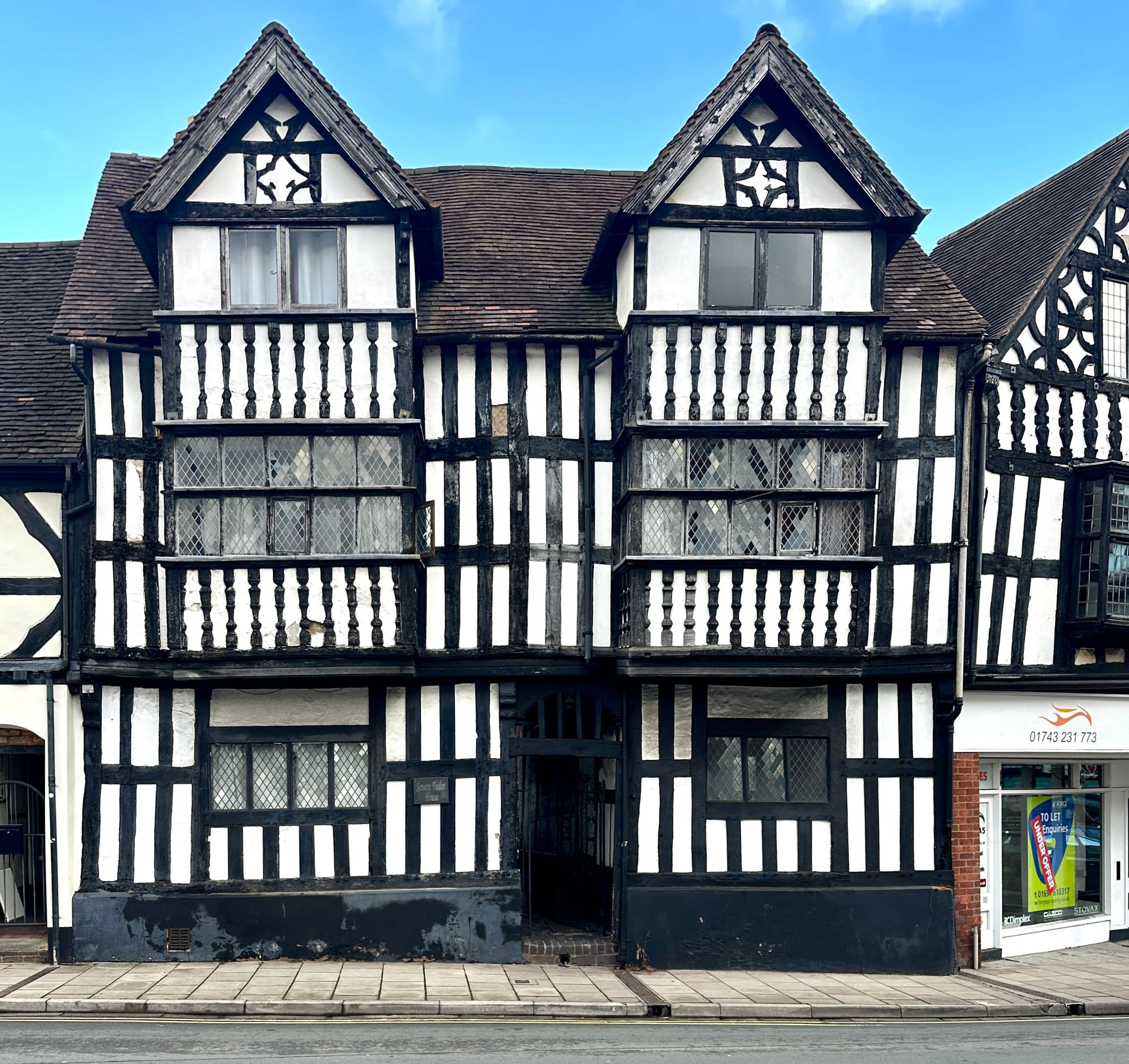
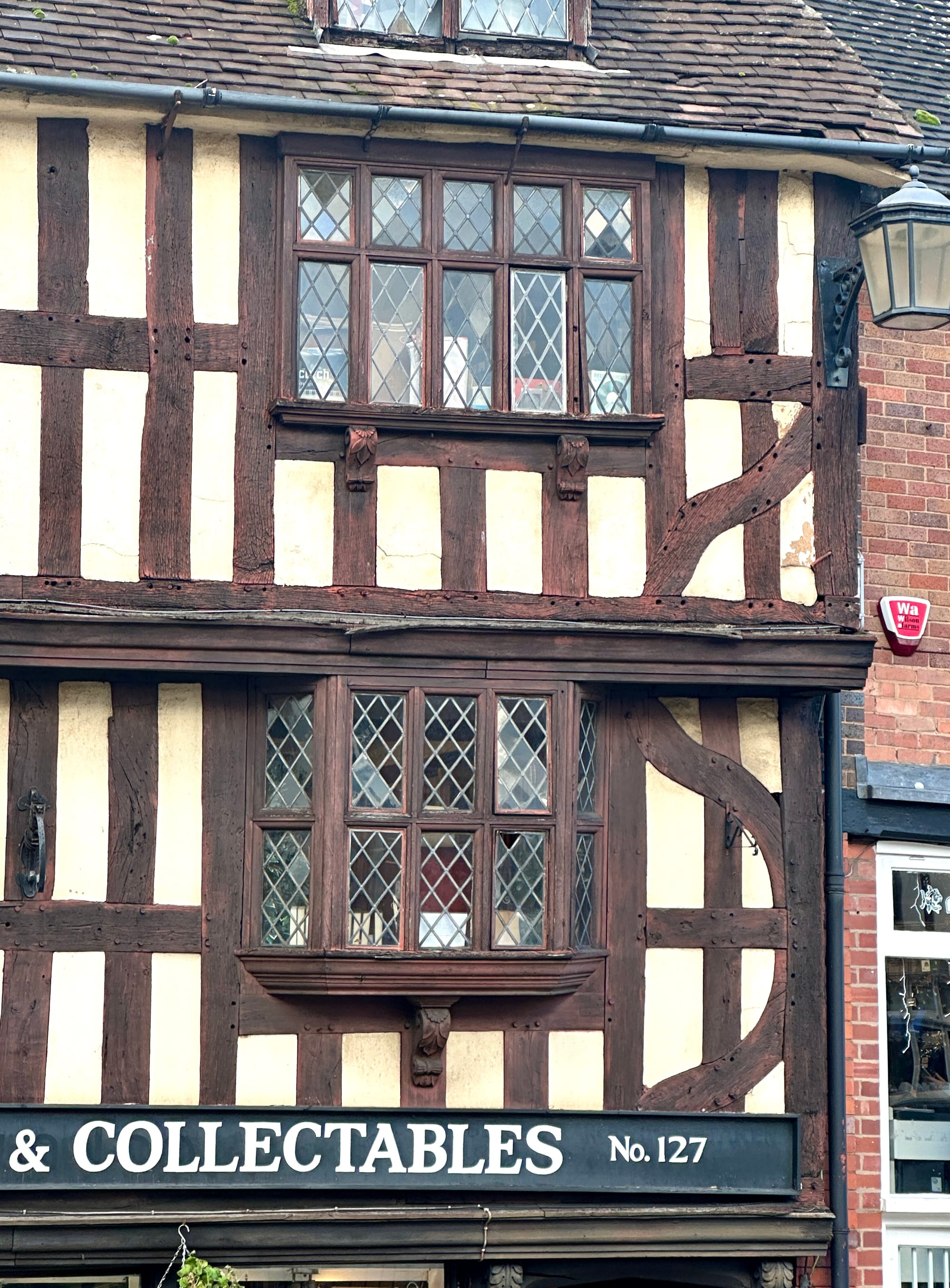
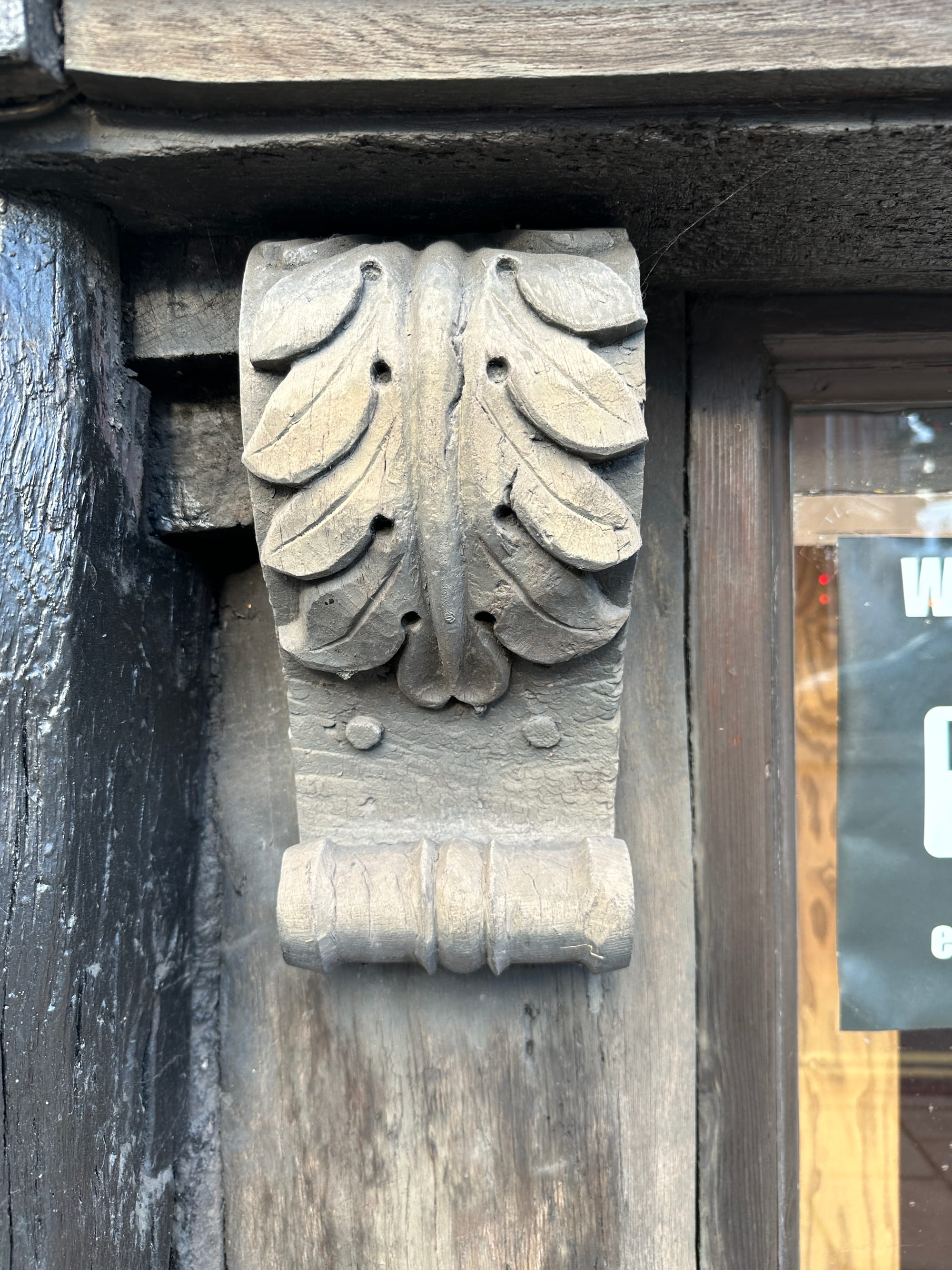
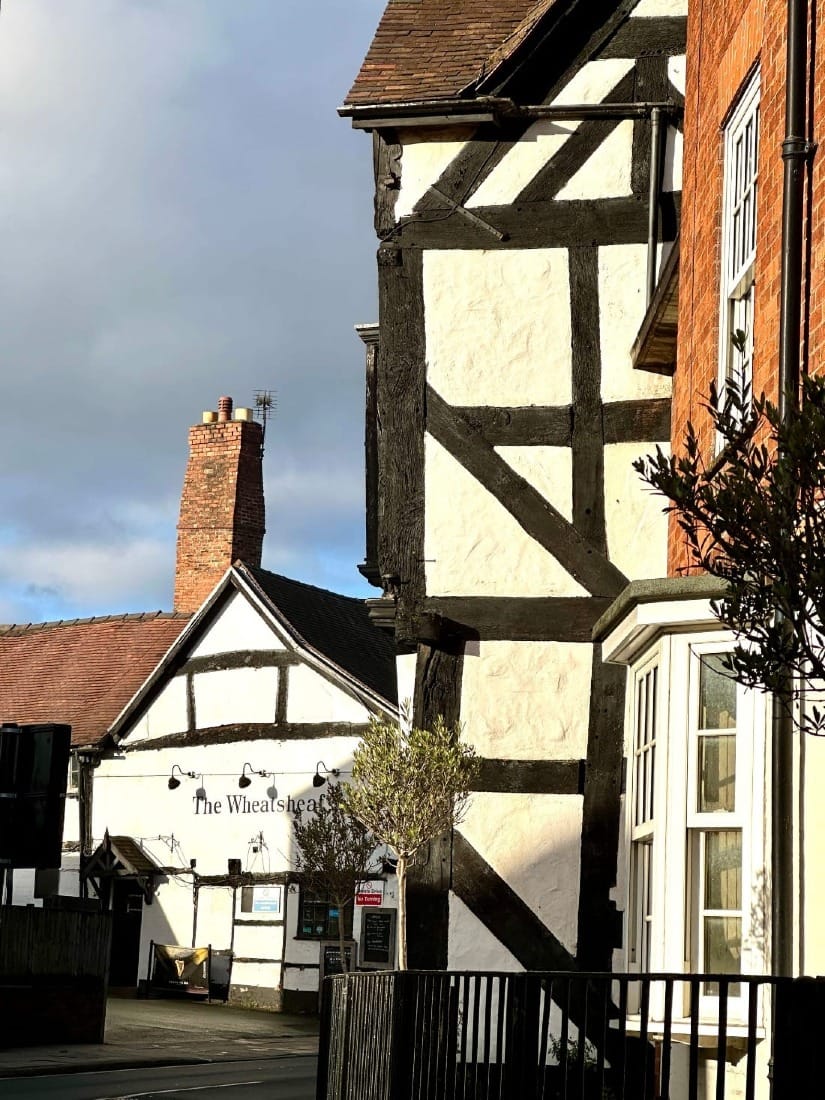
As well as the buildings, there's another excuse to pull over at Frankwell - Frankwell Island Bake Shop which has an artisan feel. It is hosted by Mel Hirst - full of mouth watering joy.
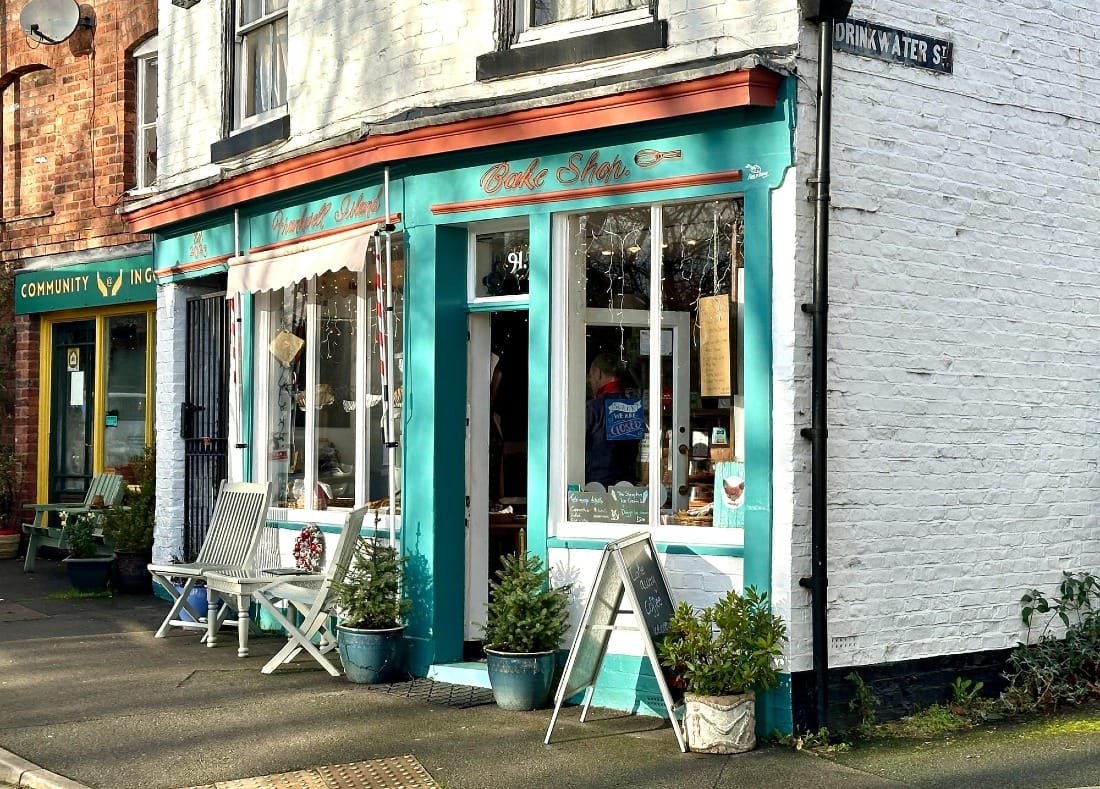
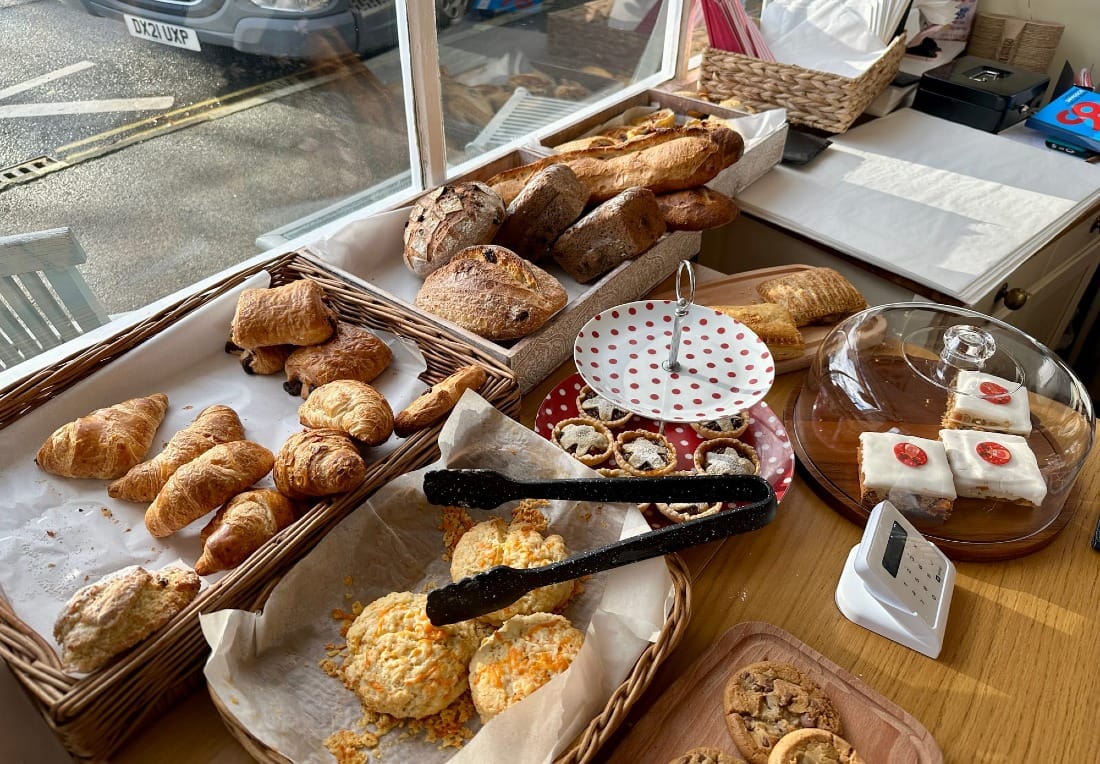
Ludlow
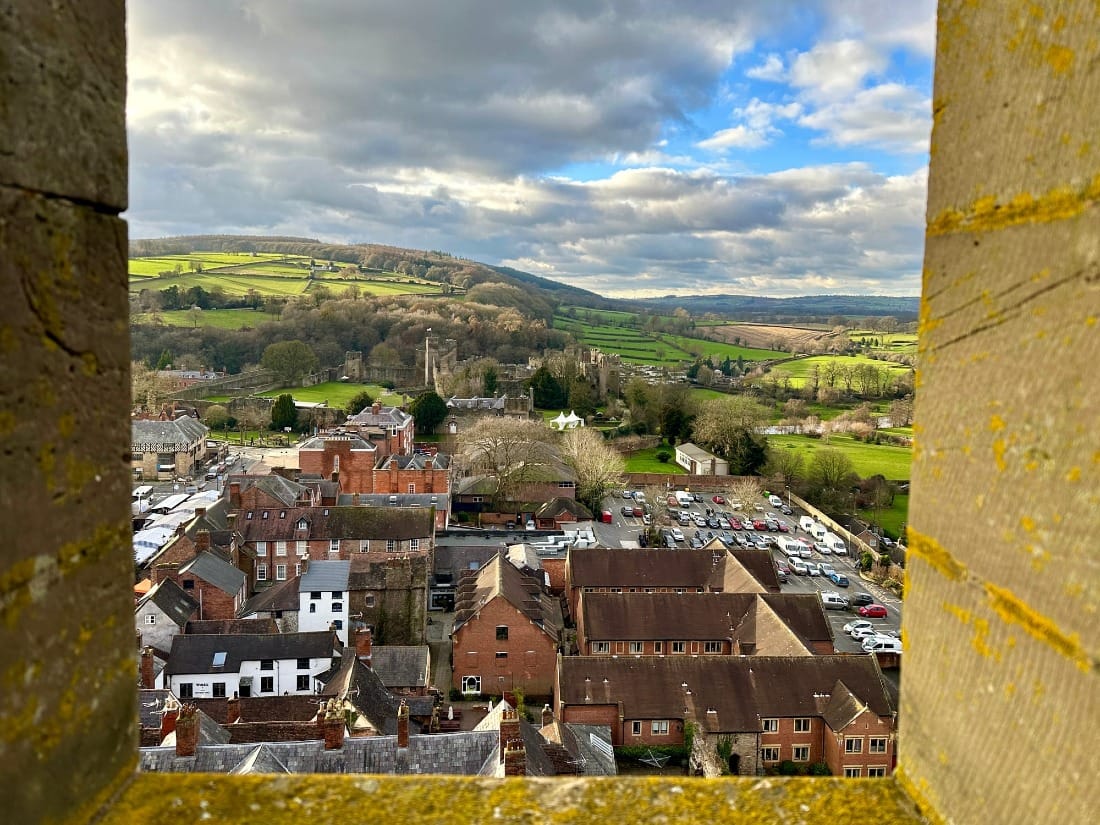
Ludlow is simply magnificent, the full package. I haven't got the space to share all the delights of Ludlow so I'm going to share two buildings with you: the church and a pub.

I'm going to visit the church first and then finish with a pint in the pub (that order is best advised). Together we can both be saints and sinners in a single digest.
St. Laurence, Ludlow
Delightfully situated in the townscape with glimpses of it down alleyways and ginnels. When I visit there's barely anybody in - I have the guide all to myself.
She tells me that the church is famed for its stained glass, the choir stalls, its monuments and the view from the tower.
"Can I go up the tower now?' I ask, salivating.
"Oh yes, you'll be the only one though - don't get up to any mischief!"
"I won't, I say, I'll be very good."
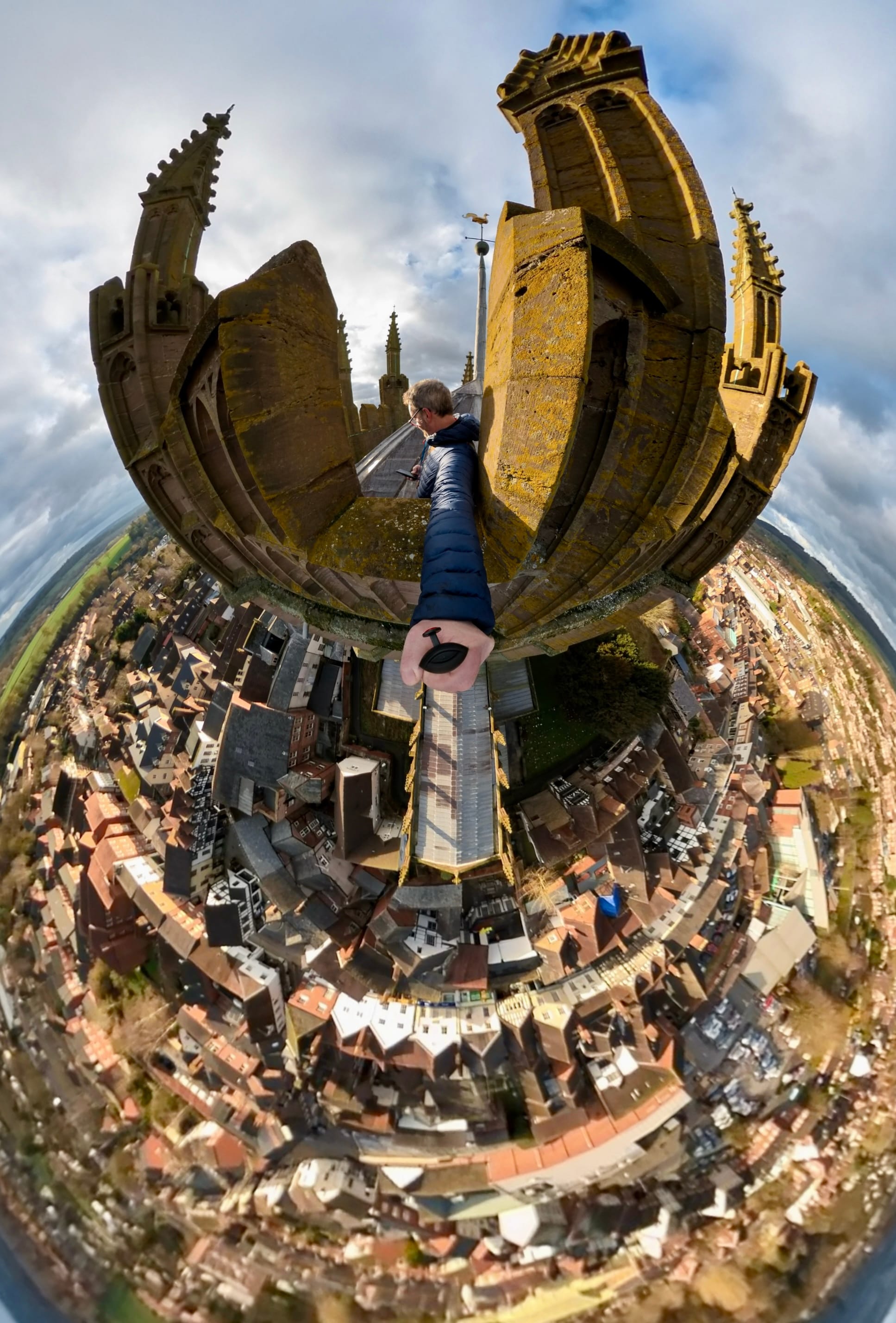
The views are exquisite. Every architect, town planner, developer should climb the tower at Ludlow and absorb the view into memory.
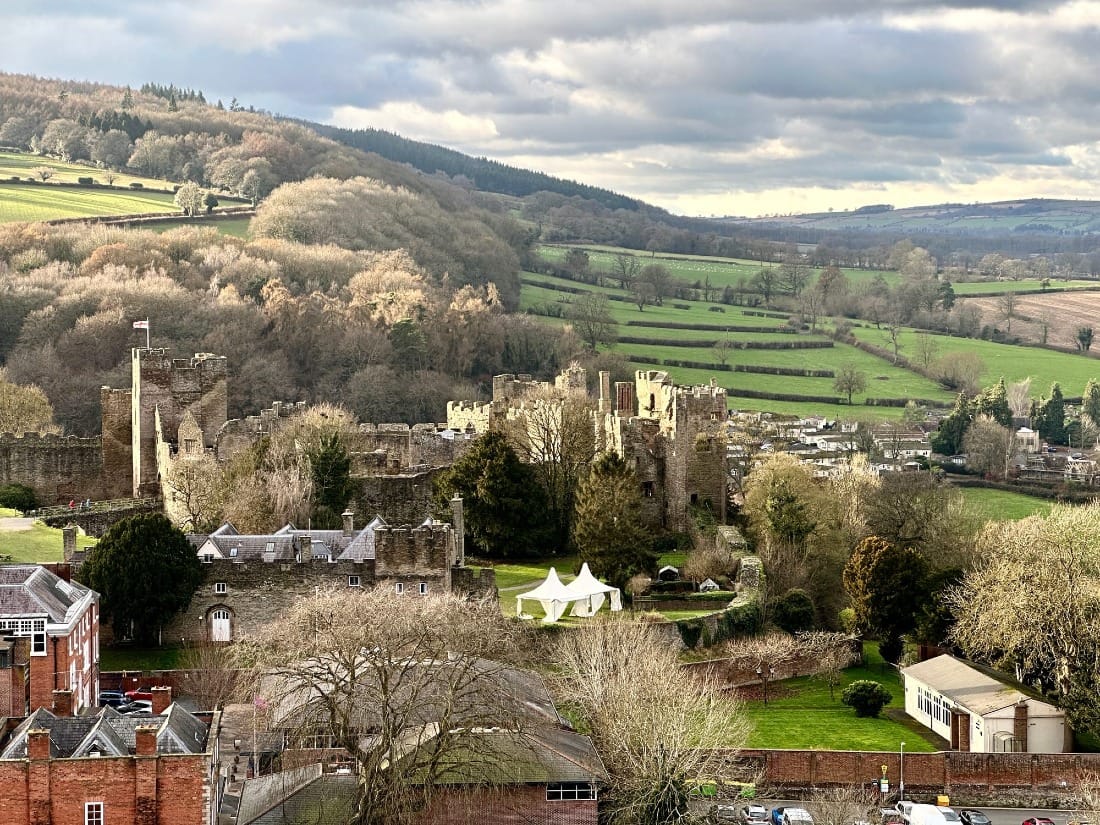
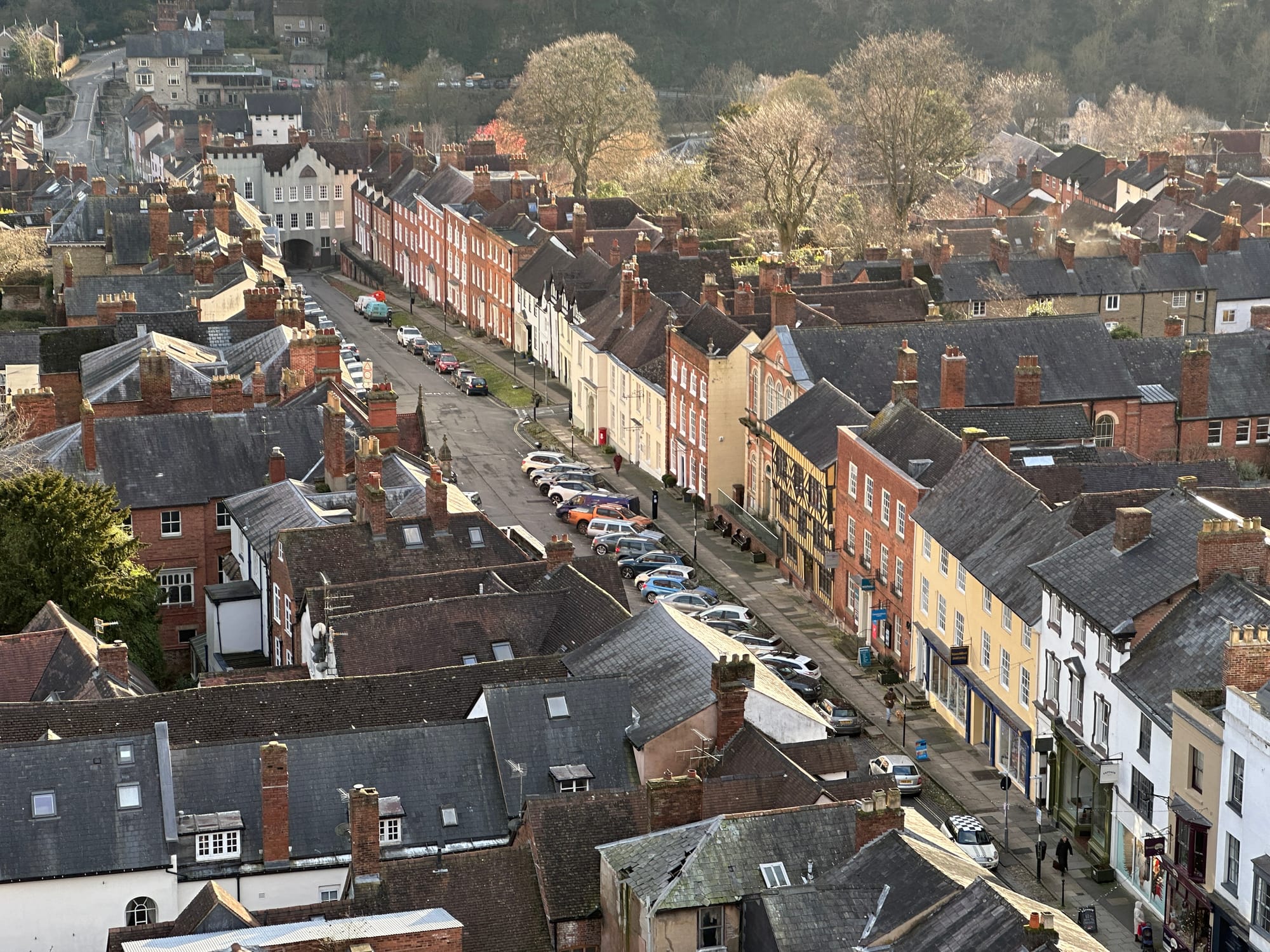
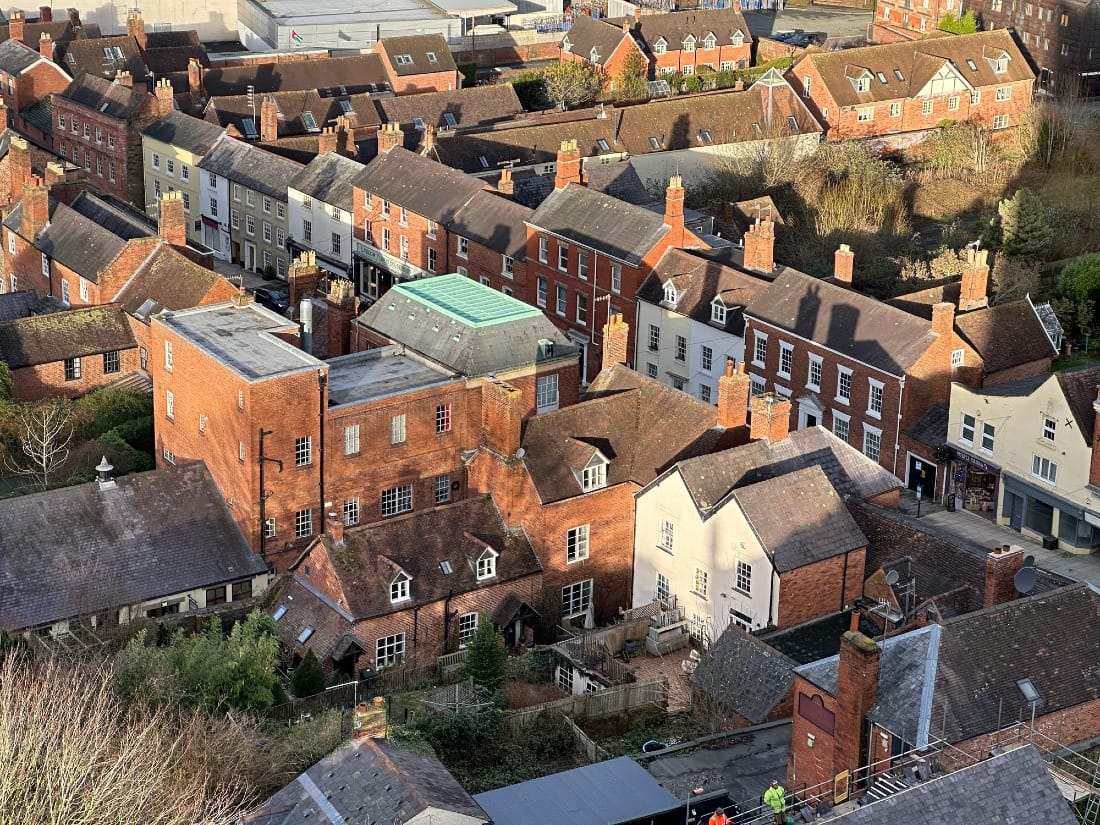
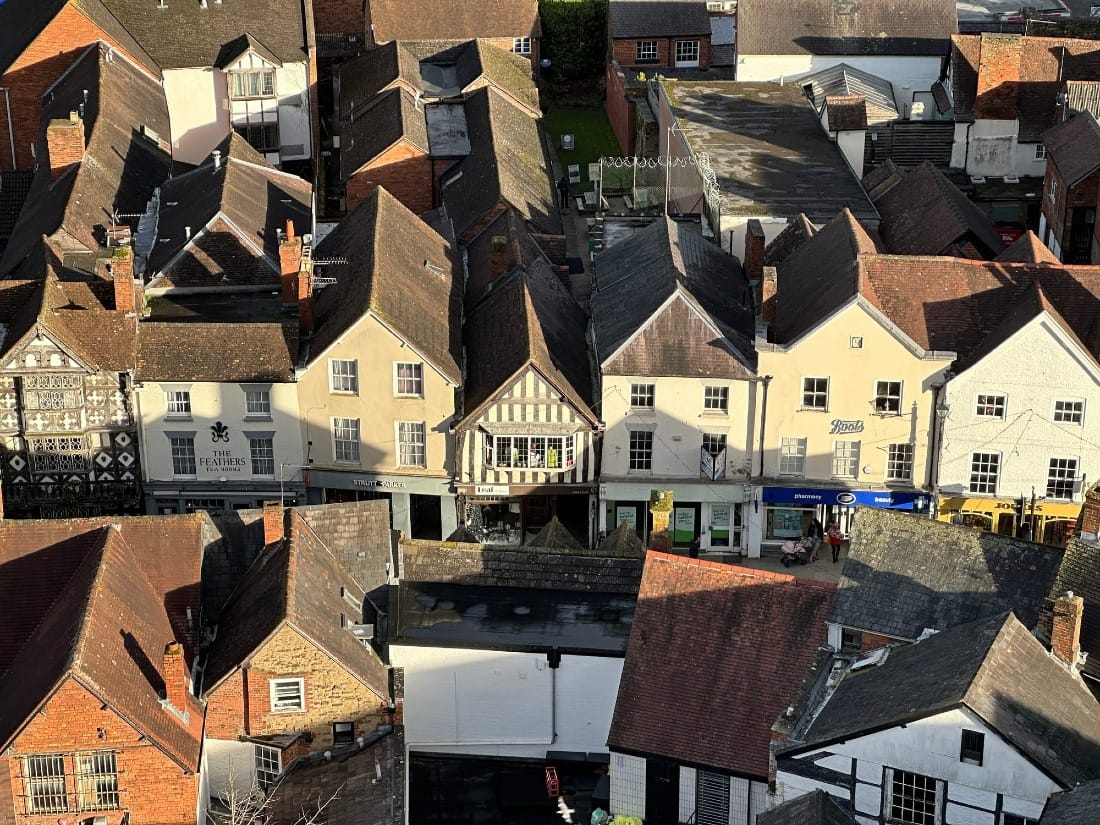
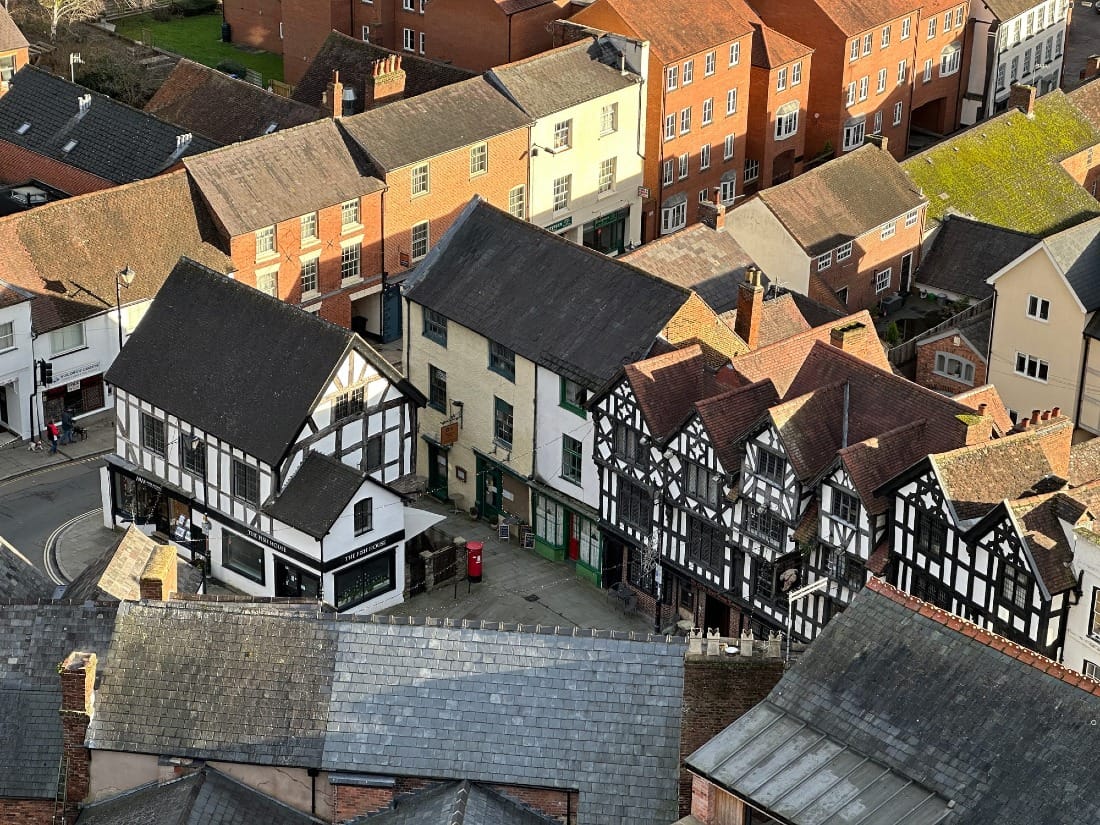
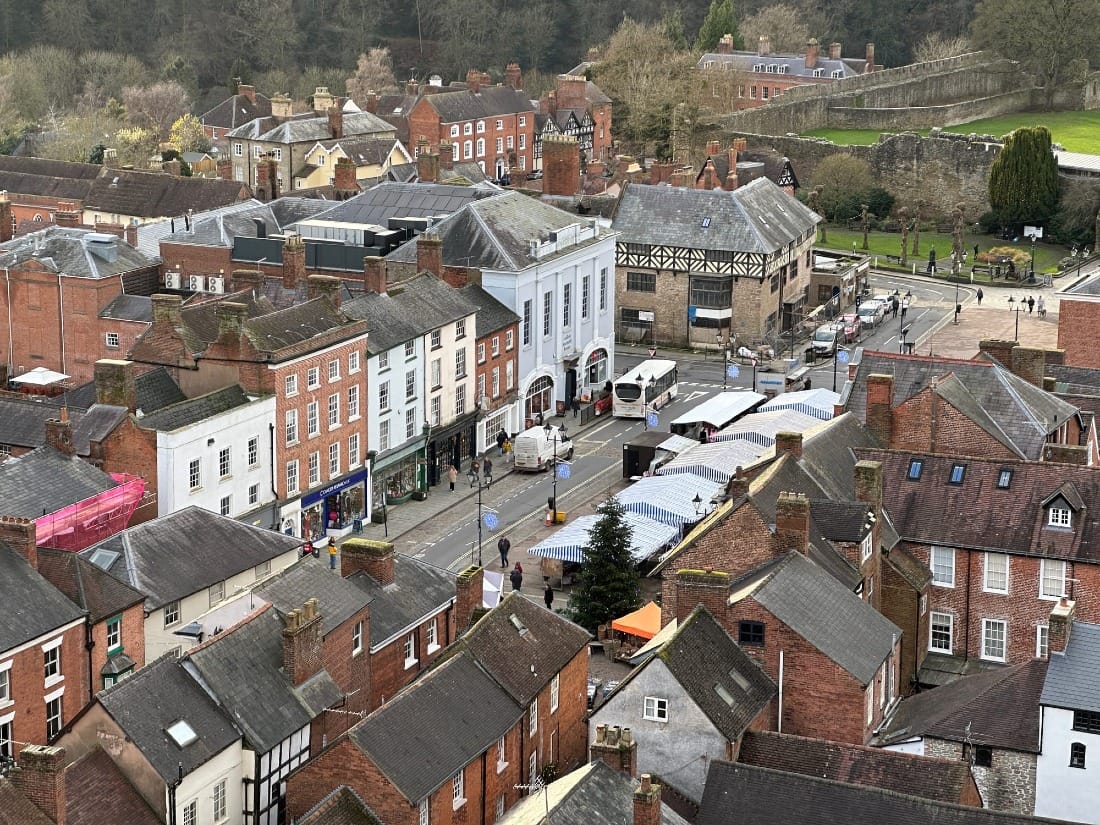
Members can view three magnificent views from St. Laurence tower in VR (viewable on any device) here:
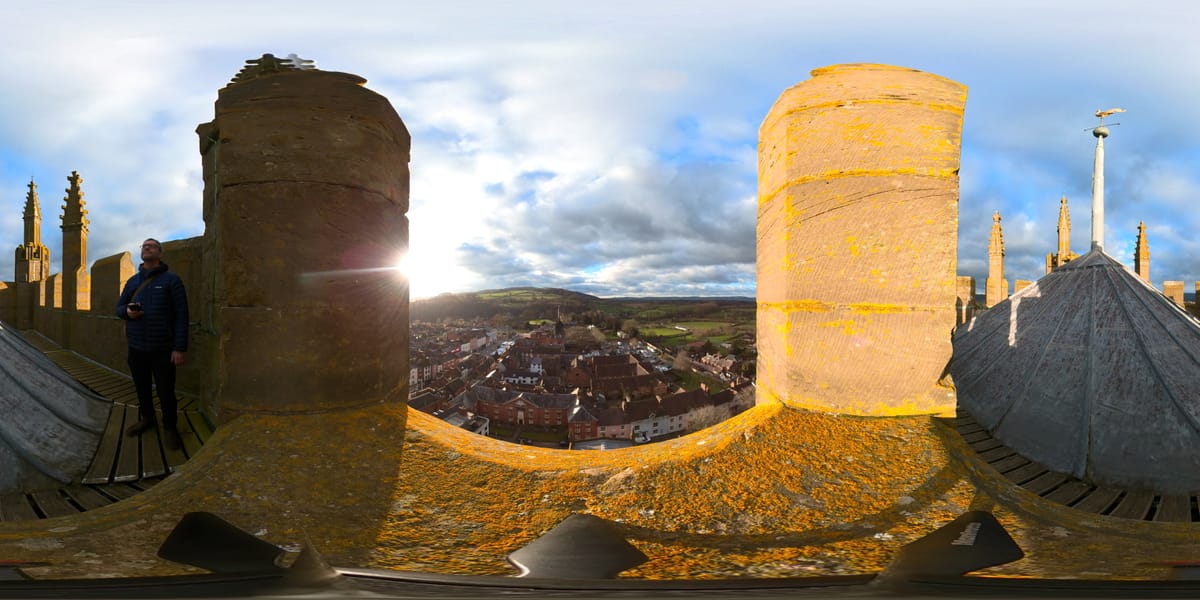
The Stained Glass
St. John's Chapel houses some wonderful medieval stained glass donated by the Palmer's Guild.
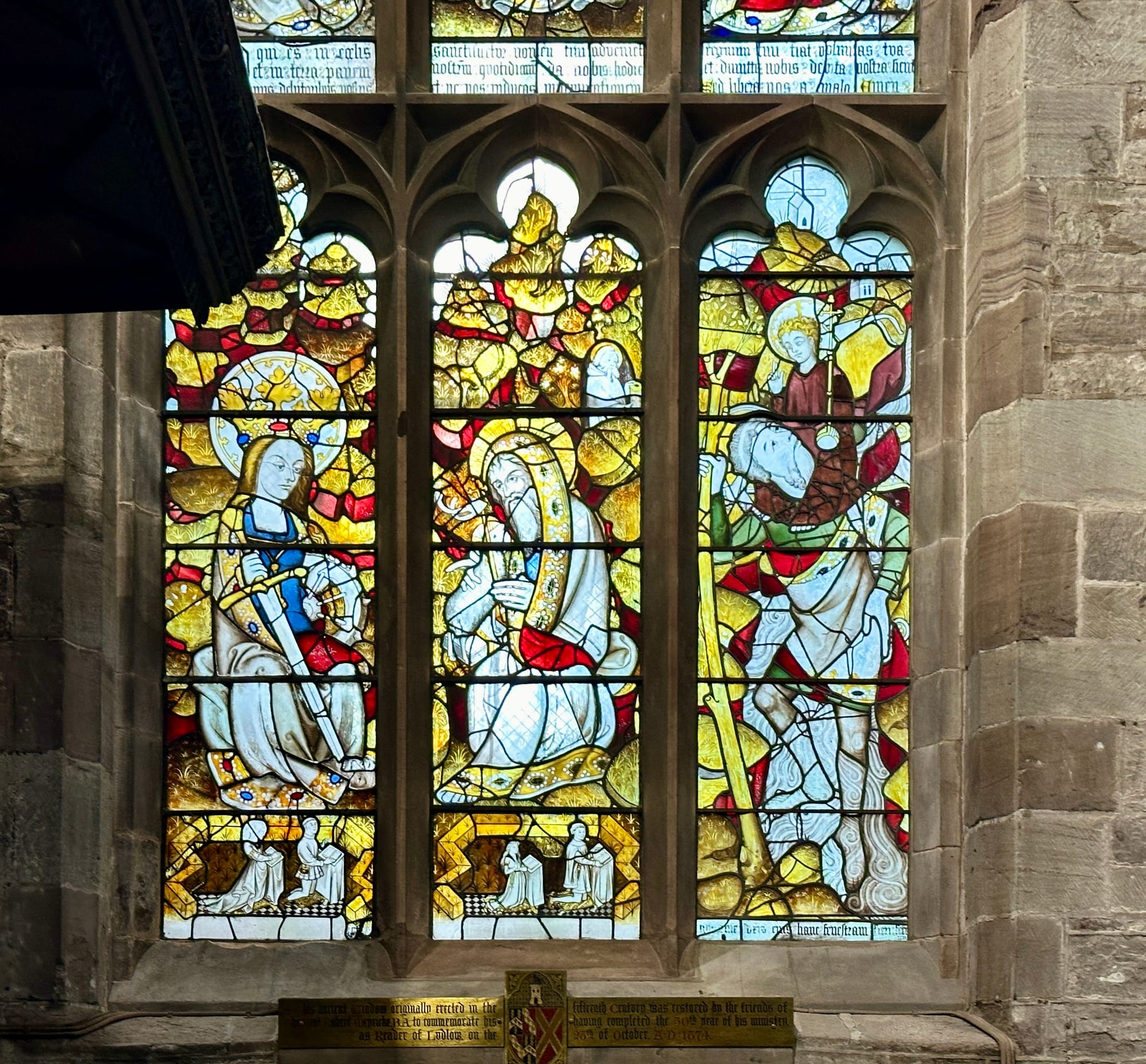
Tree of Jesse
In the Lady Chapel. Restored by Hardman & Co. in 1880 but contains much of the original glass of 1330.
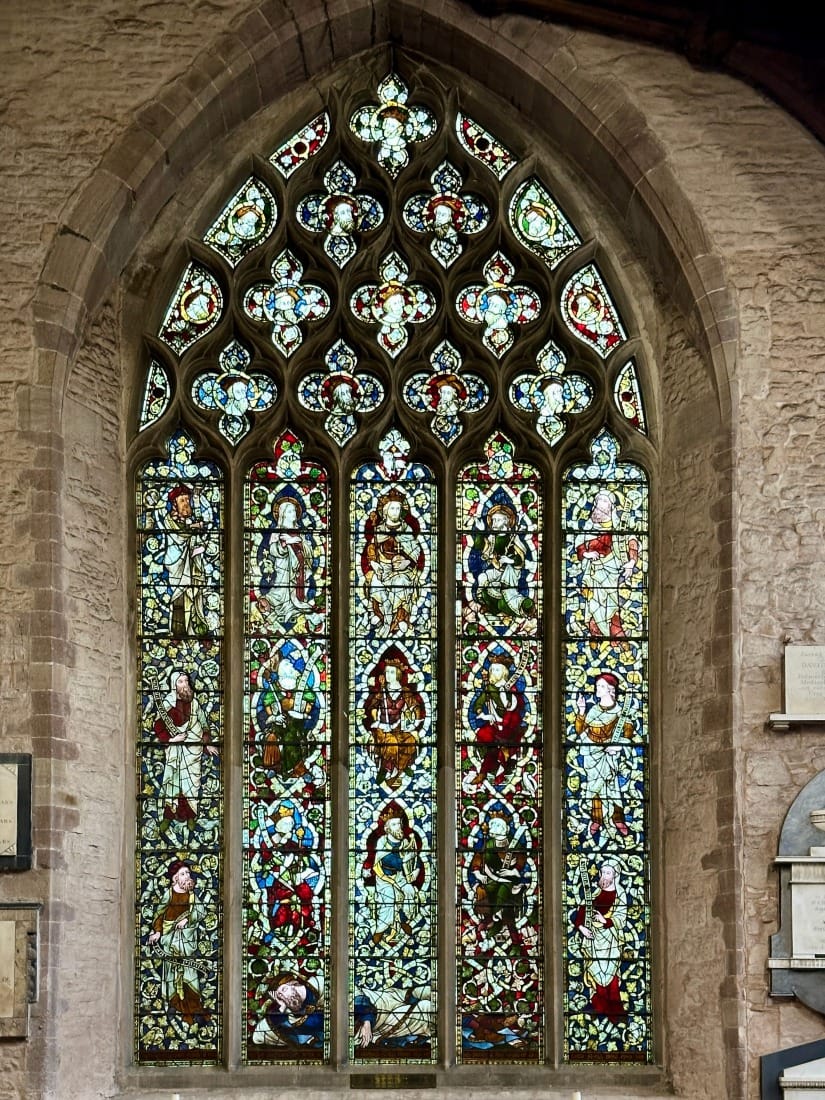
The Monuments
Most of the monuments are of Ludlow's councillors of the Marches.
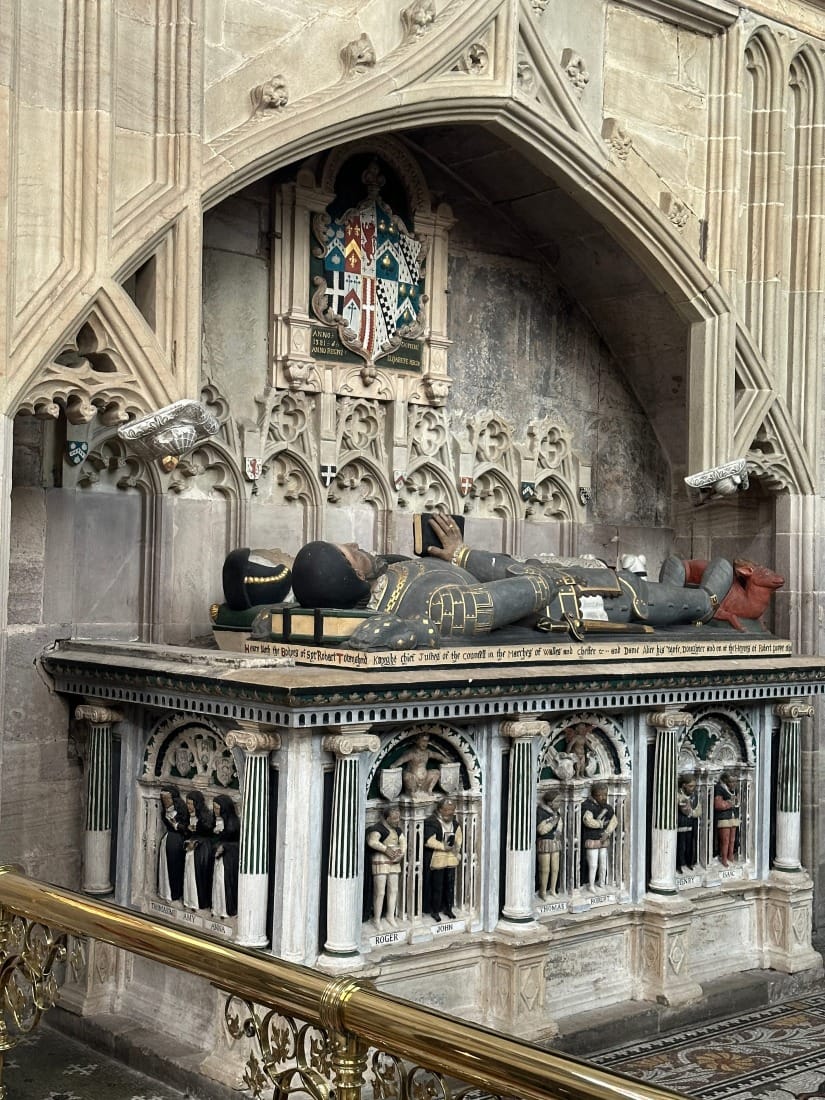

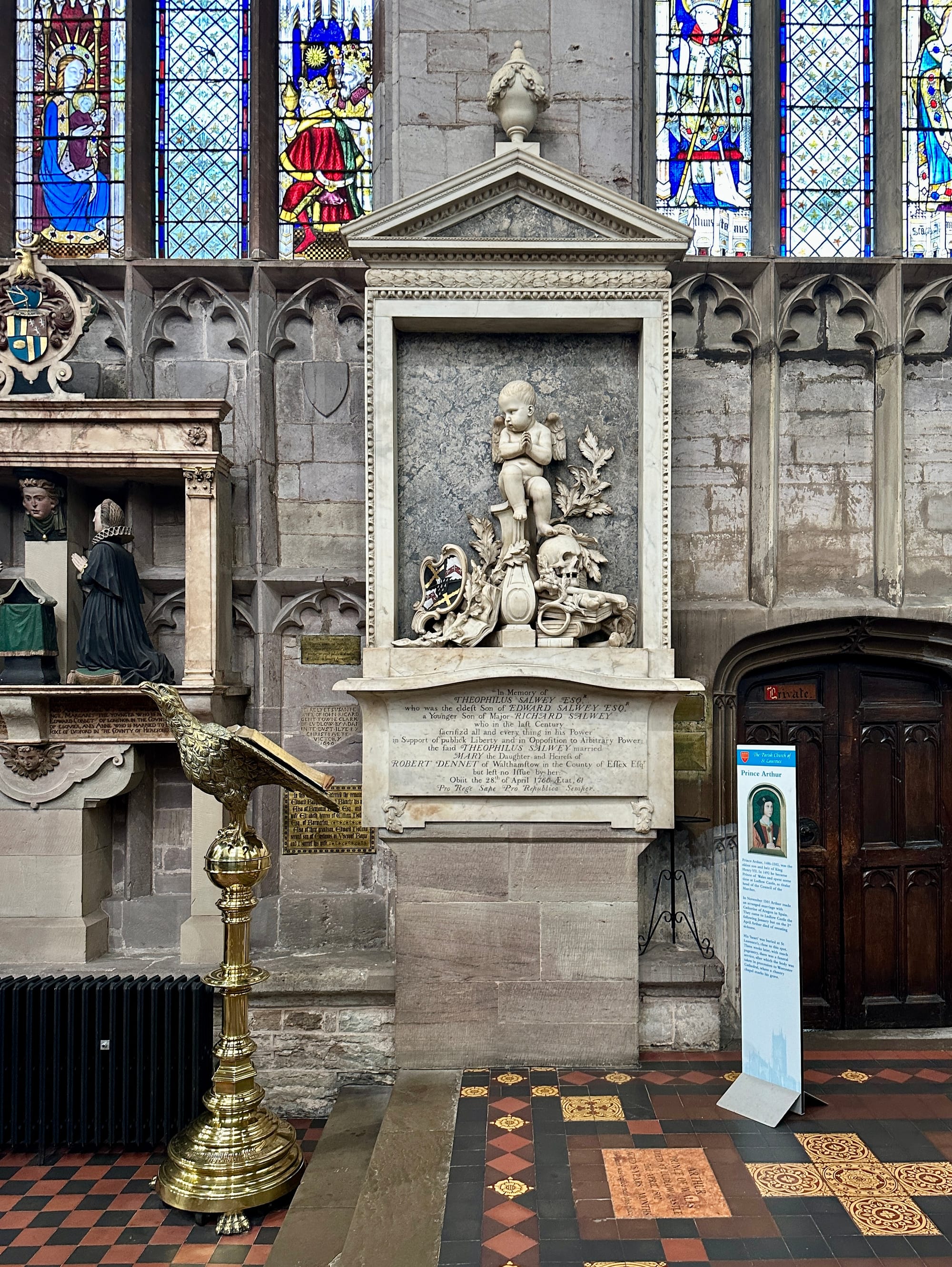
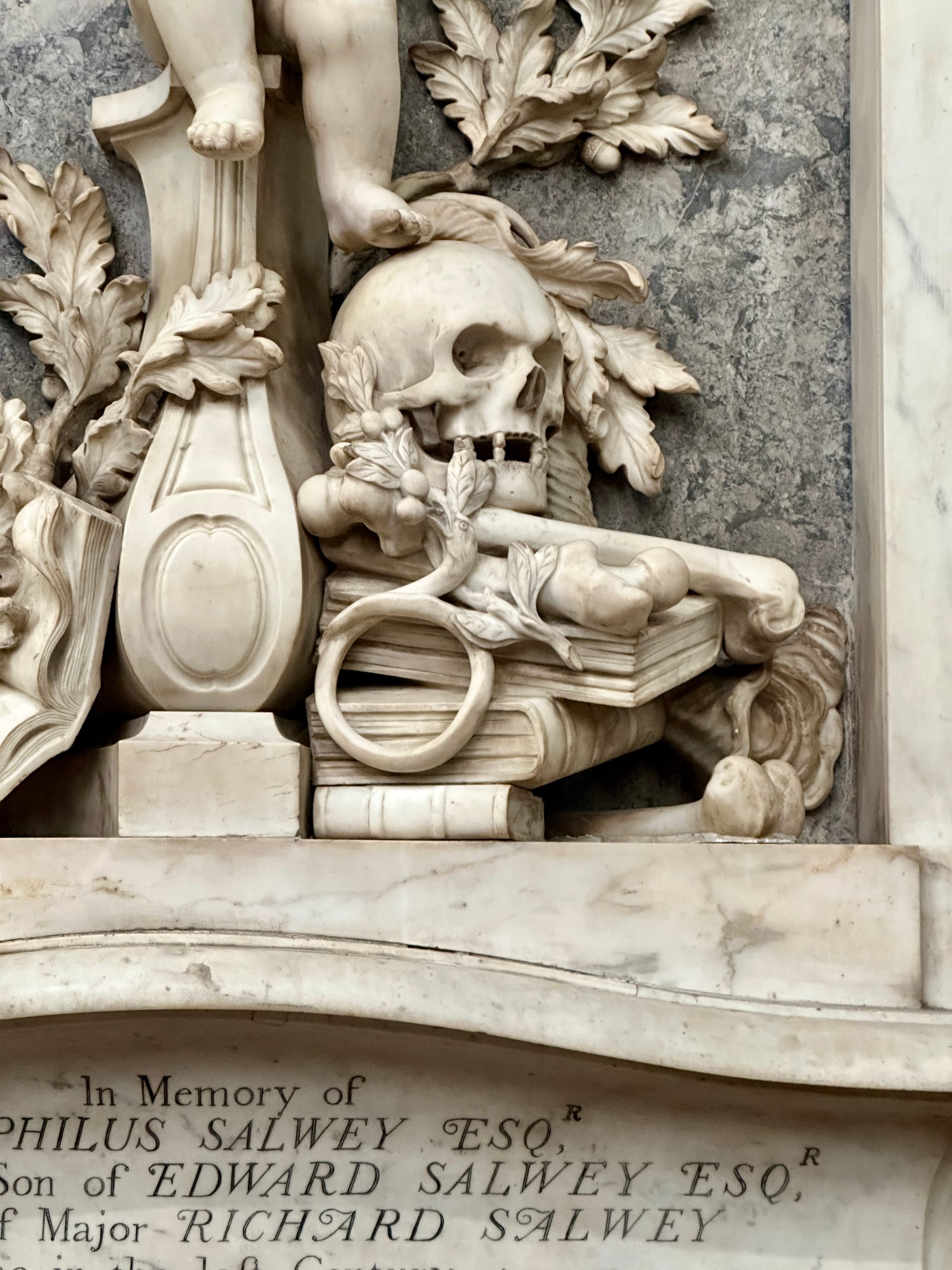
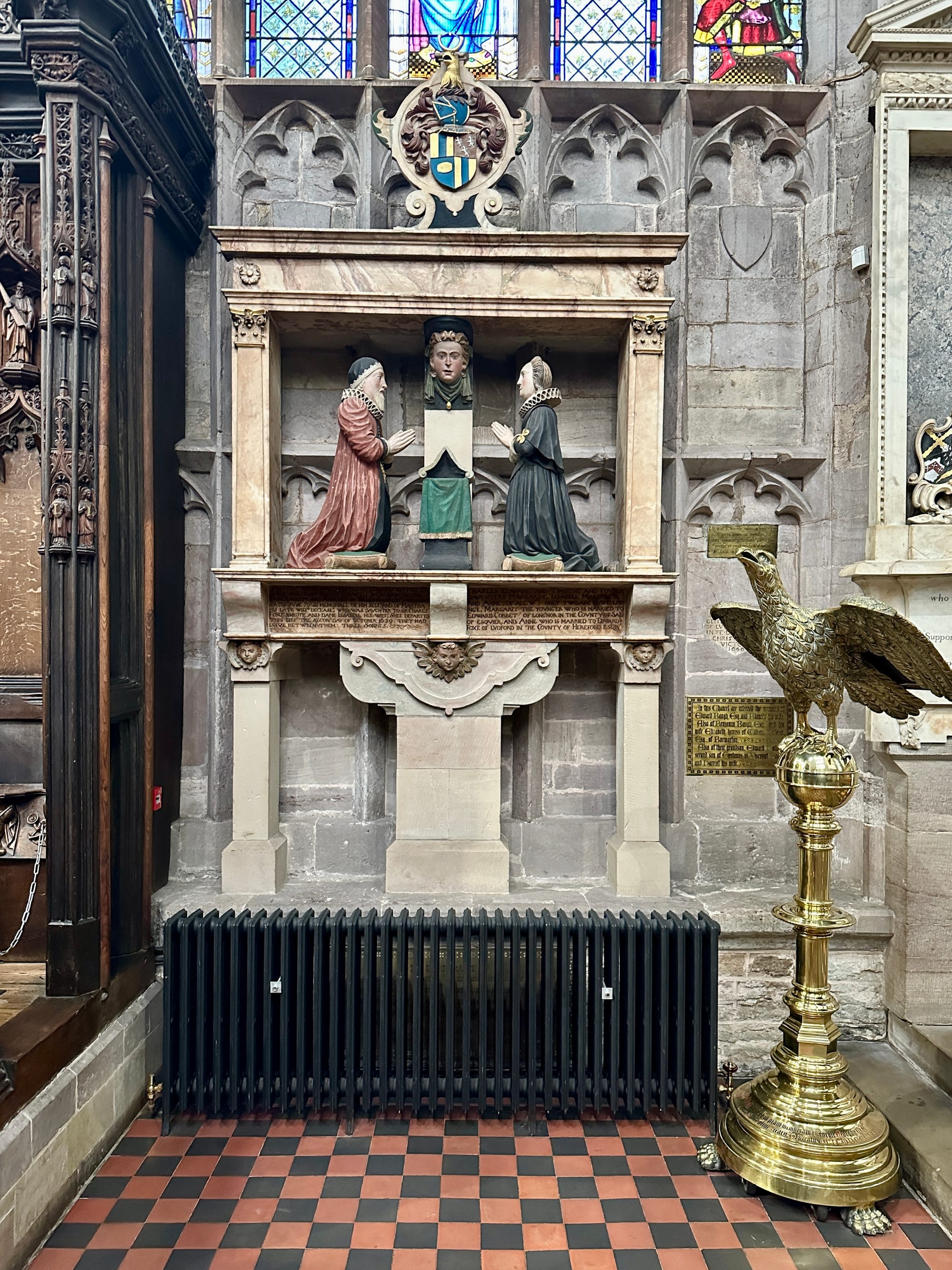
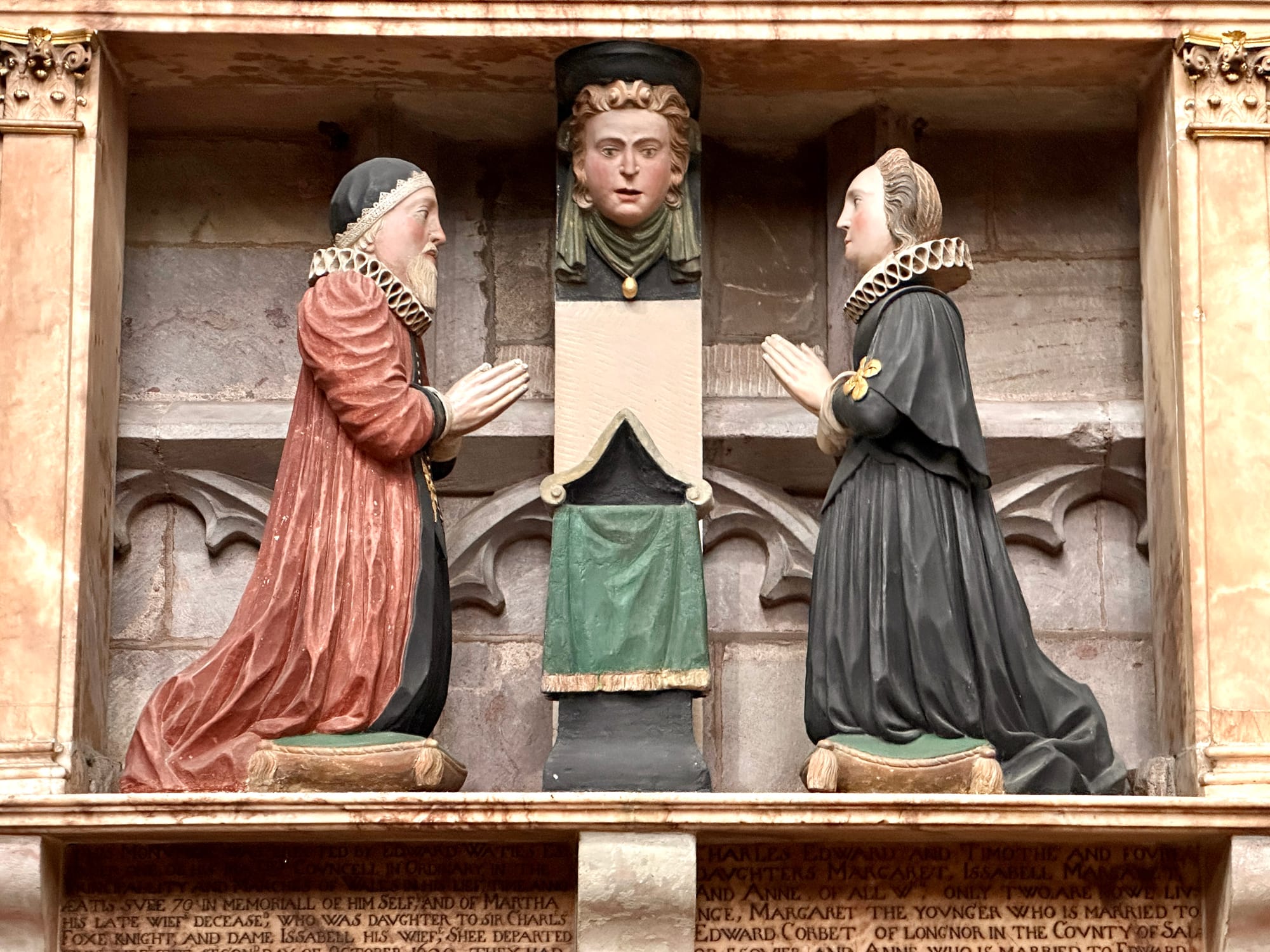

The Choir Stalls
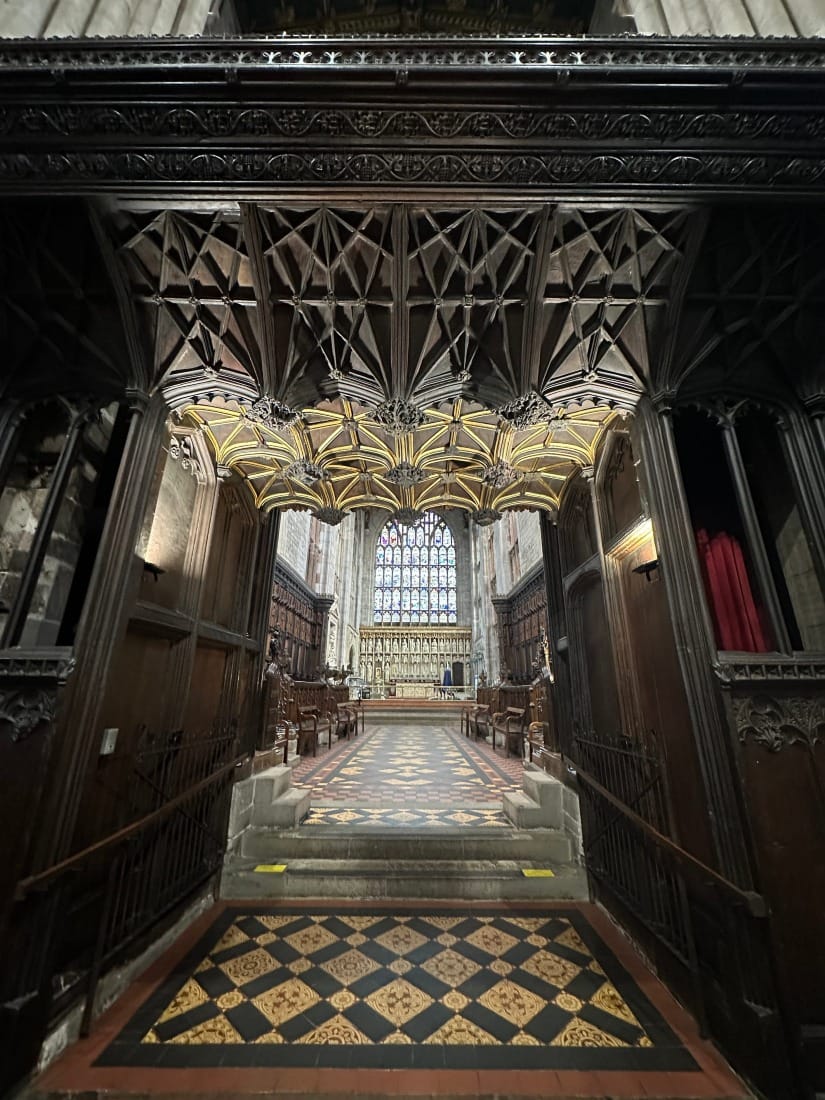
The jewel in the crown at St. Laurence, including some beautiful bench end carvings. The best of these is a Pietà - depicting the Virgin Mary holding Jesus after crucifixion.
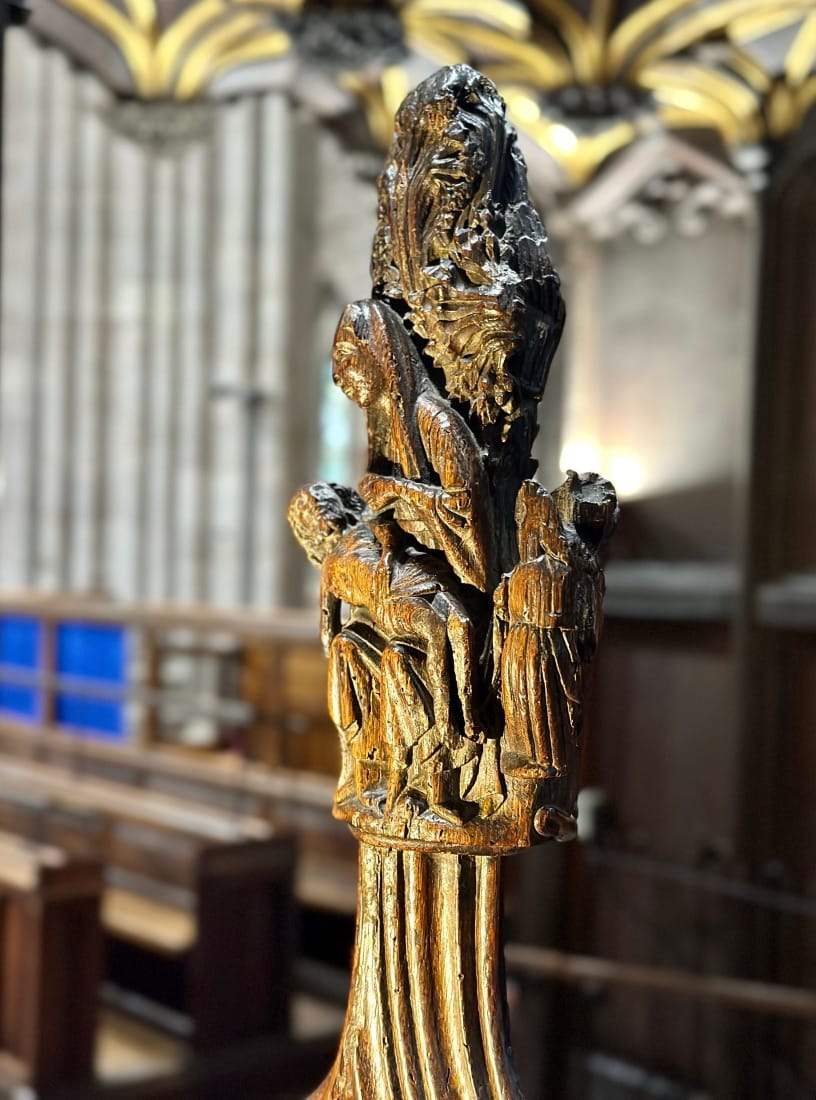
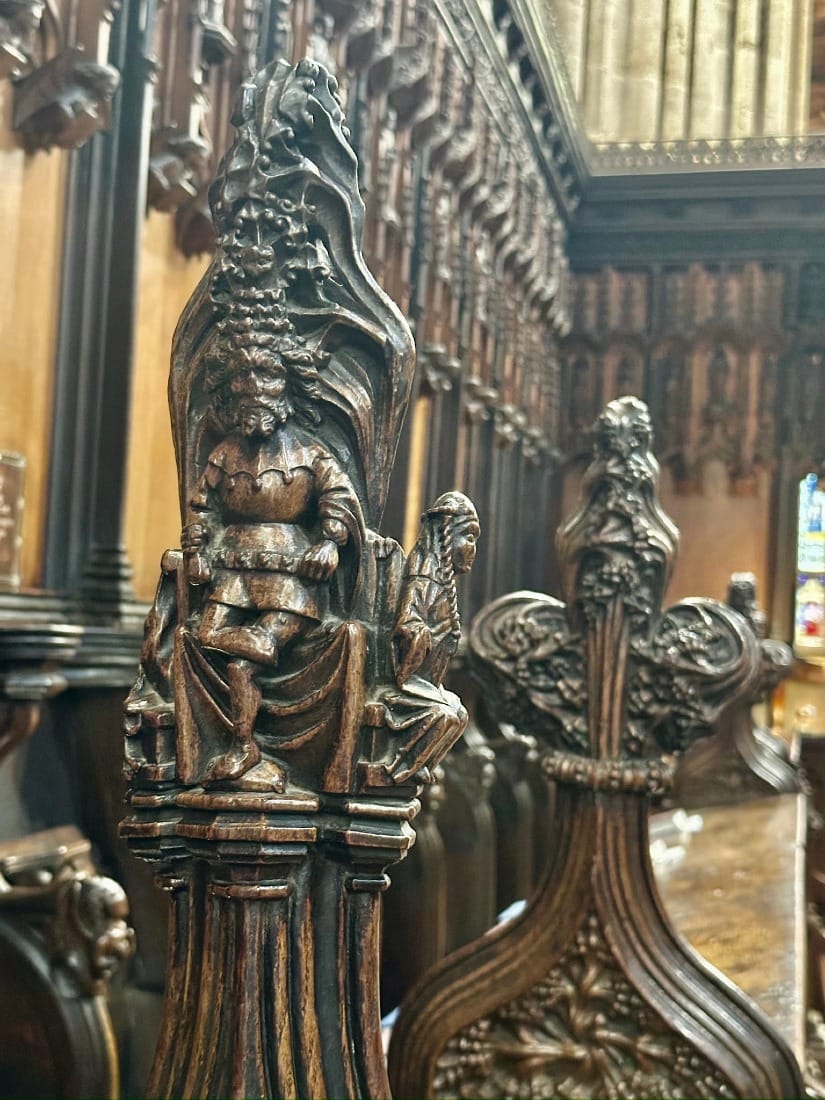
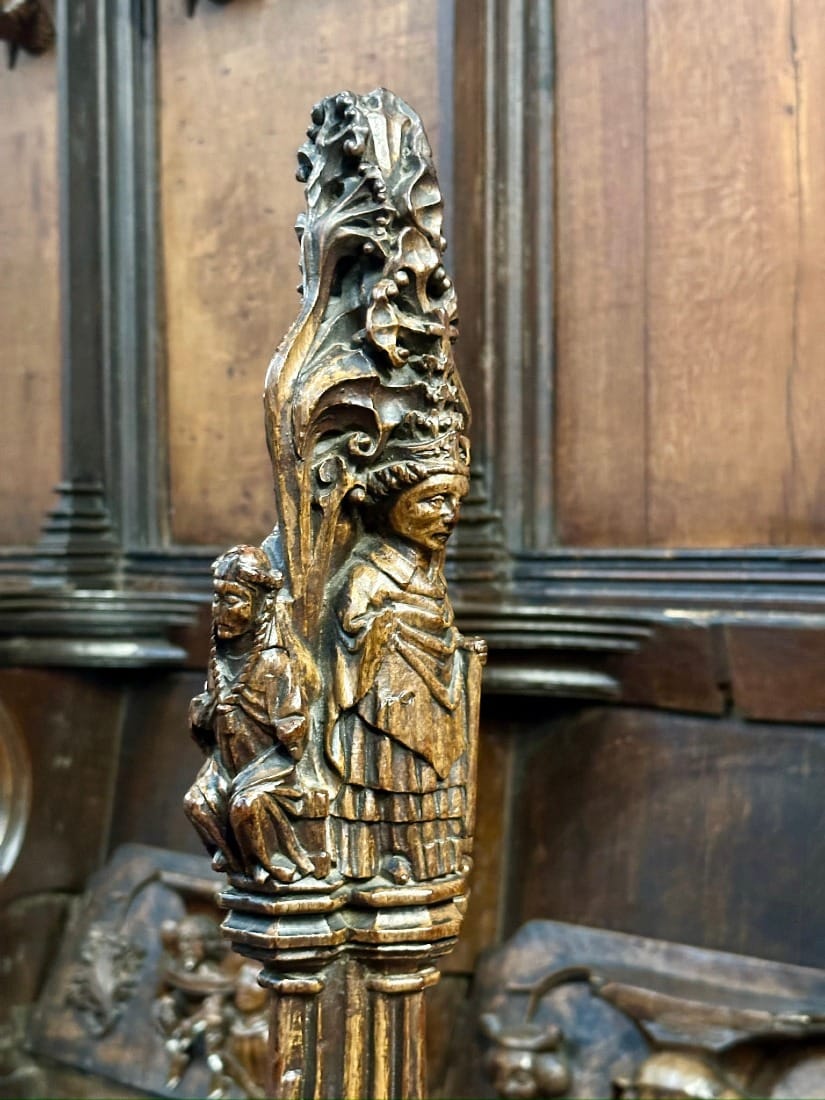
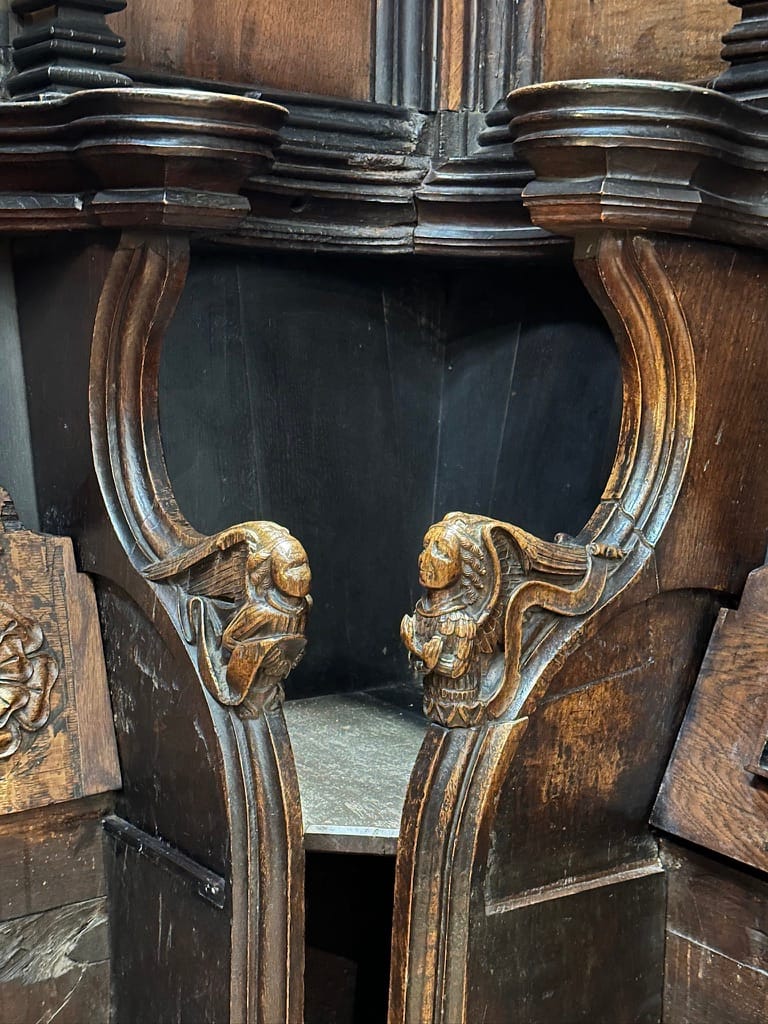
Misericords
The stalls are of the C15th and have one of the best collections of misericords in the country - each one carved in deep relief. Here's a selection:
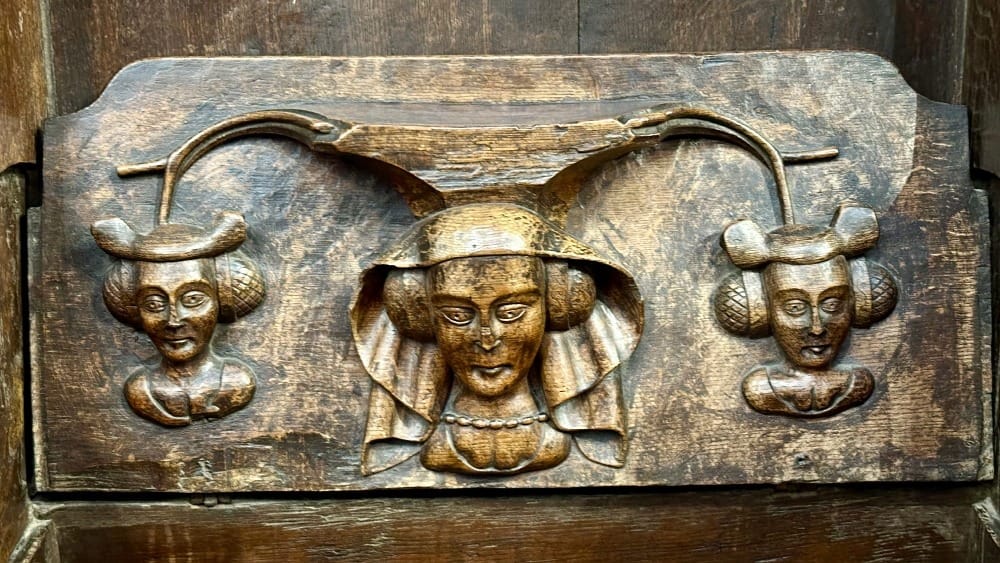
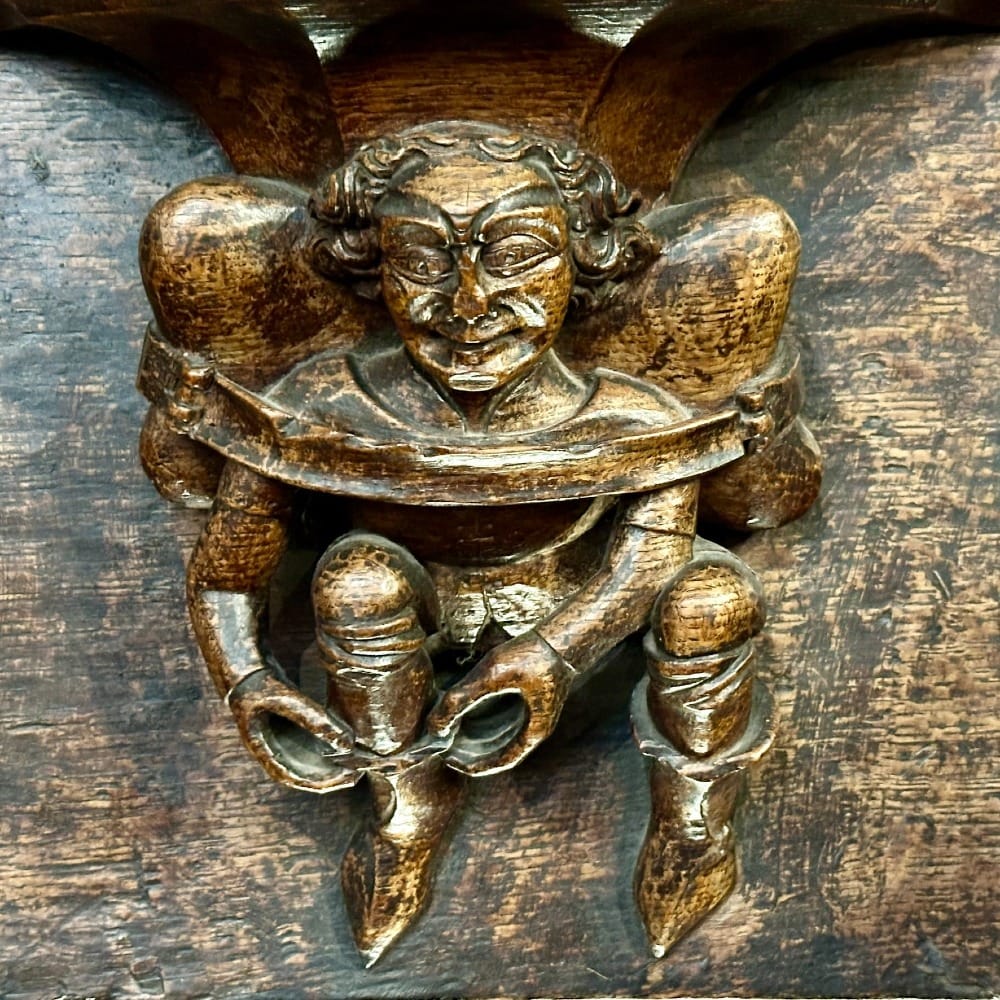
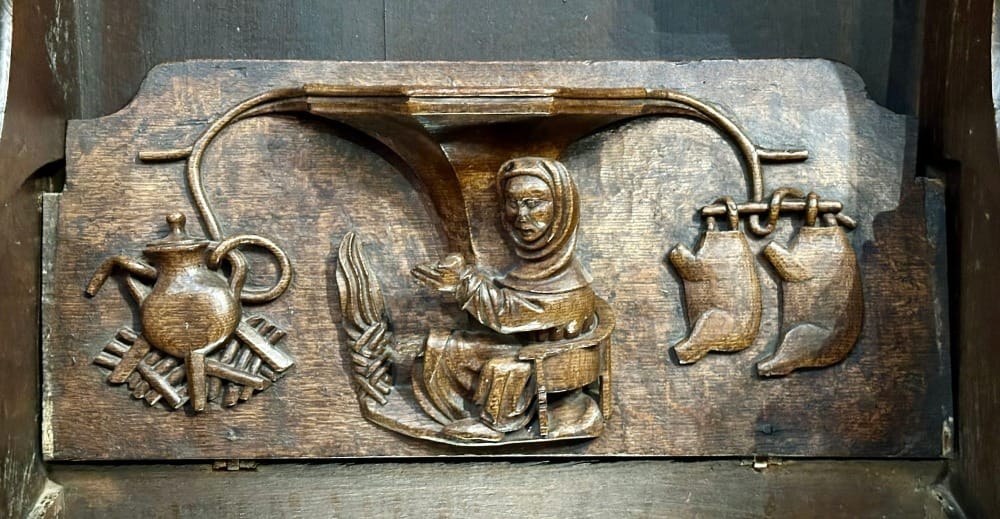
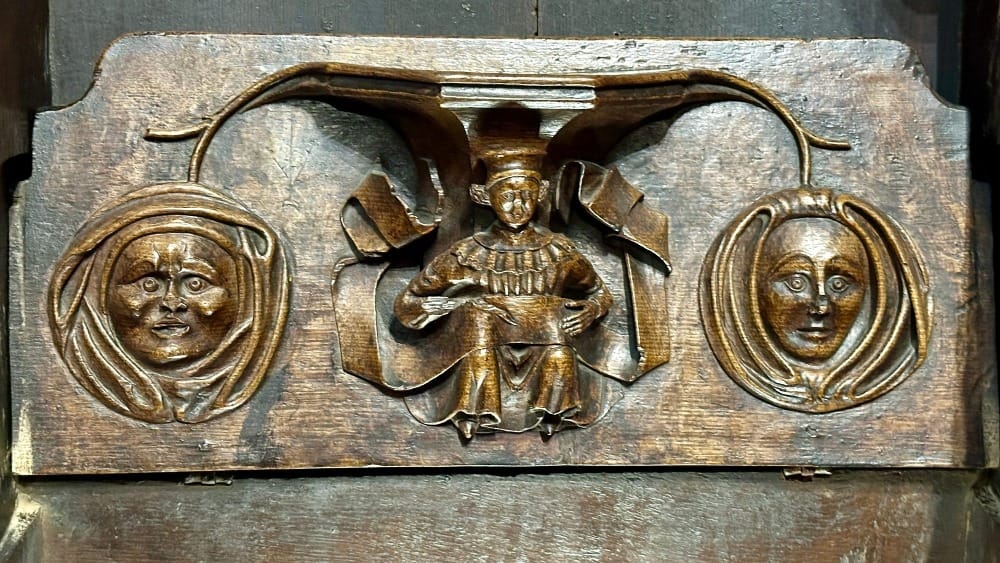
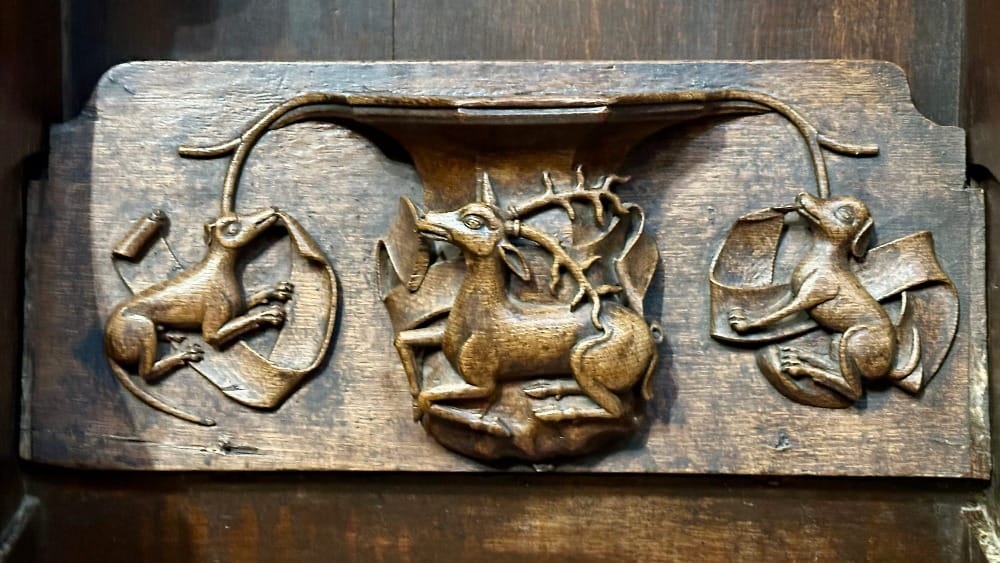
The misericords hold one intriguing C20th addition - that of the late Queen (and Windsor) (I wonder if she ever sat on this?)
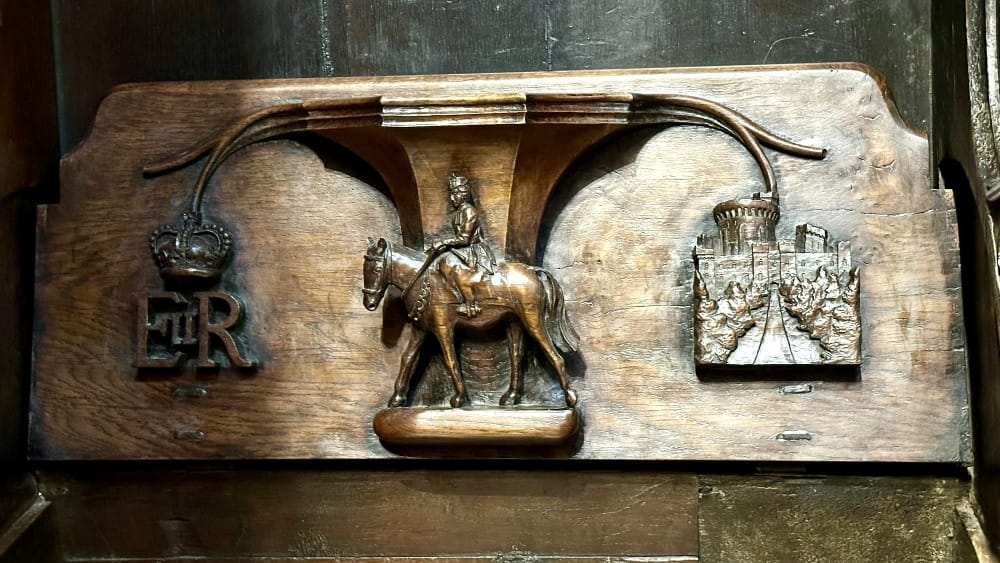
I head out of the chancel and catch the guide's eye.
'Can you tell me of a decent pub nearby with a historic interior?'
'Oh yes, I'll take you there - there's lots to tell you about! But before you do I've just got the key to the Parvis Room - would you like to see it?
The Parvis Room
The guide opens the door and I'm left to my own devices. The room is above the south porch and accessible by a spiral staircase. I wander up the stairs and am gifted with a shuttered view of the room through a shouldered door. I'm taken aback - the room still has large swathes of original plaster work left.
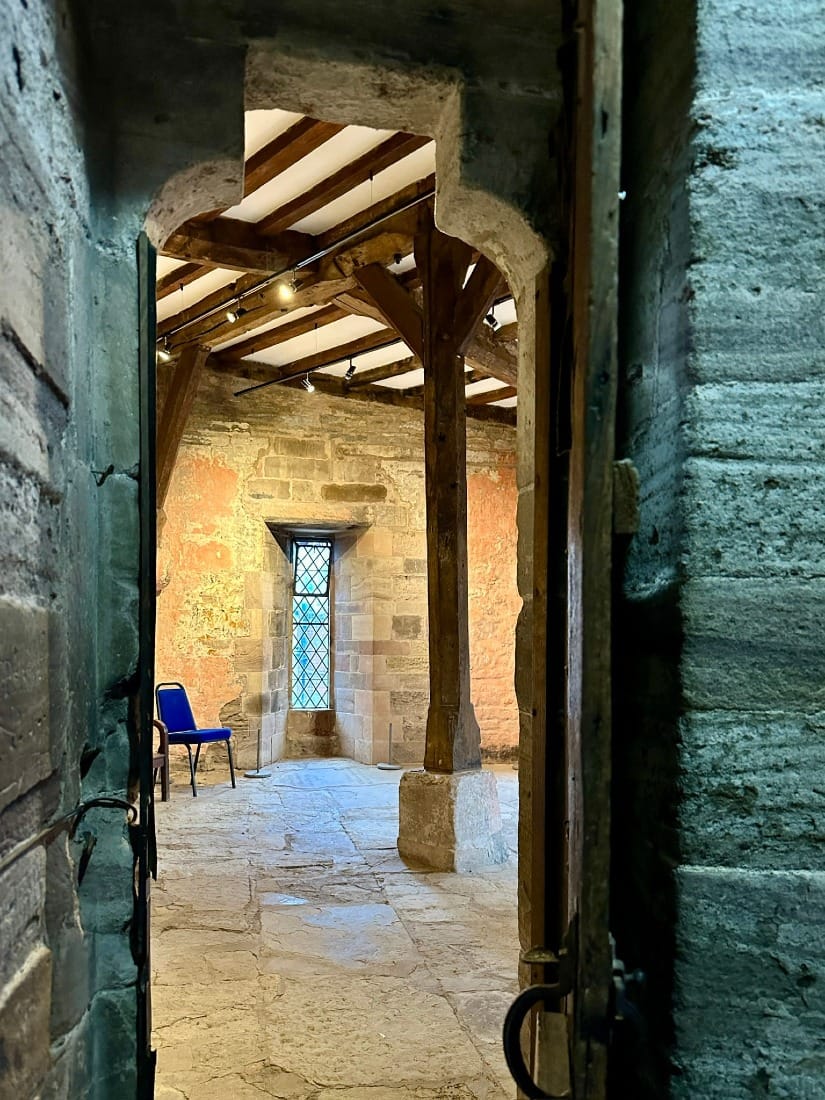
If you do ever visit St. Laurence - ask to see this room - it isn't usually open to the public.
I need to change my perspective - take off the 'Andy Marshall' lens and look at this room through Tim Meek's eyes.
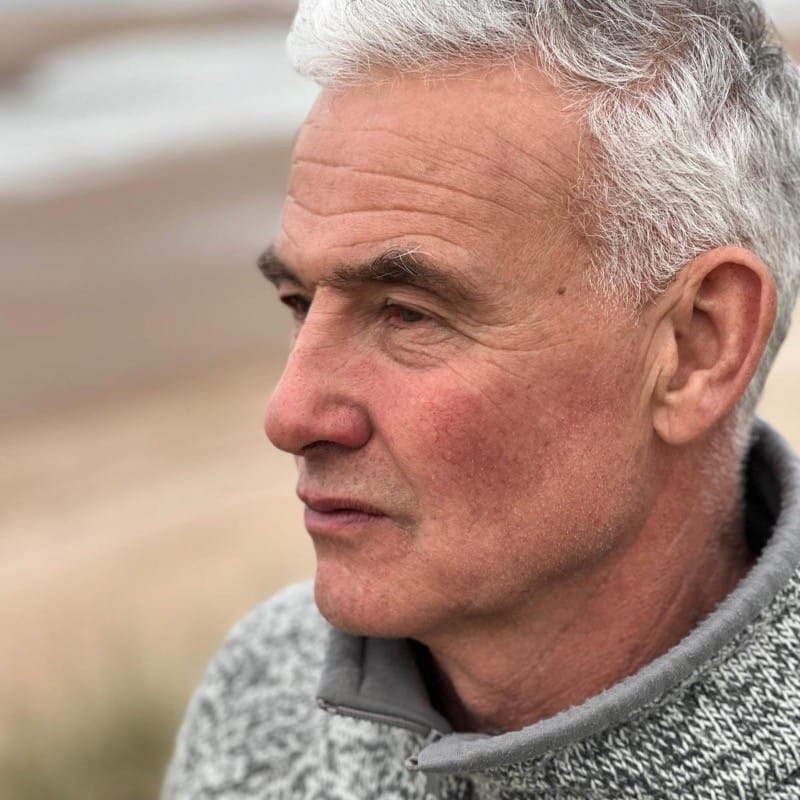
Looking through Tim Meek's eyes.
Dr. Tim Meek is a specialist on wall coatings and wrote a guest post for the digest recently. I've always struggled to understand the concept of how lime mortar can be coated delicately over complex surfaces - and thus had many doubts about some buildings that were claimed to be rendered in medieval times.
Tim has gifted me with new ways of seeing.
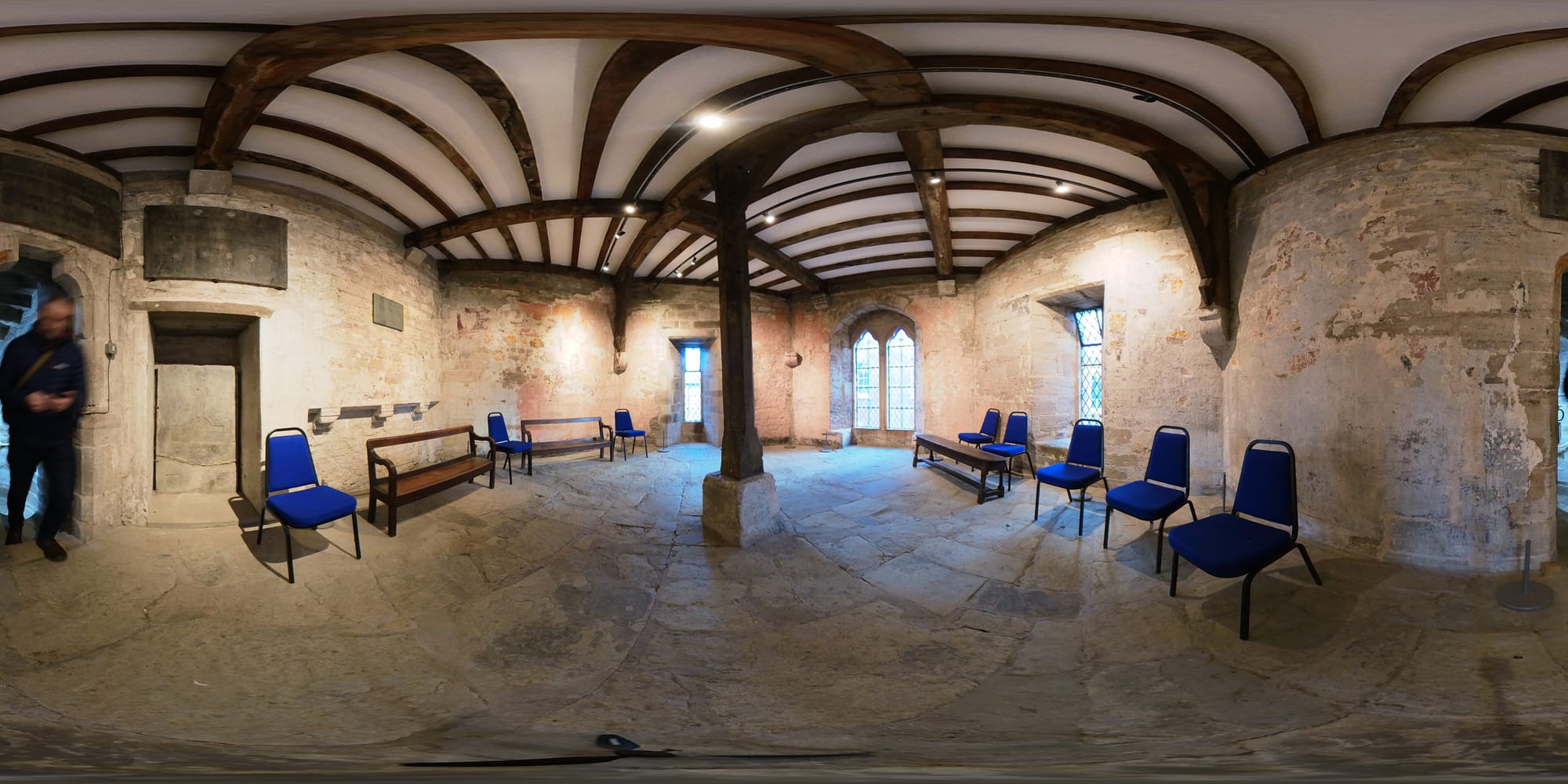
In the Parvis Room my doubts were dispelled - for the coating has been used over every surface including corbels and lintels - and it has survived.
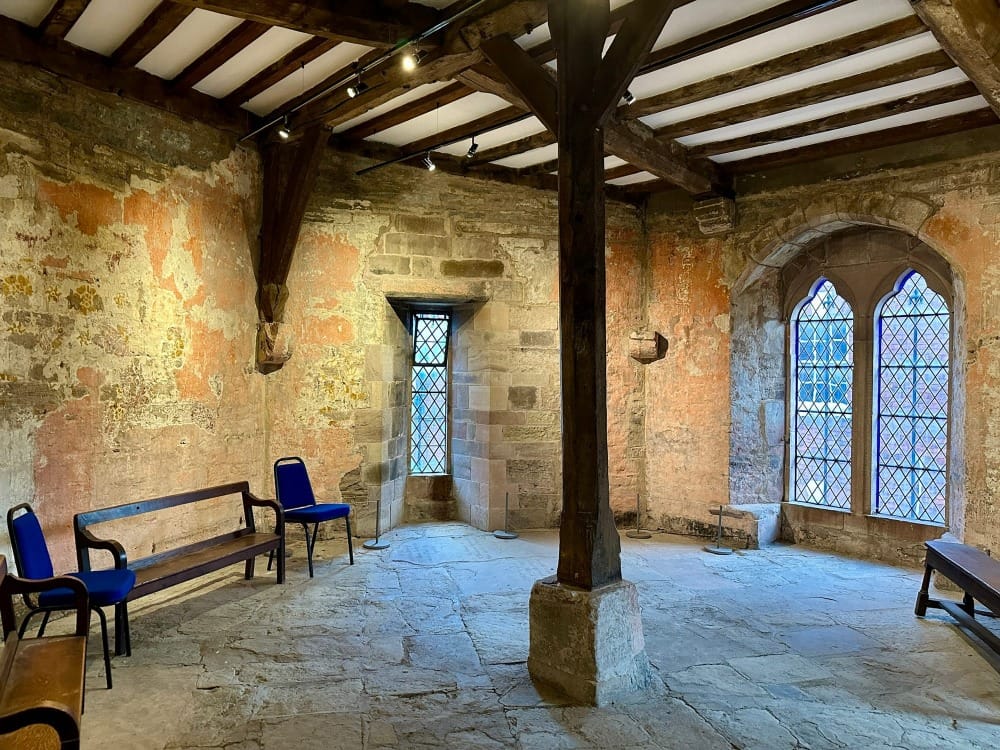
The room was originally used by the church deacons and then became a library. It has patterned floral decoration on the walls.
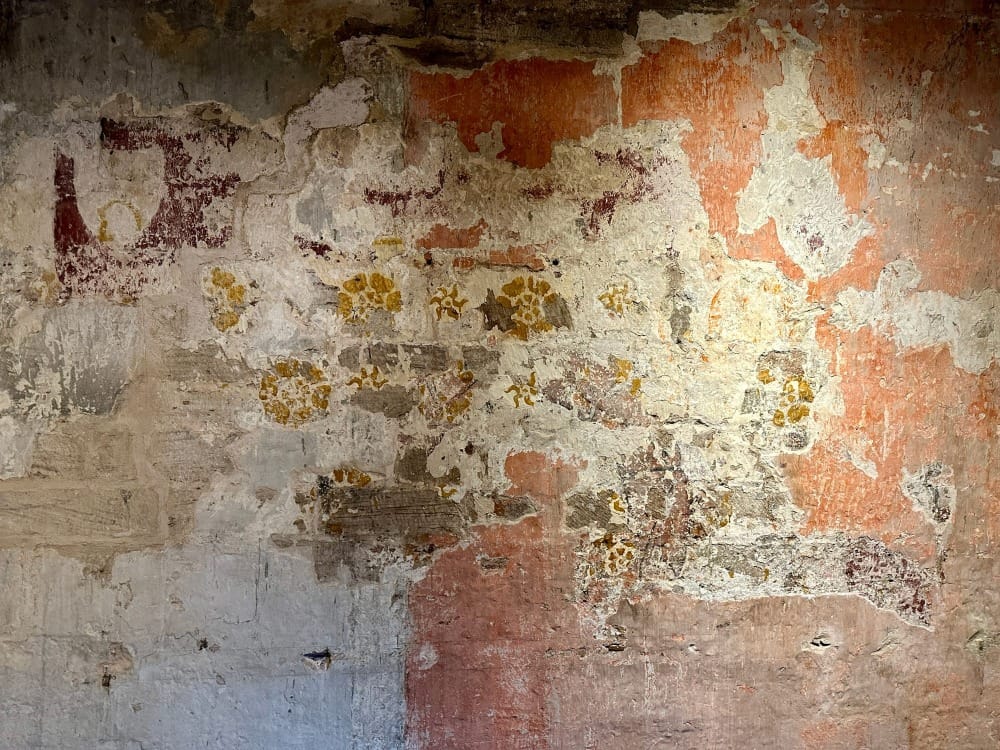
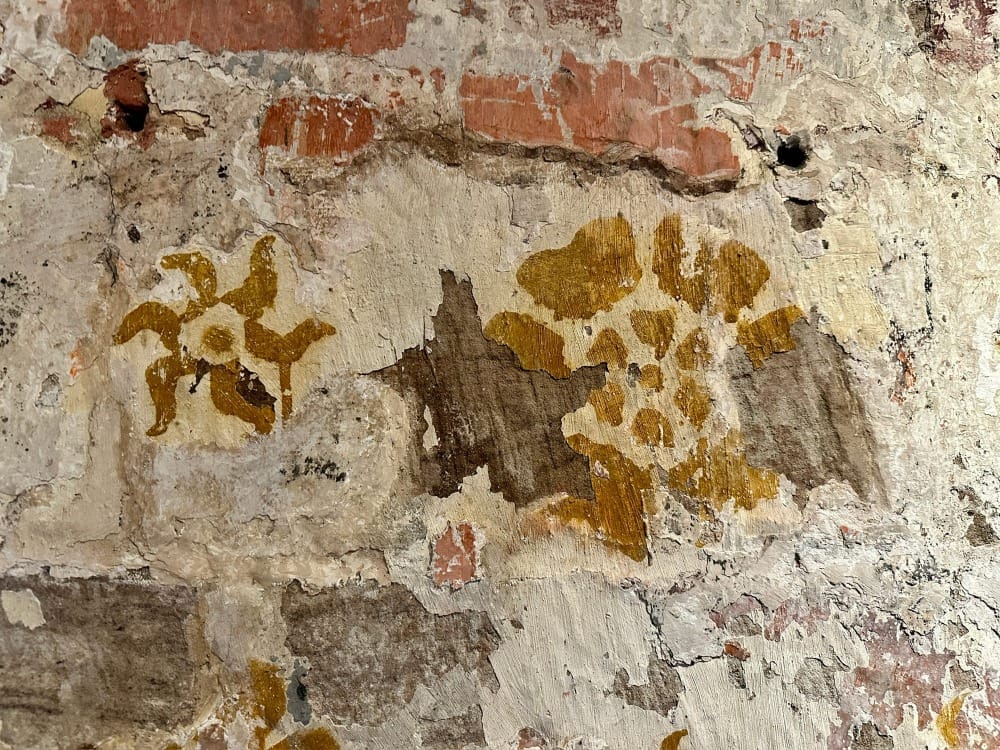
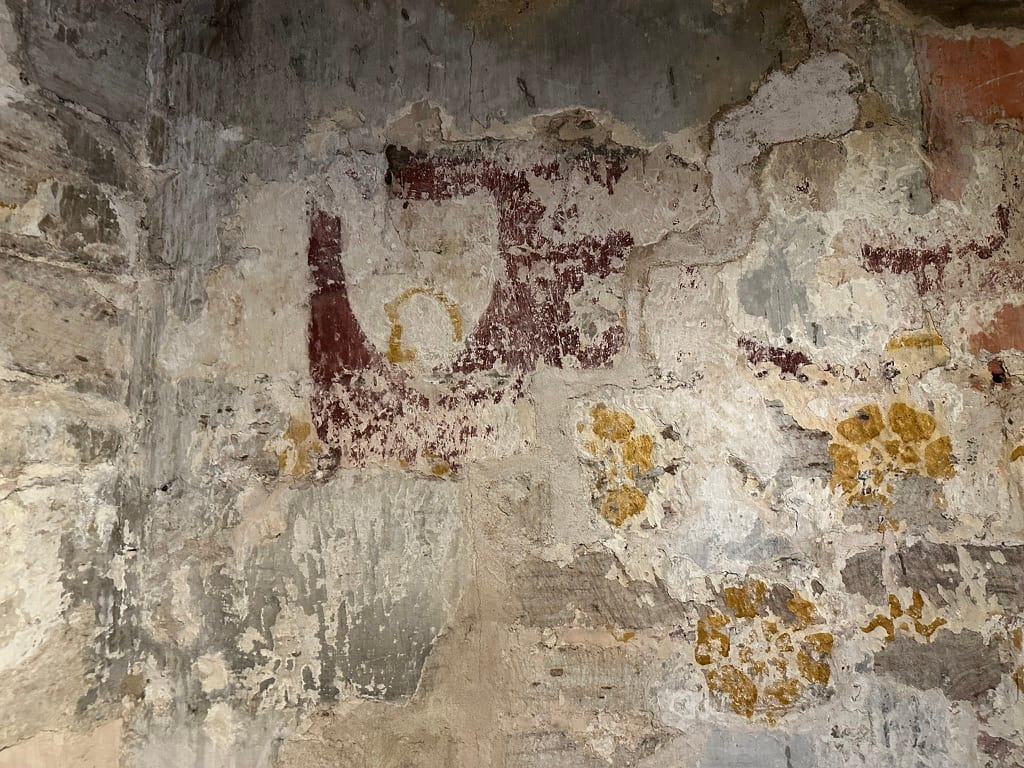
And a thin ochre base layer.
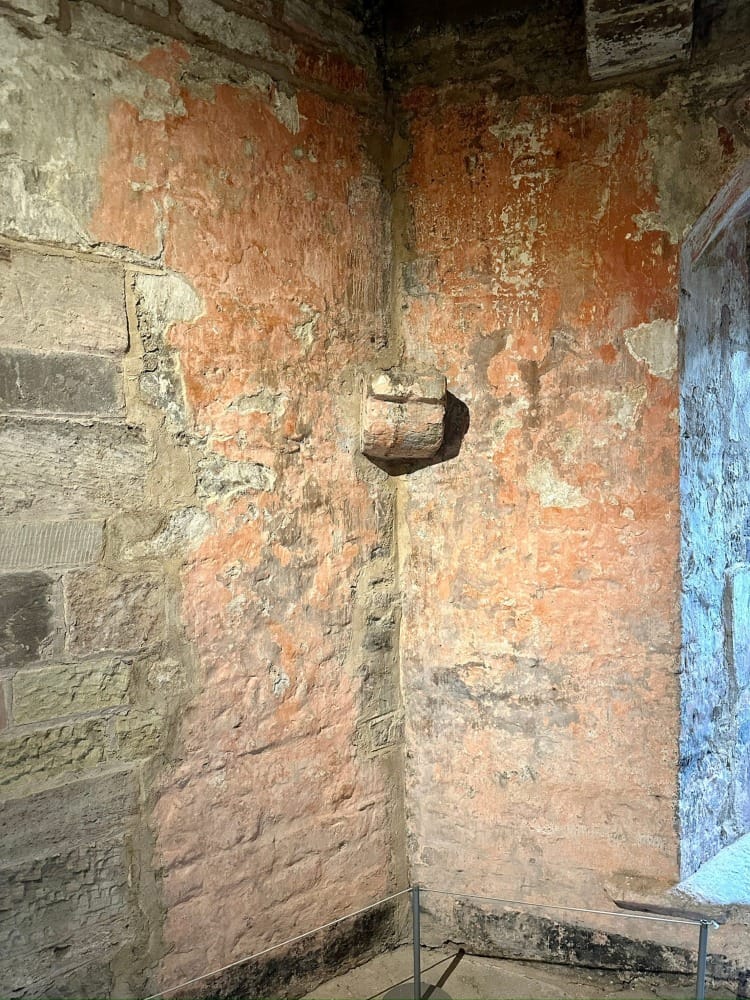
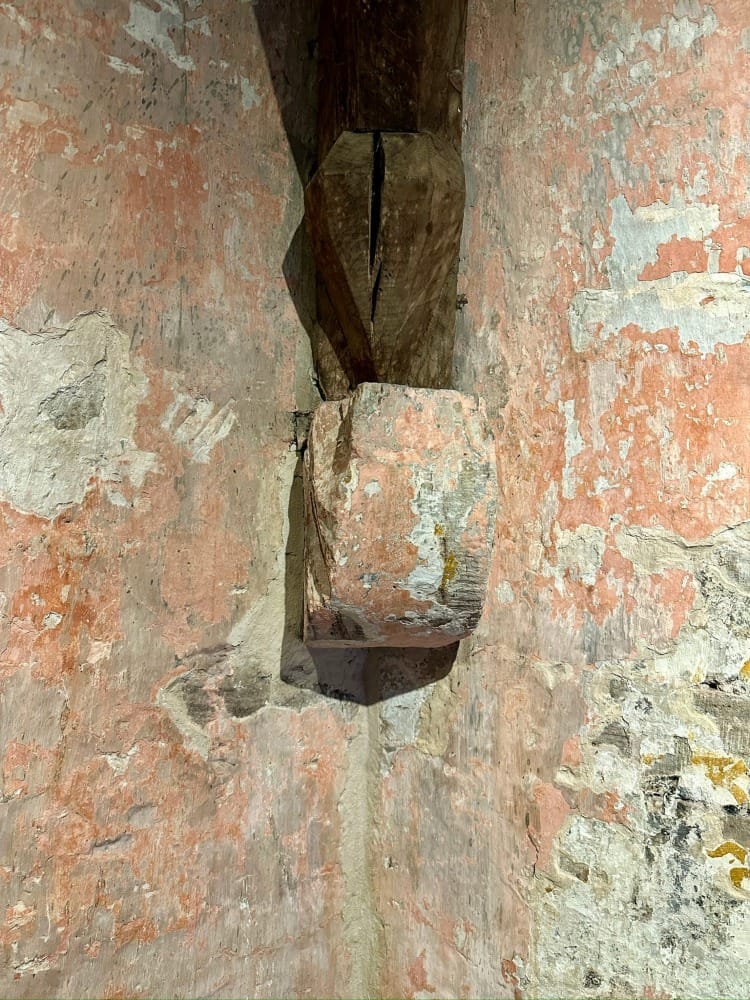
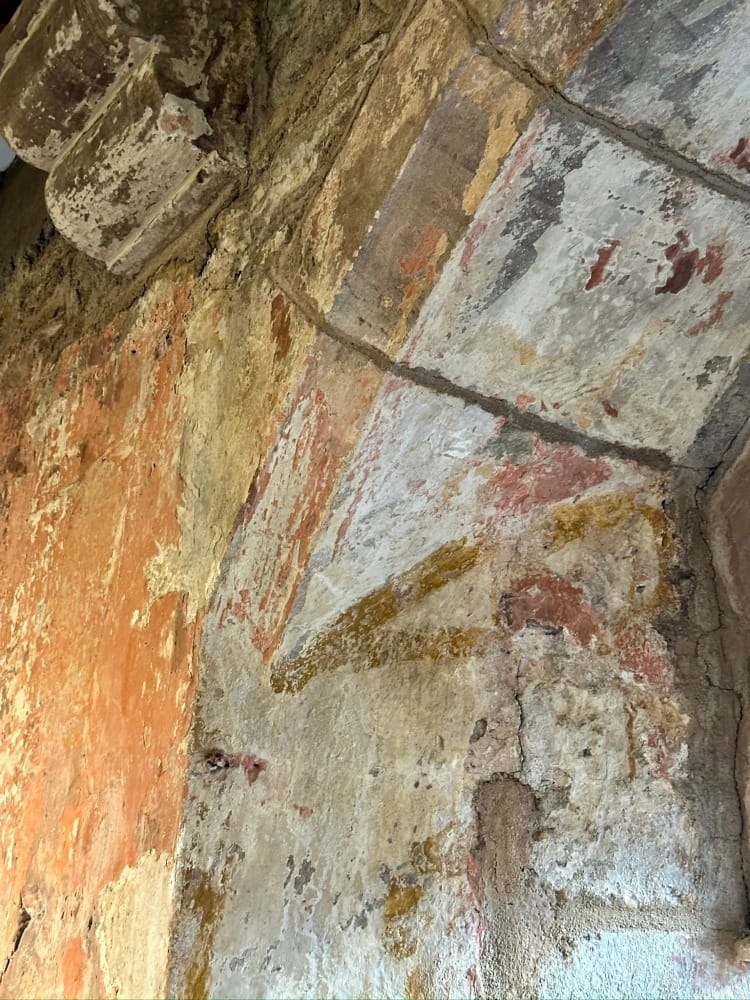
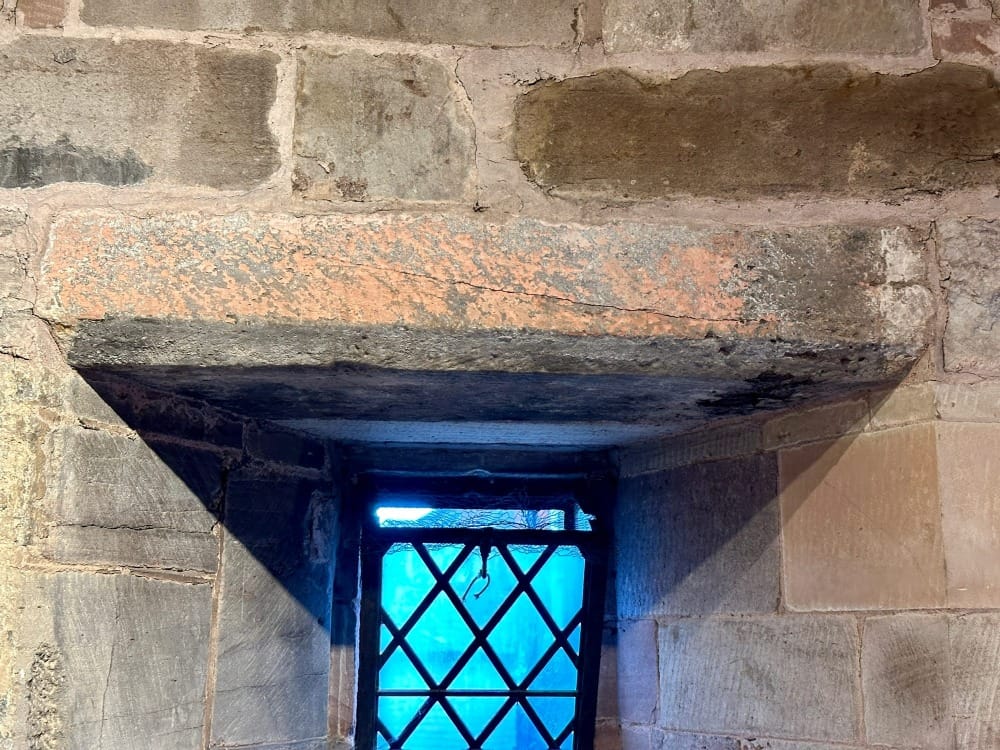
As I walk around the space I can sense how the room would have looked several hundred years ago. Our modern selves would paint within boundaries, negate the windows and ceiling, but here, every surface is covered in render and paint. The render has a kind of shape shifting effect - changing it from a room into a spatial concept.
Members can see the Parvis Room in gorgeous VR (and get a sense of the concept and space) here:
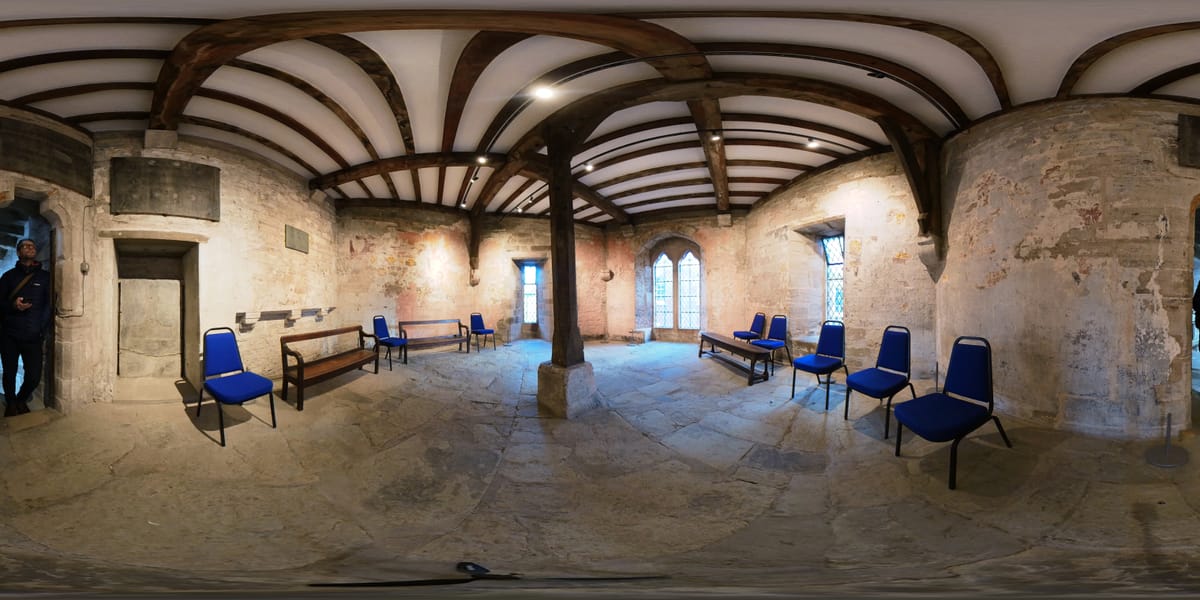
The Rose & Crown Pub, Ludlow
The Rose & Crown has one of those delicious entry points that is full of intrigue and mystery - through a ginnel and into a courtyard.
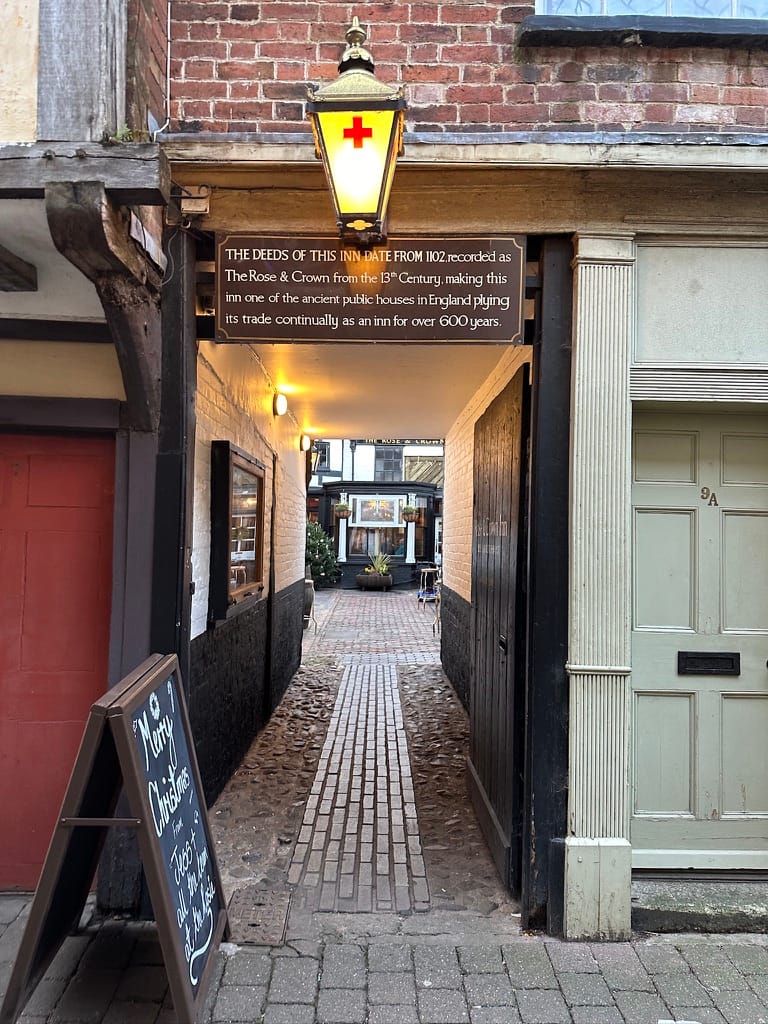
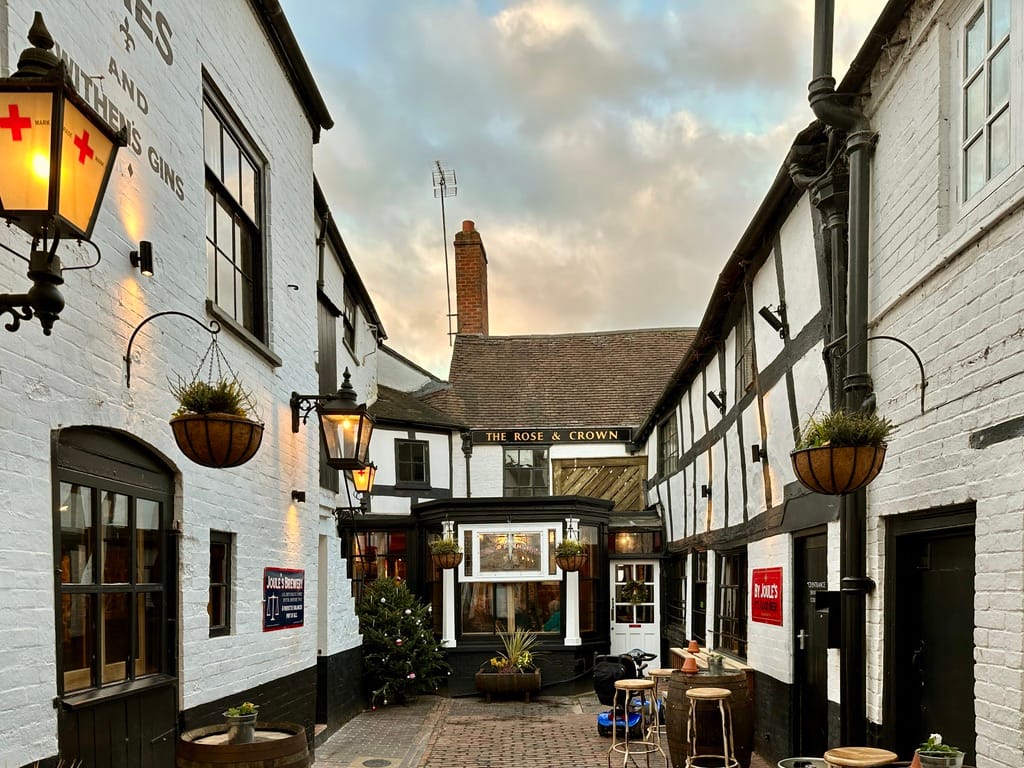
But my guide says that the best bits are around the side and at the back of the pub. They show the remains of a medieval building that was adjacent to the chantry cloisters - a building, perhaps, used by the chantry priests themselves.
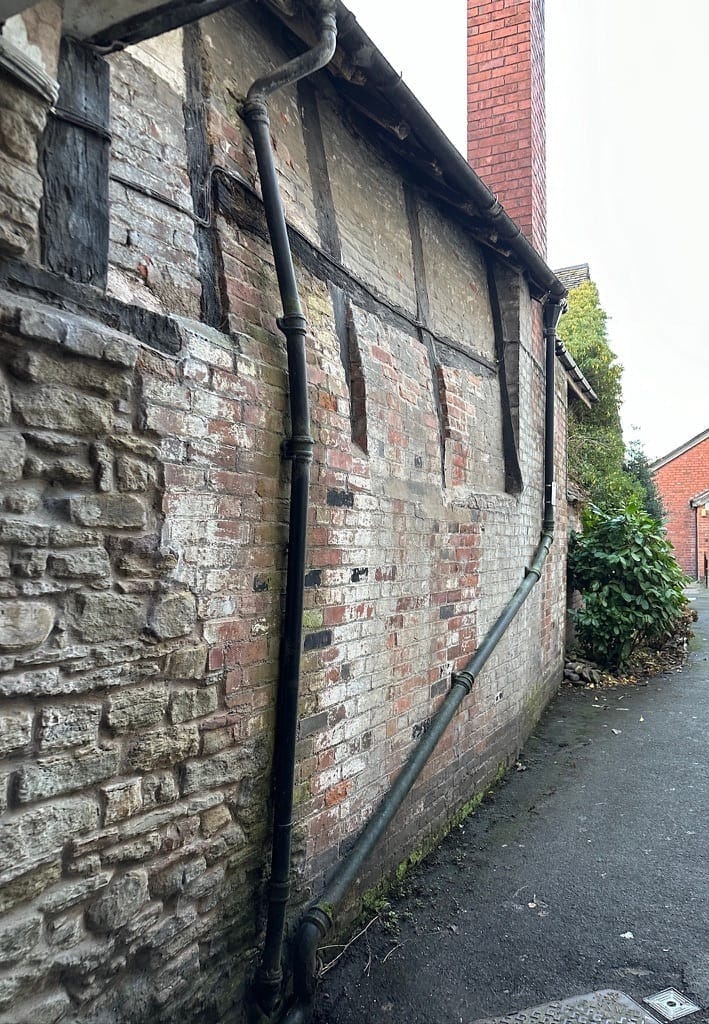
A building for archaeologists.
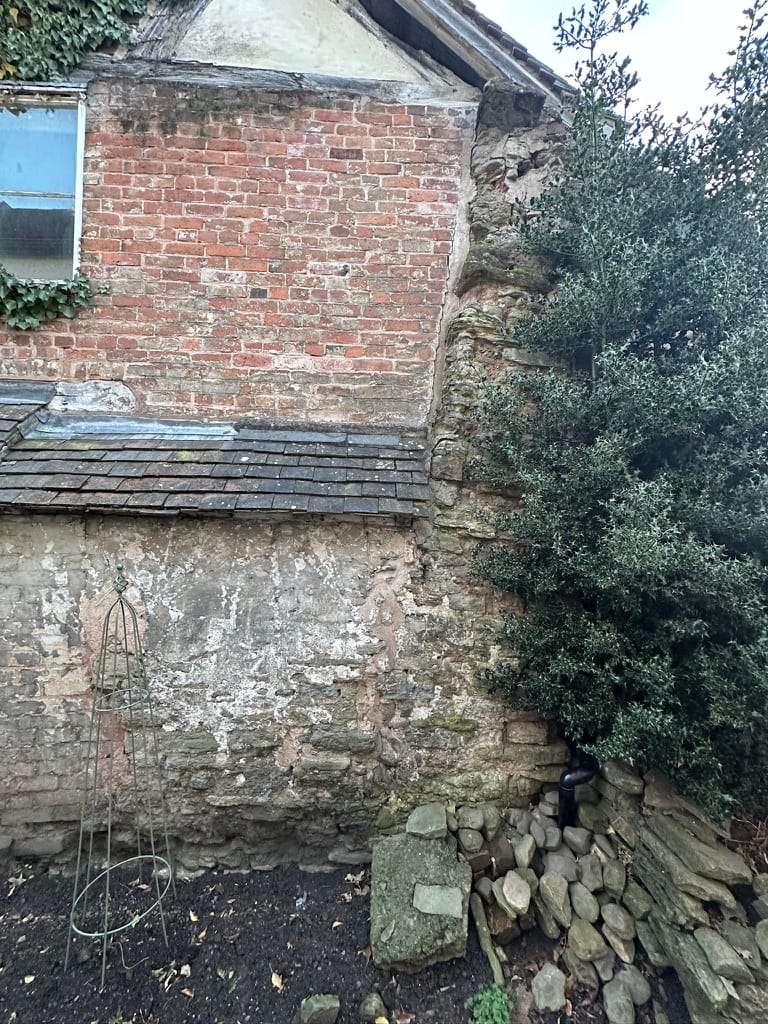
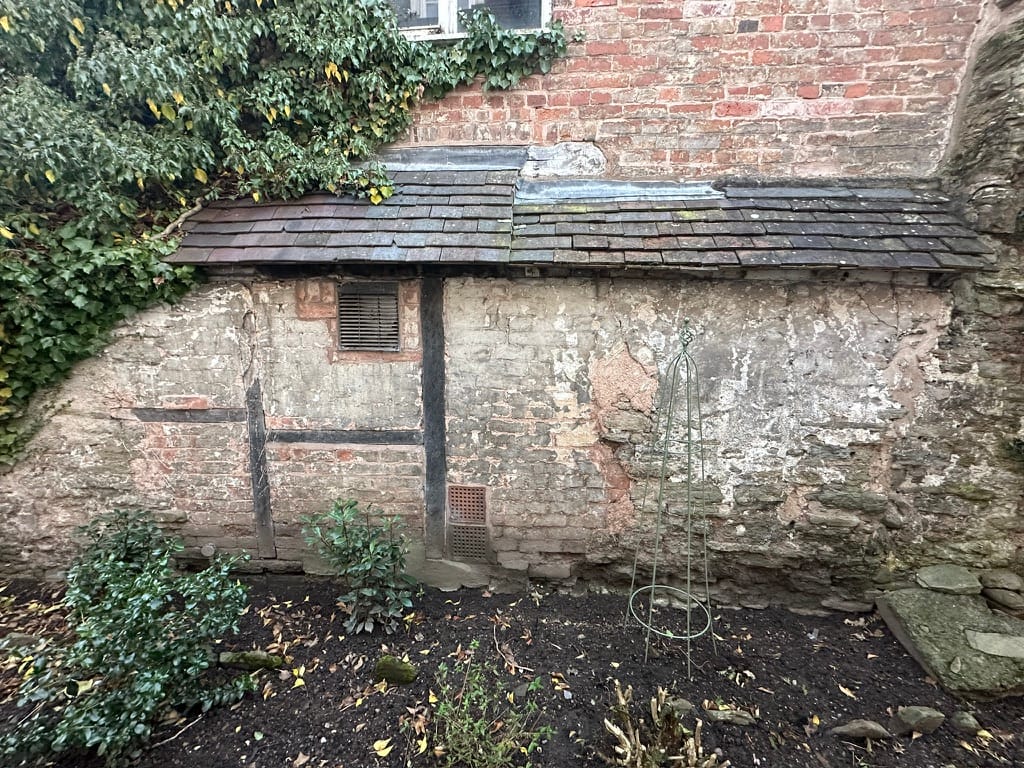
My guide takes me inside to see part of the medieval structure caught in the pub wall like a fly in amber, and then leaves me to have my pint.
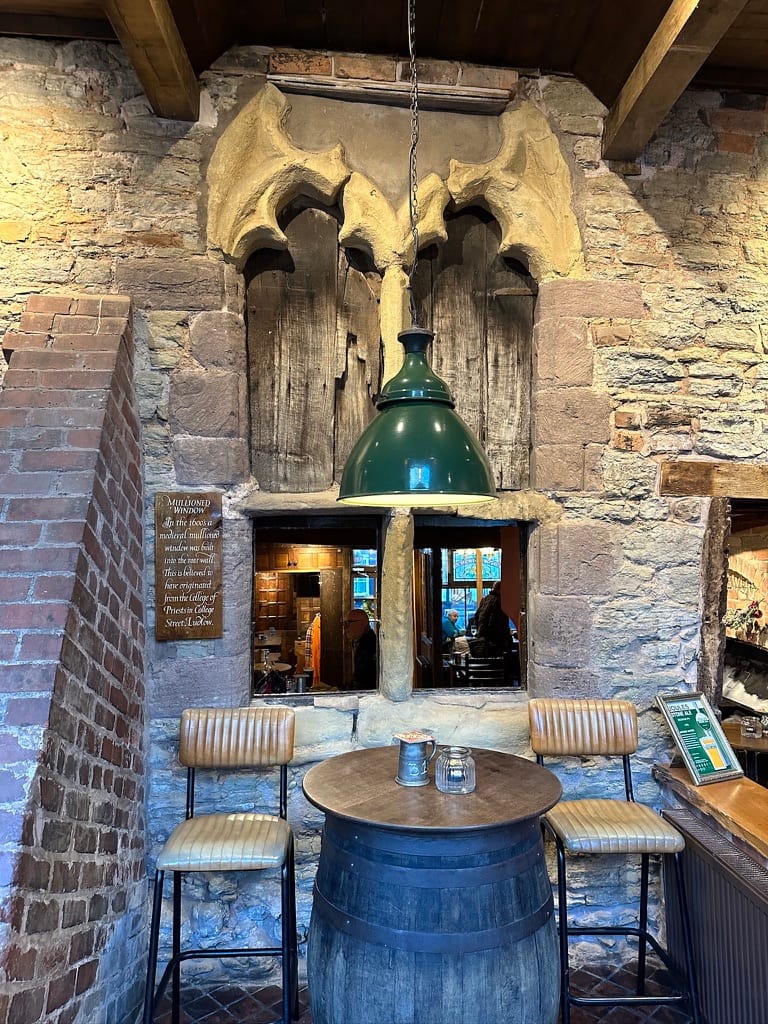
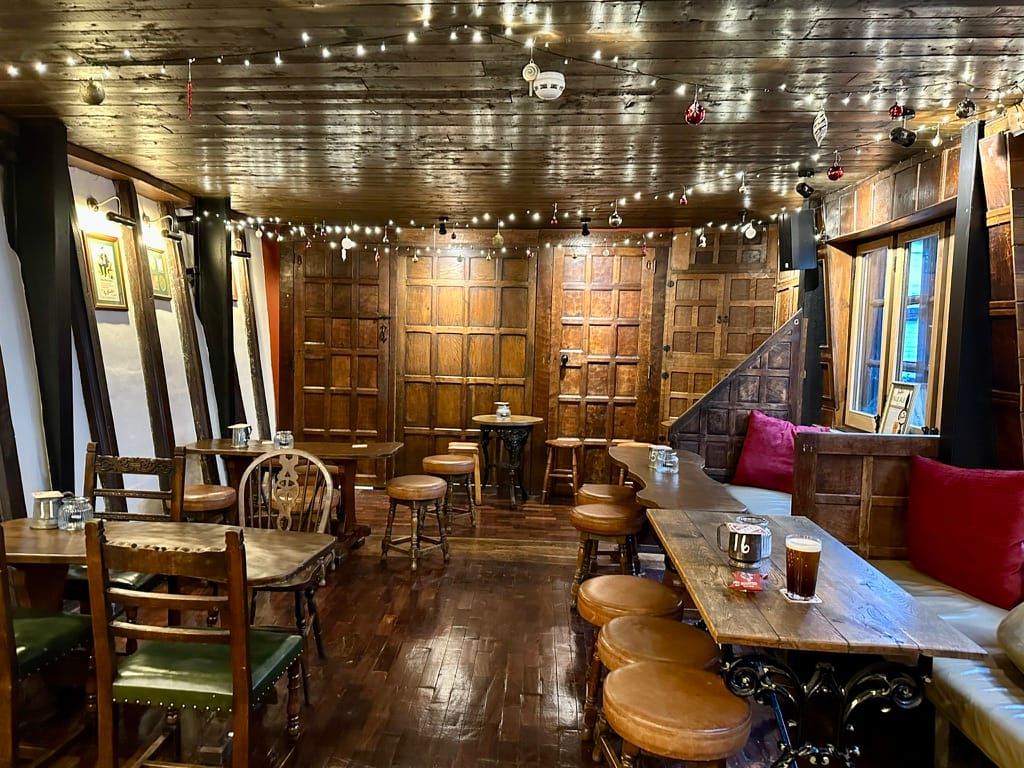
After a well earned rest, I see that the light is dimming outside - a lovely golden twilight, so I head out to capture the heart of Ludlow at night.
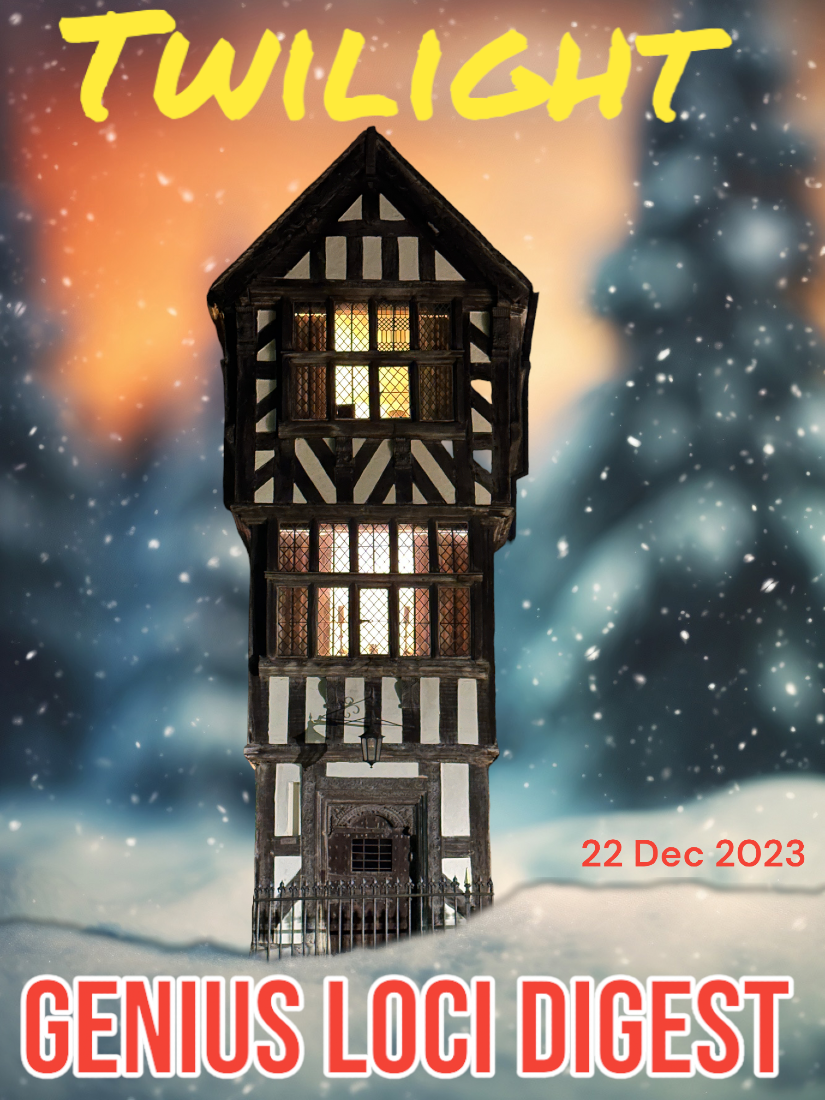
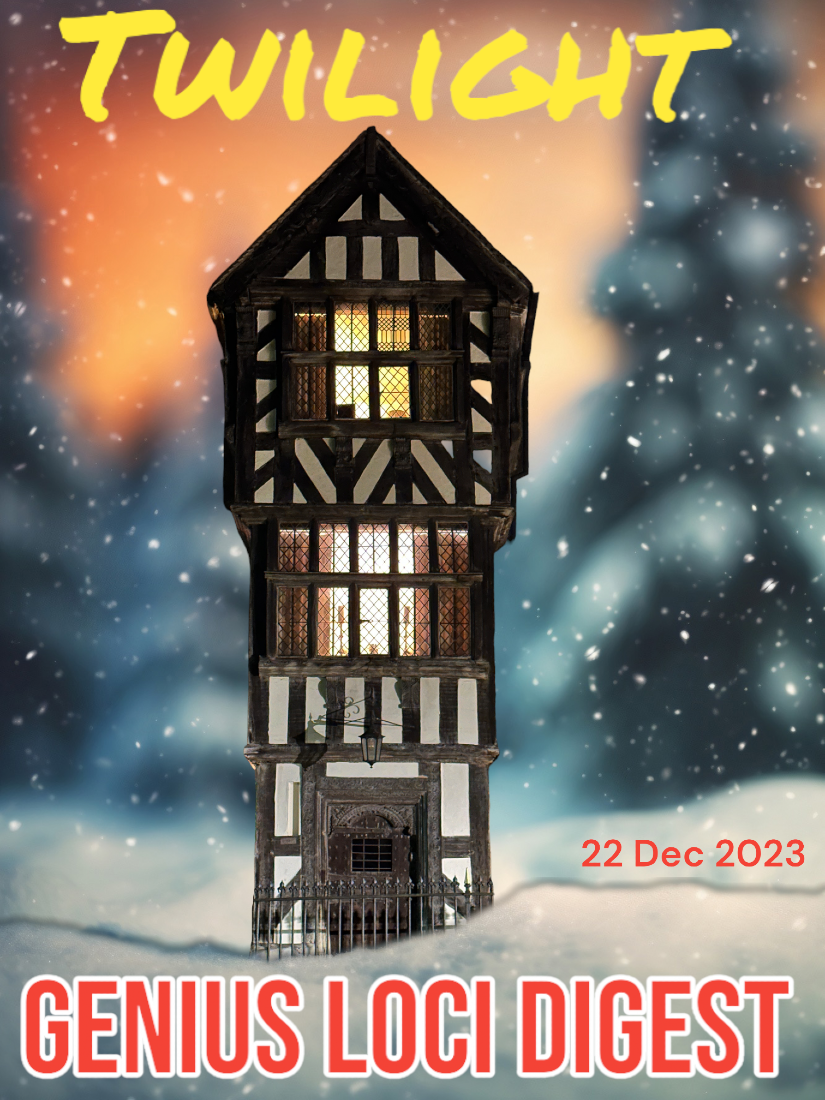
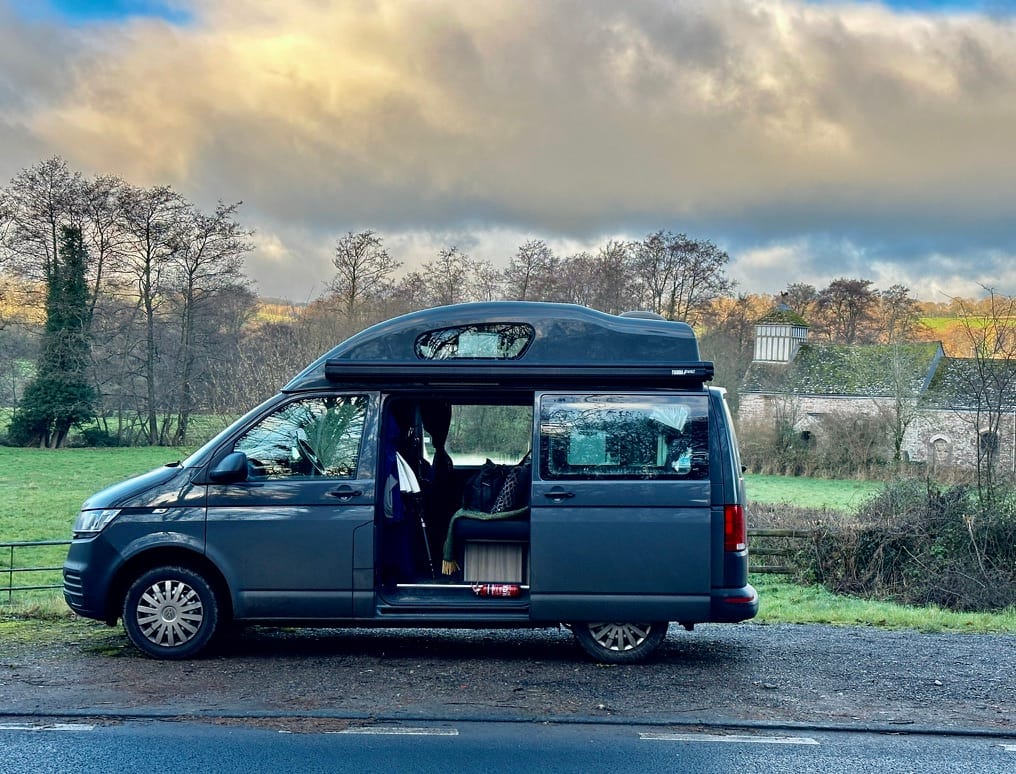
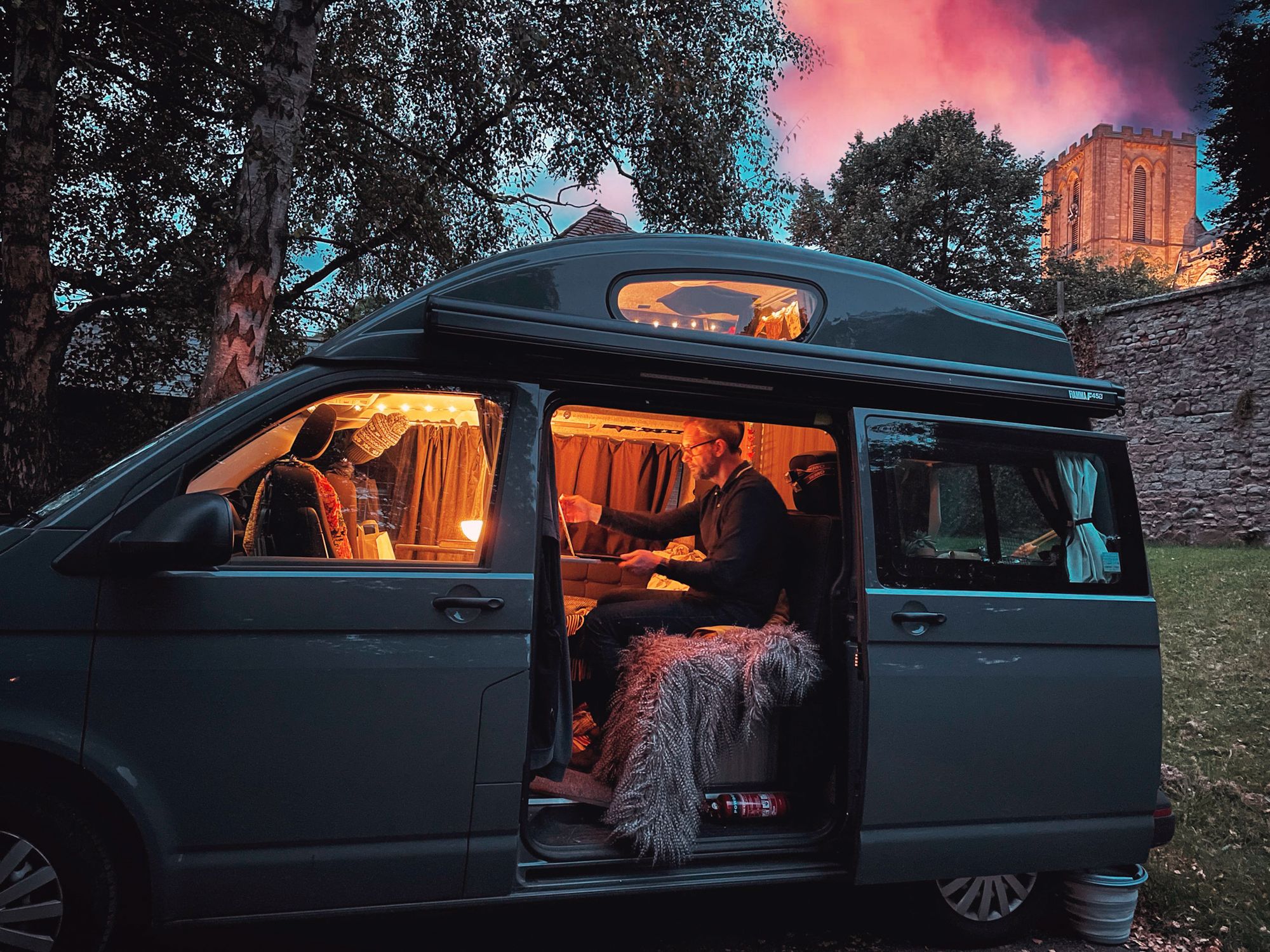
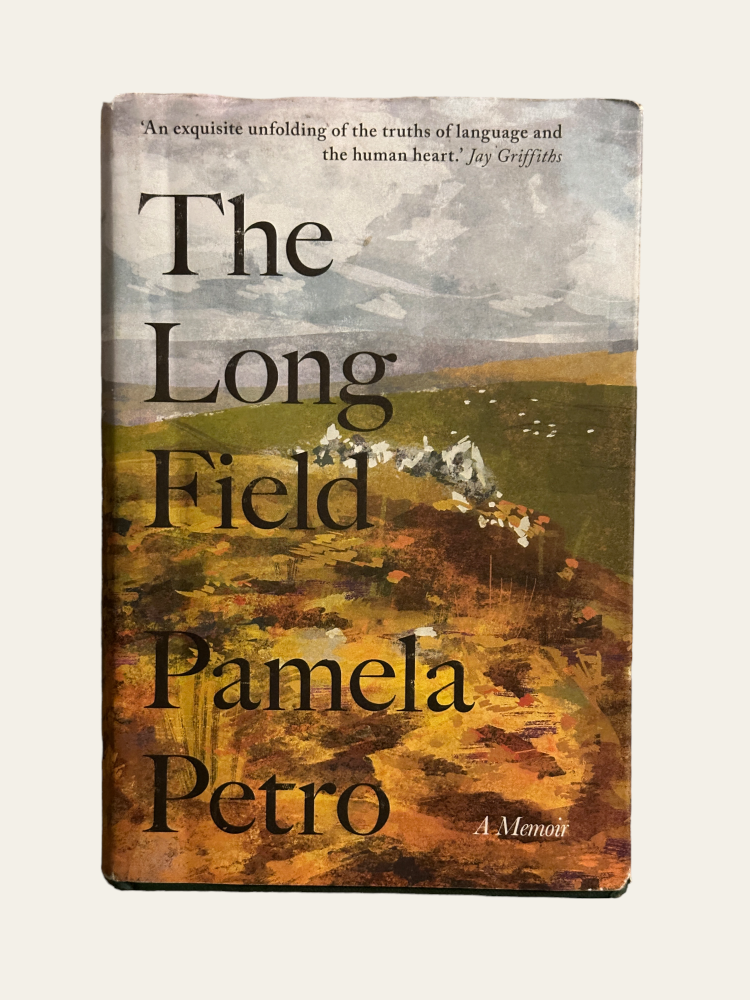
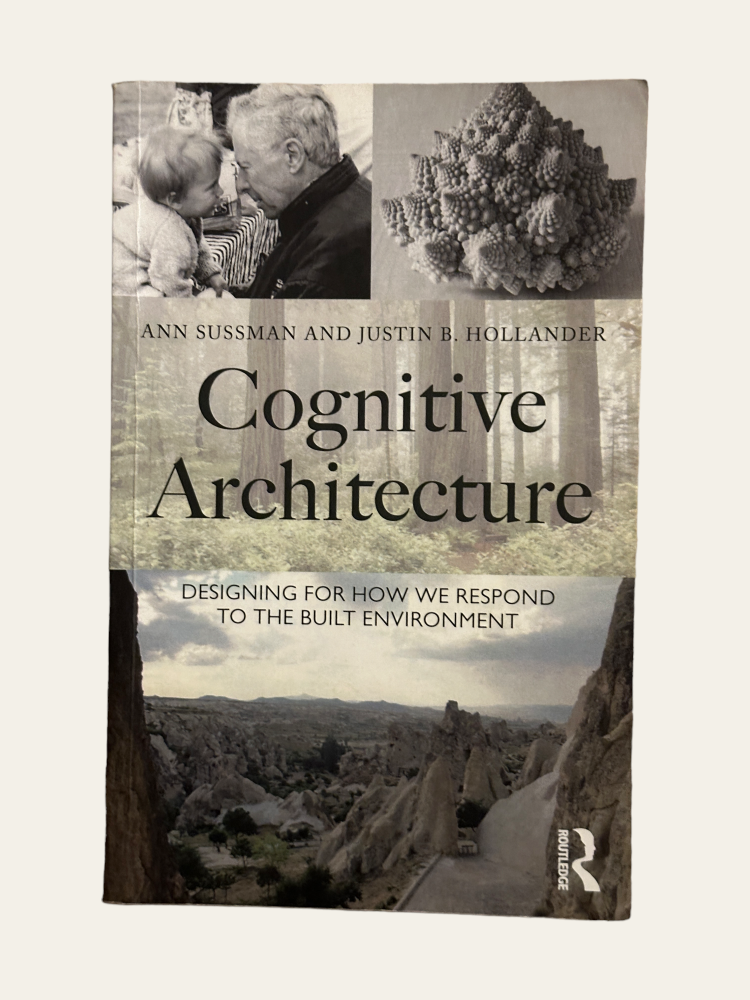
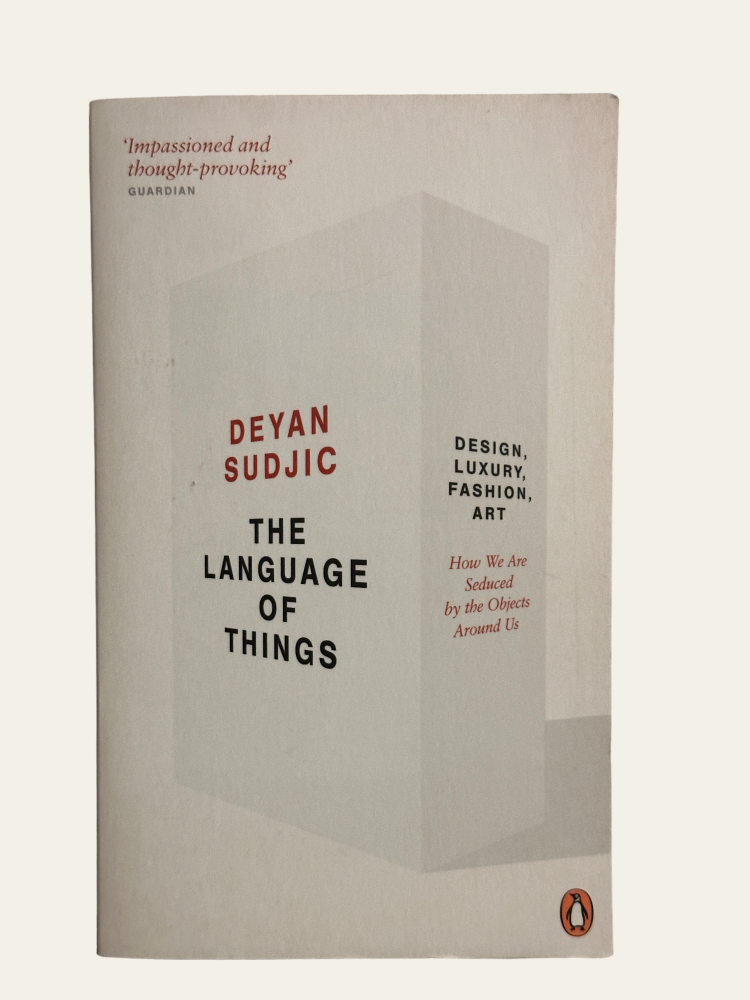
Some wonderful courses and workshops here:
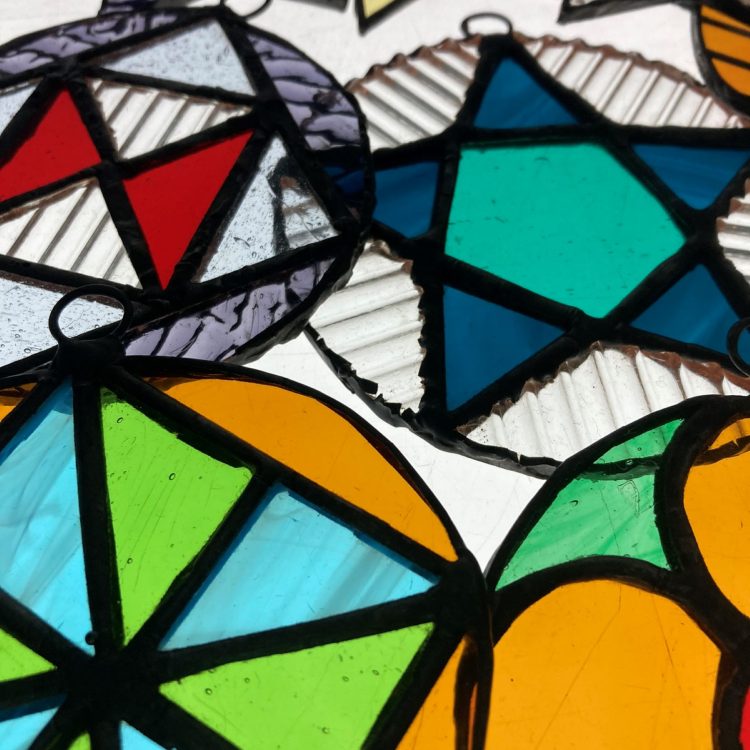



Current listening in the van:

The Misericords Comperandum has been updated with all the Ludlow misericords (many not included in this digest).
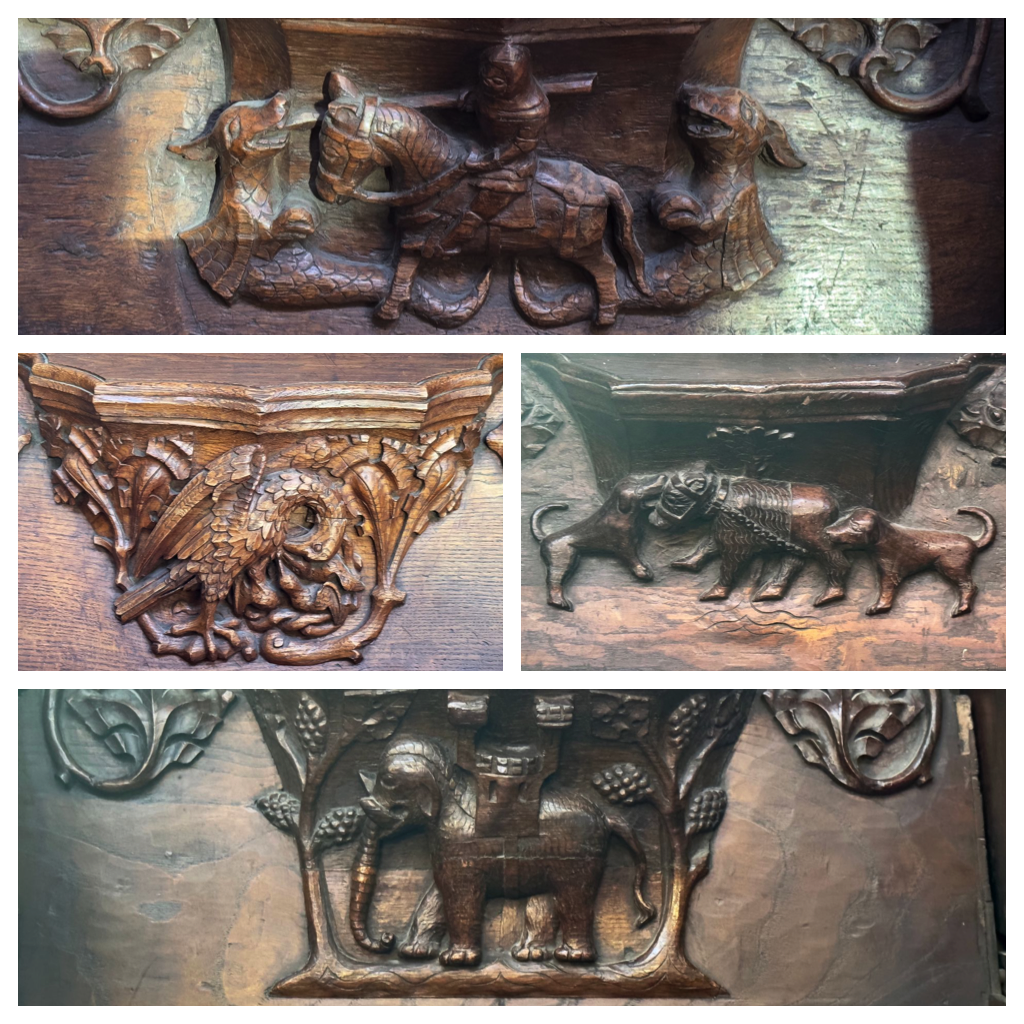
Foliate Head (Green Man) Comperandum has new additions:
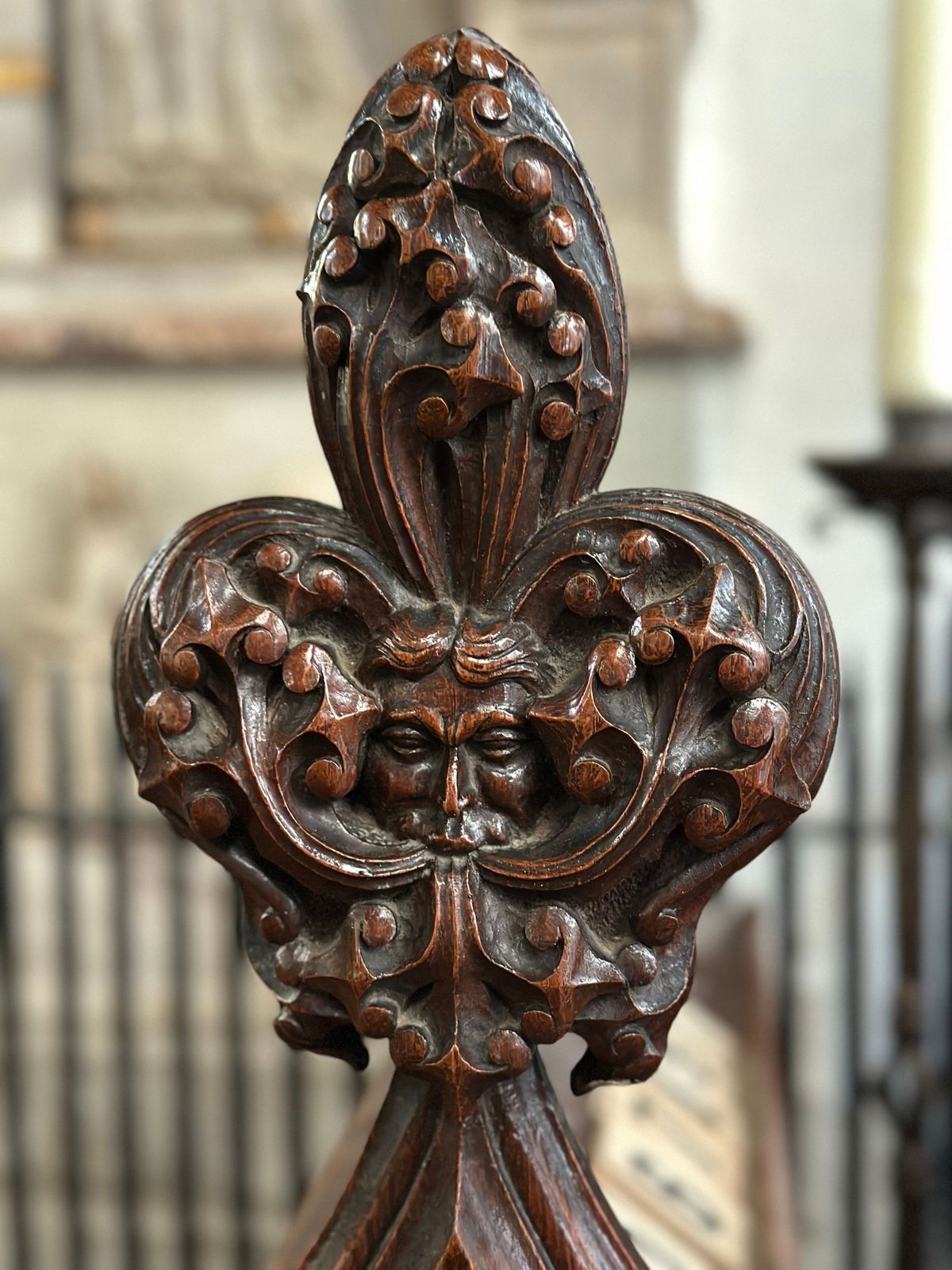
Discover more in the Comperandum:
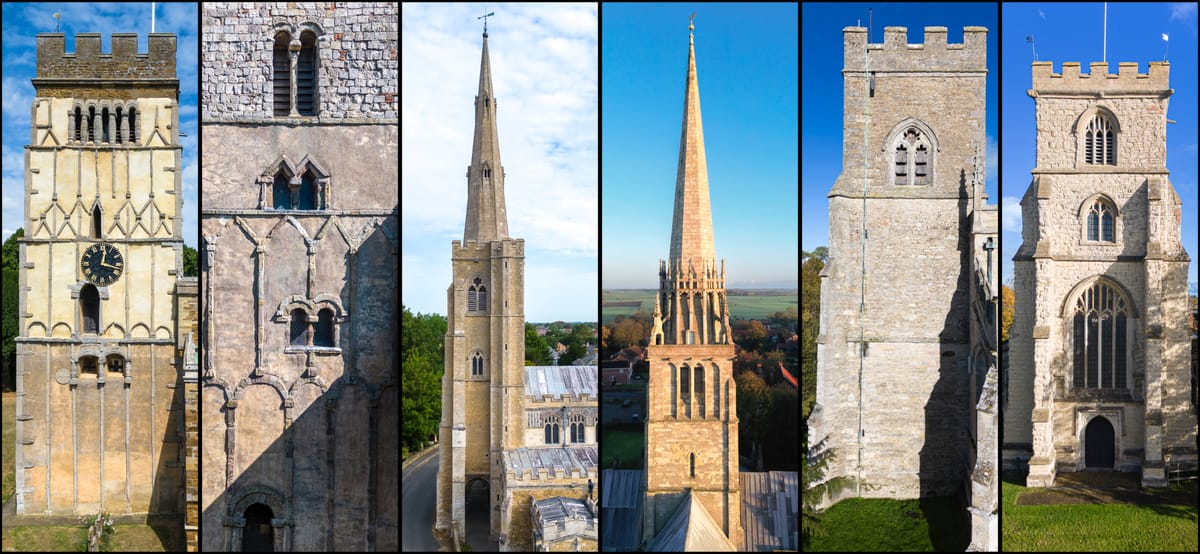
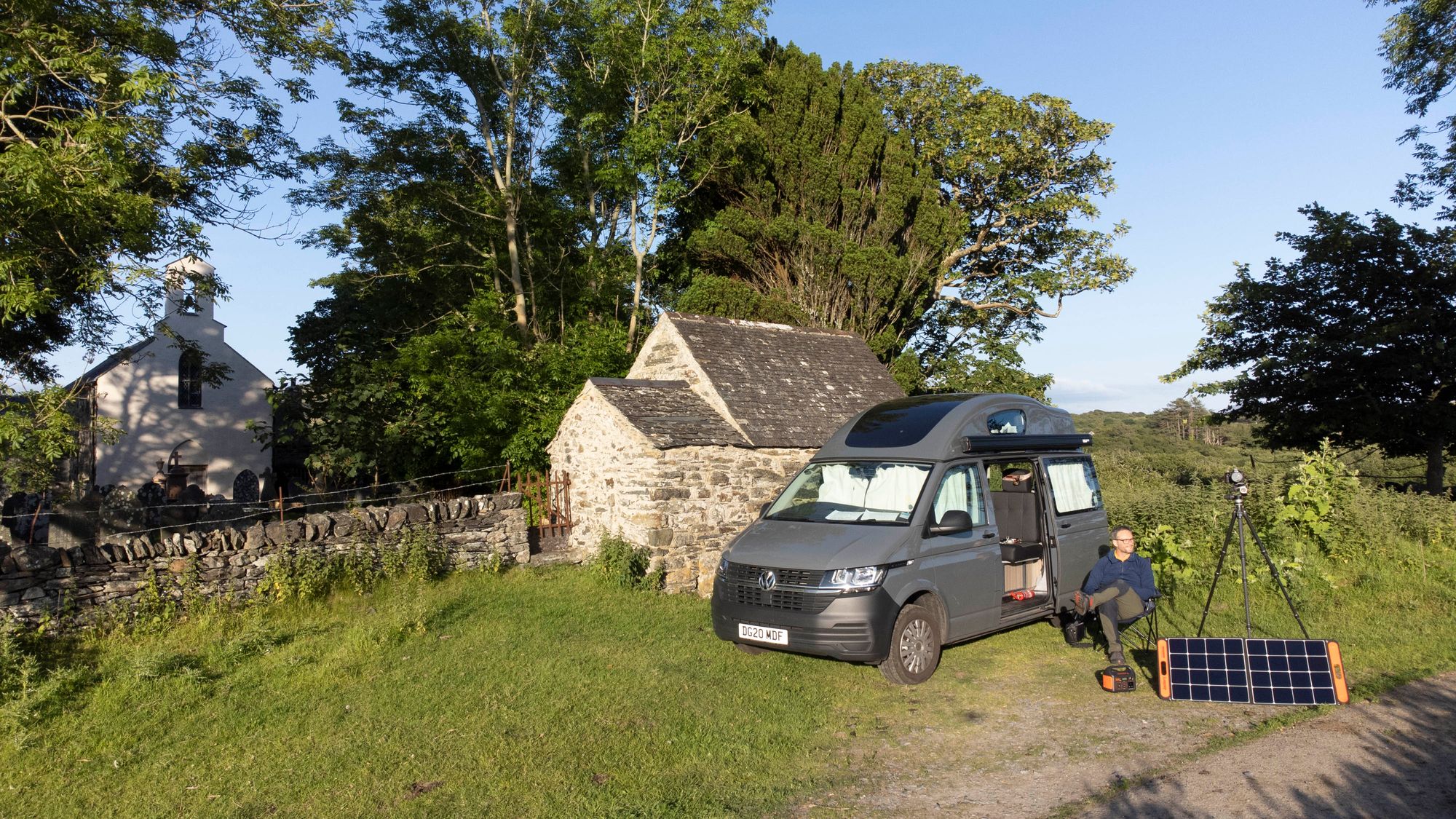
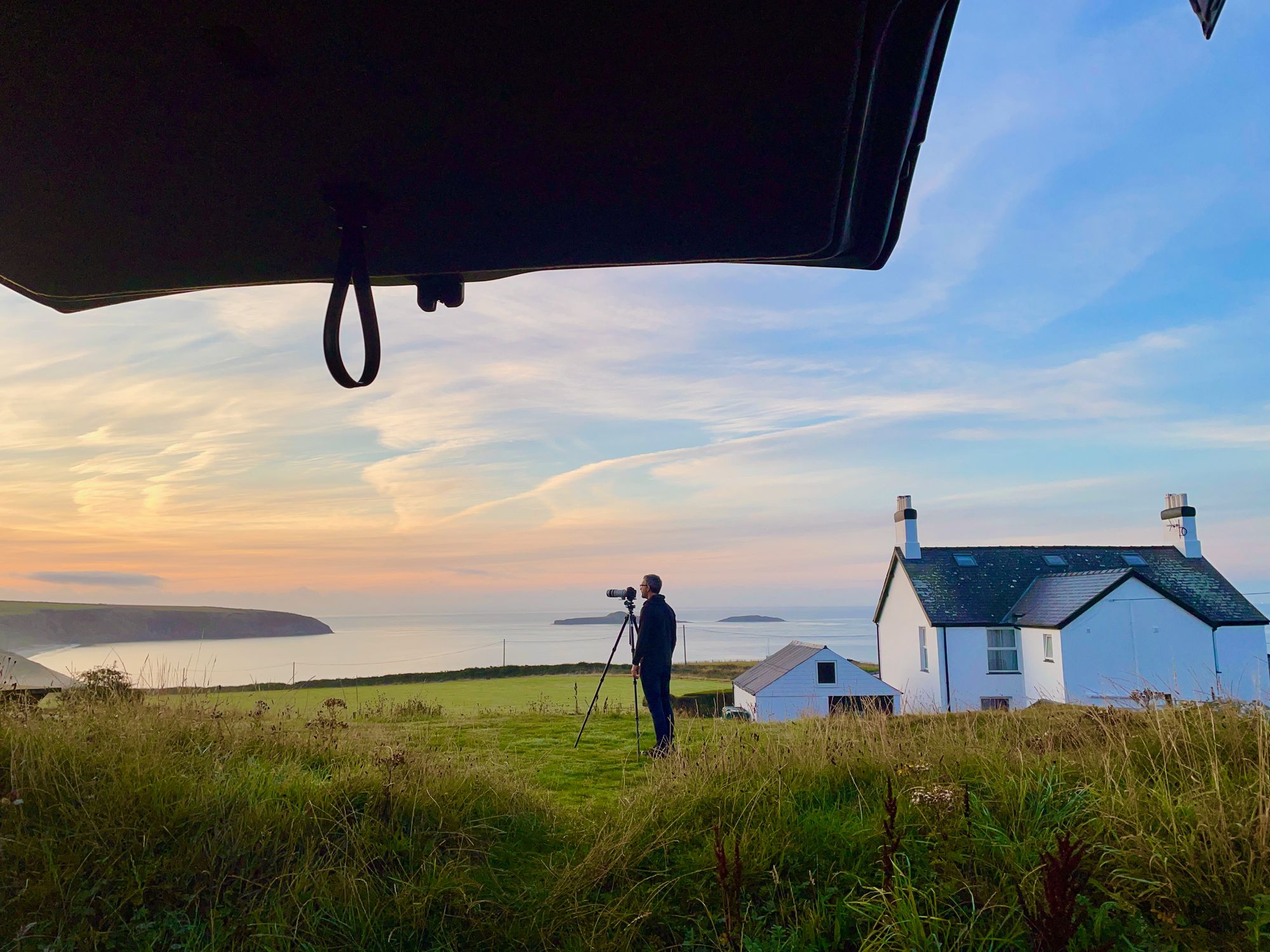
Recent Digest Sponsors:
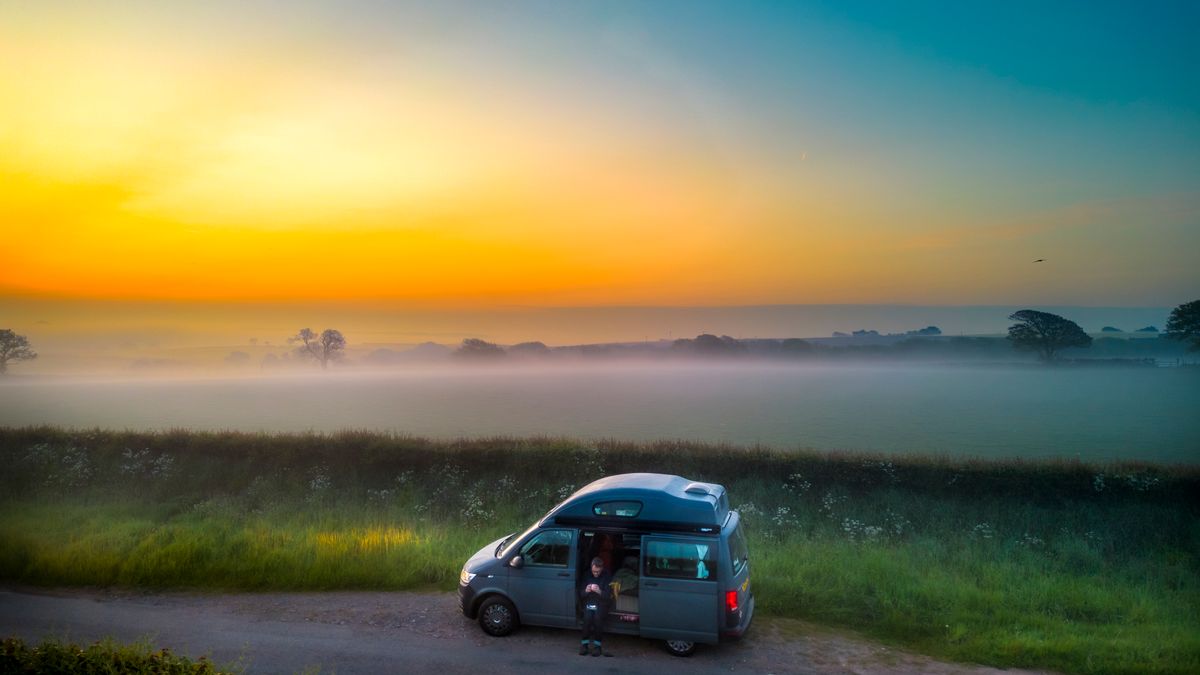
Remember the Twilight edition of the Digest with my door Christmas Tree decorations?
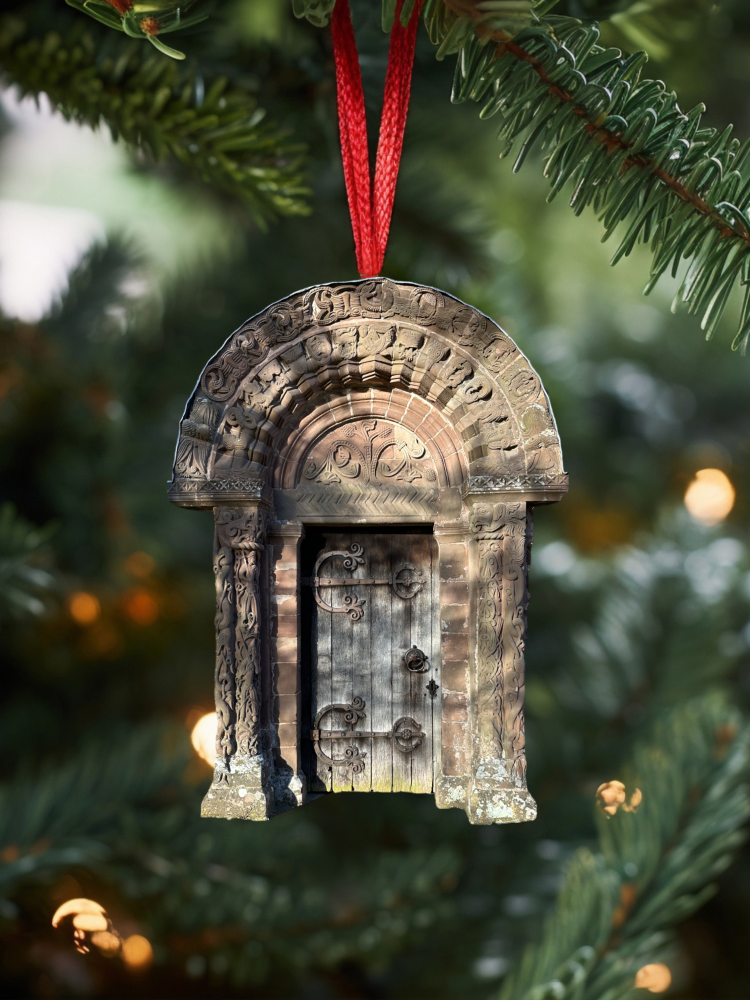
Cameron Chapman who is a remarkable sculptor from Queensland, Australia is making a relief of the door at Kilpeck. He's just started the work and here's a glimpse of the early stages.
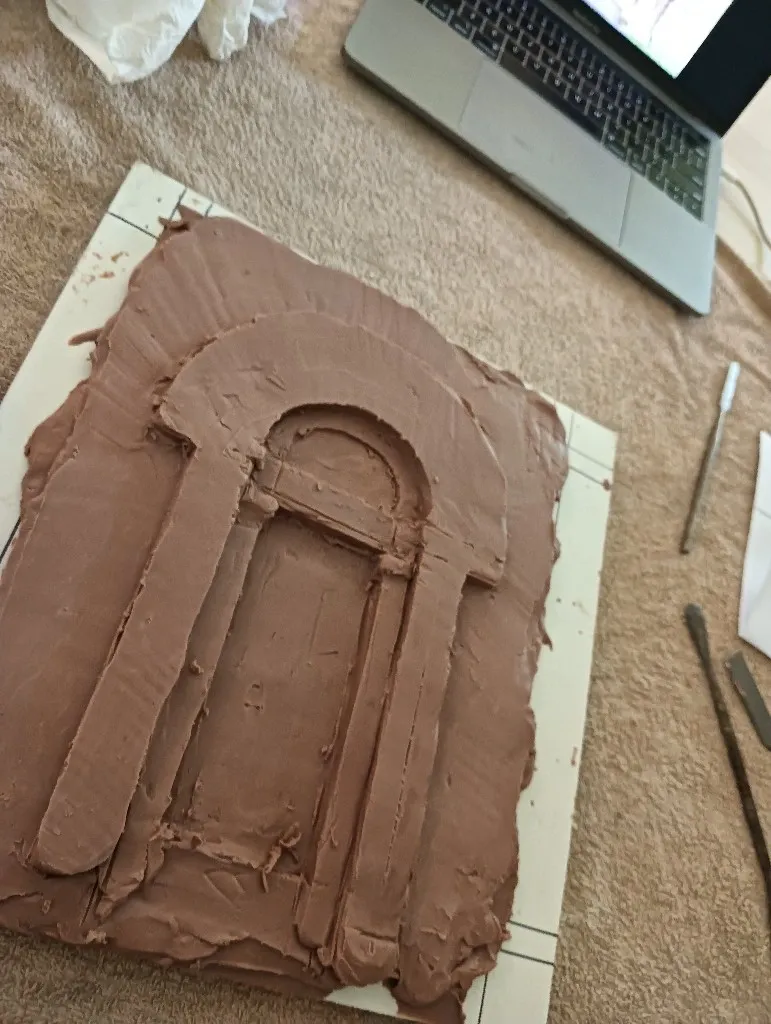
I put my heart and soul into the Genius Loci Digest and it takes a day a week to produce. With your support, I’m able to keep this digest free and public facing. 📸🏛🚐
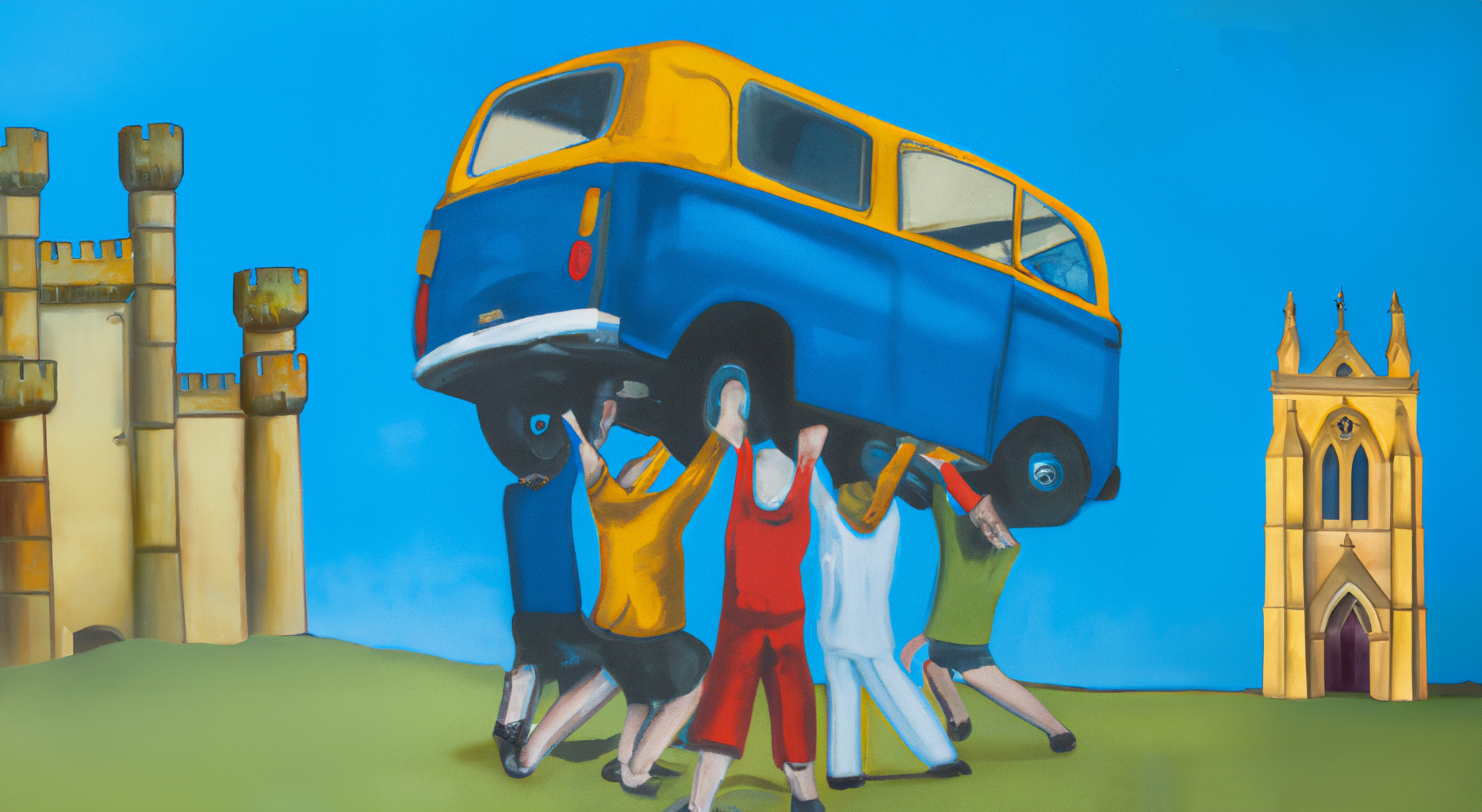
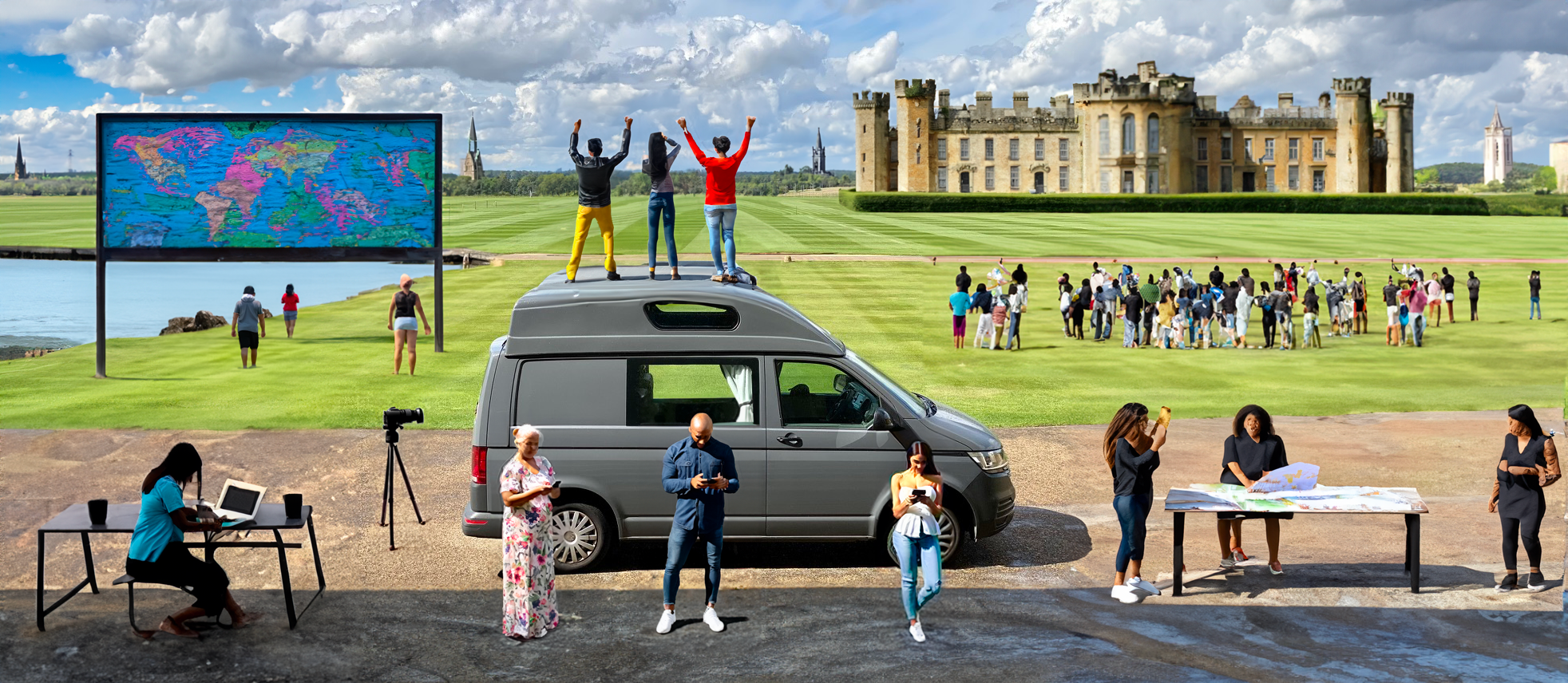
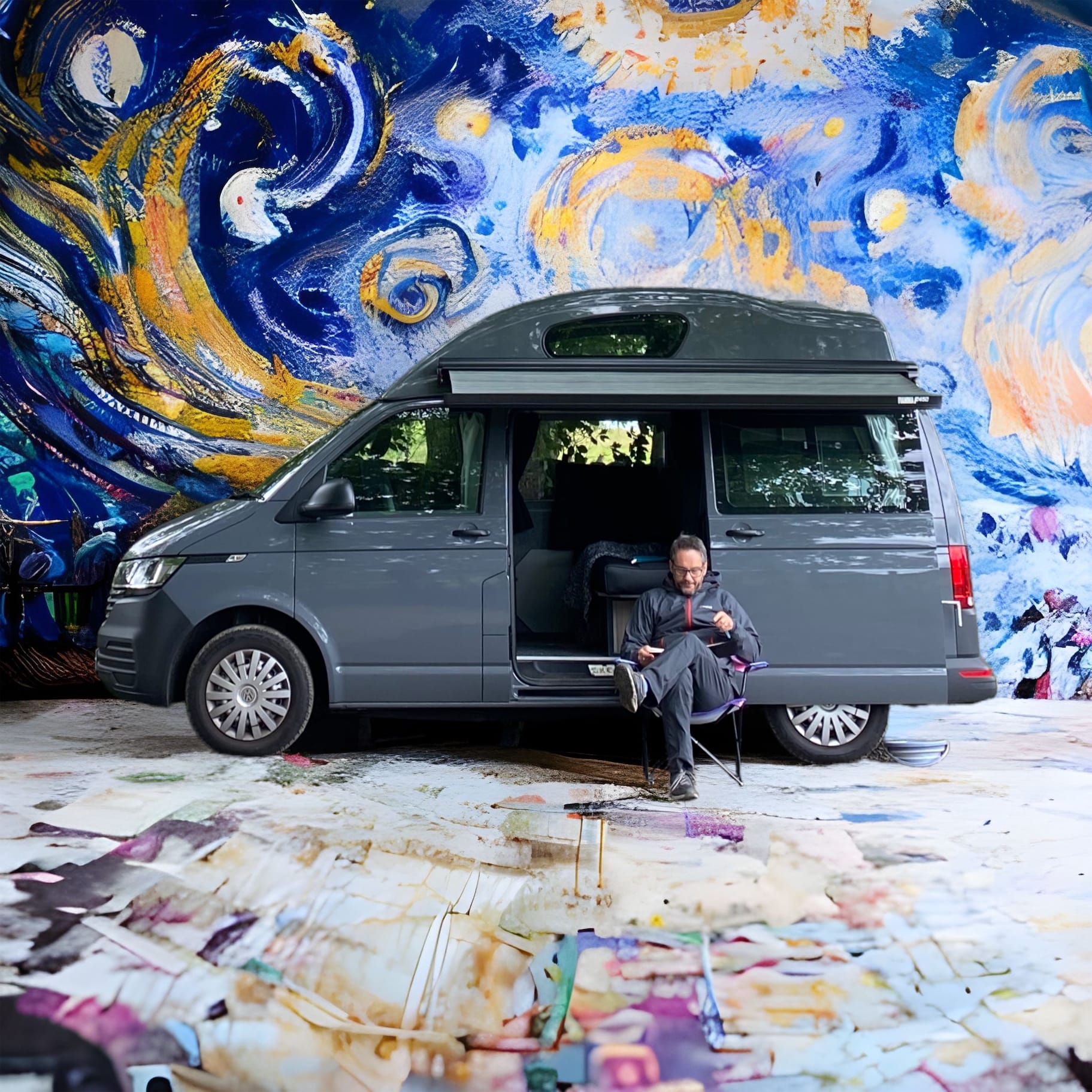
Sponsor a Membership and get your own landing page on the Digest
More information hereThank You!
Photographs and words by Andy Marshall (unless otherwise stated). Most photographs are taken with Iphone 14 Pro and DJI Mini 3 Pro.


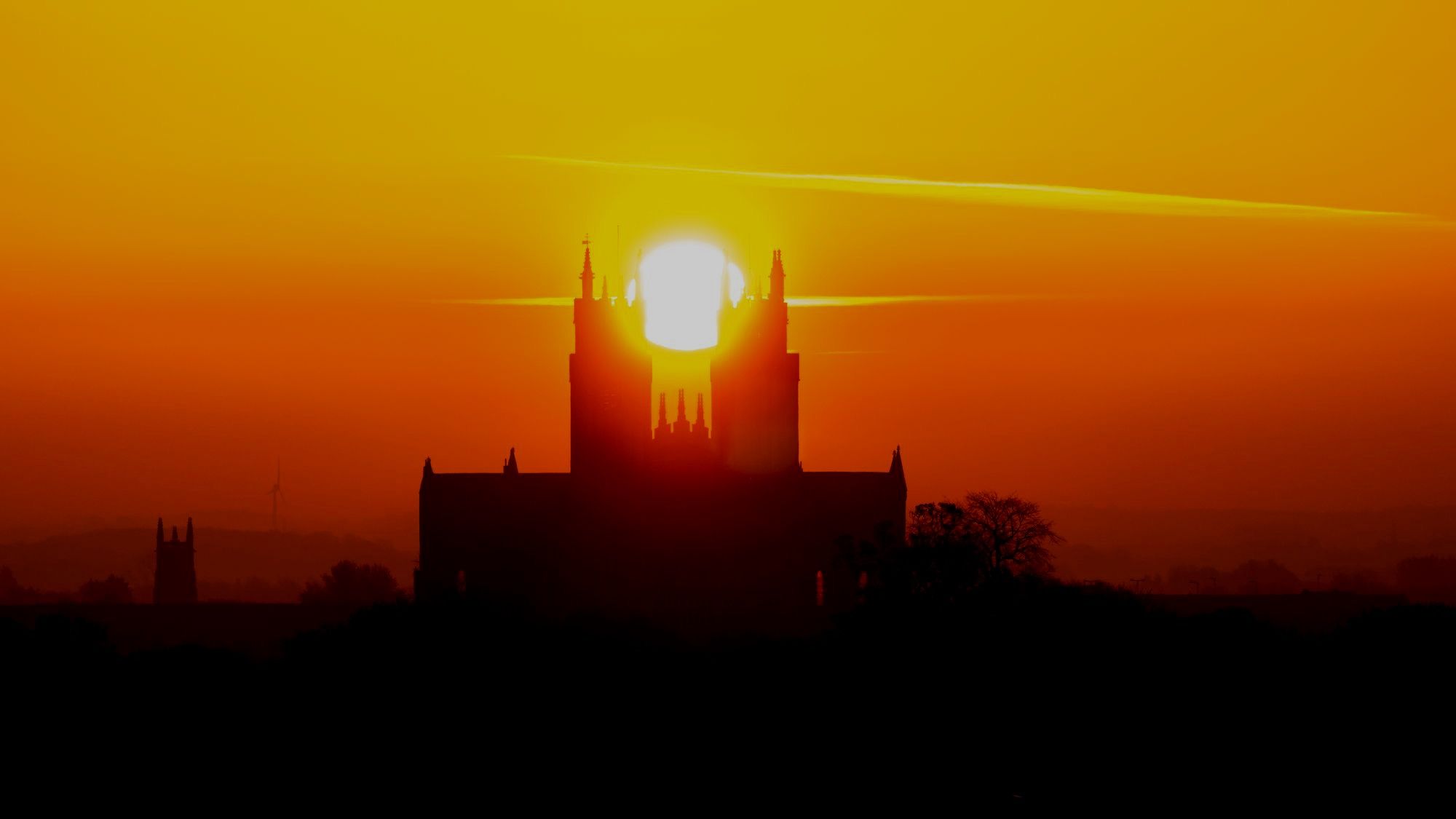










Member discussion